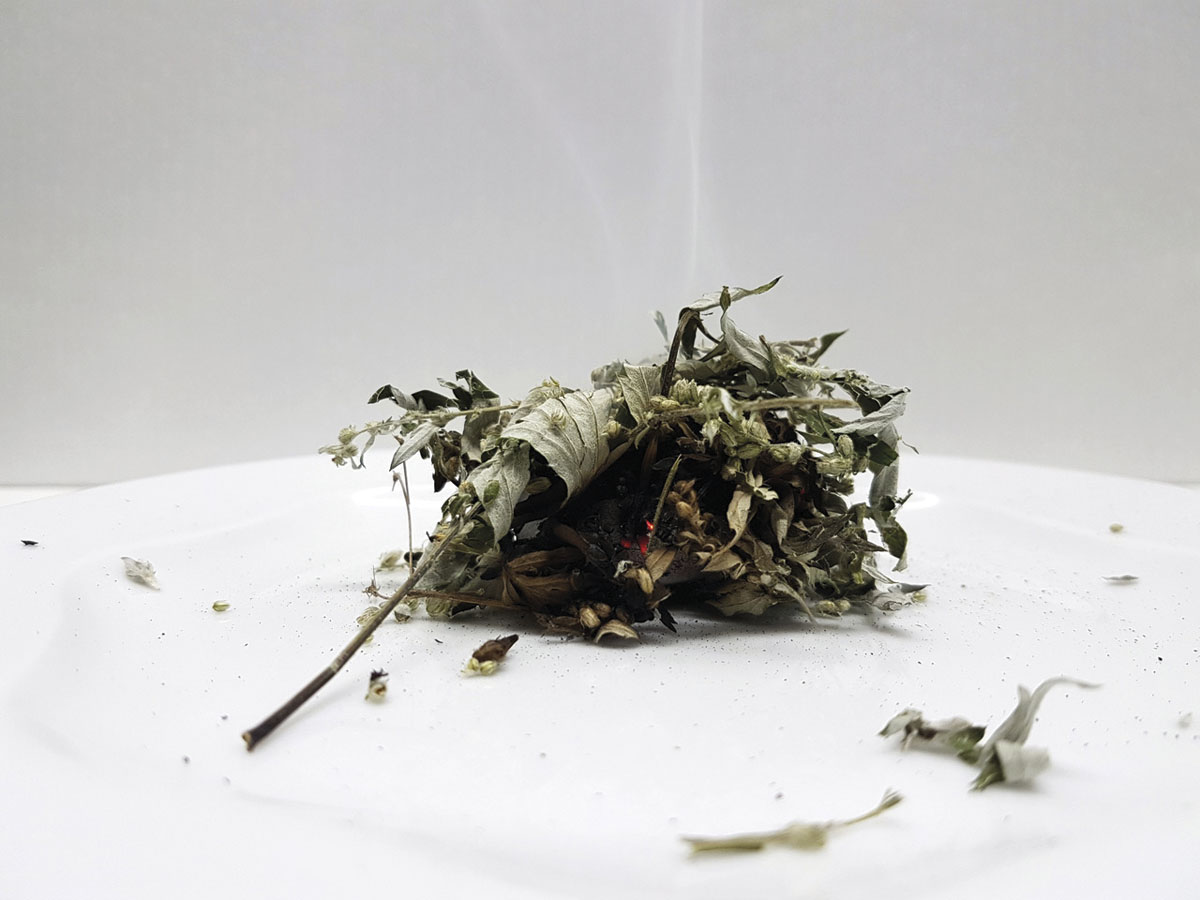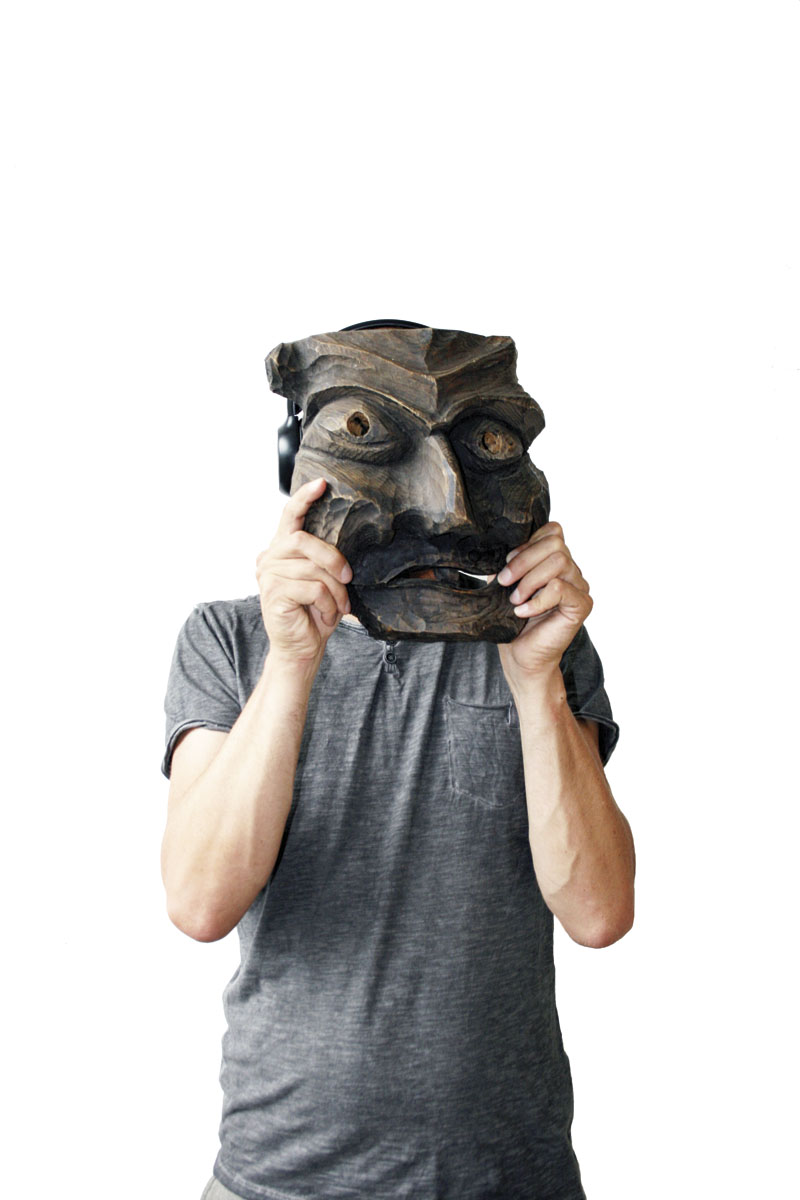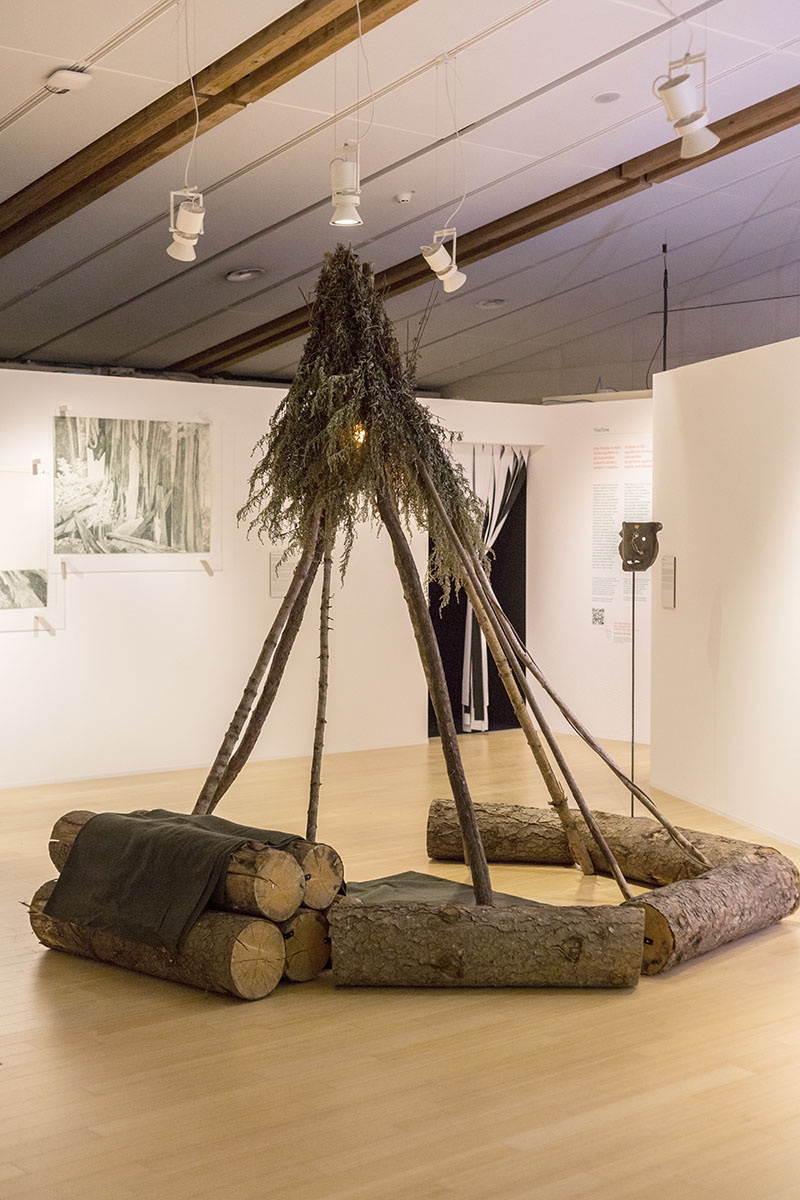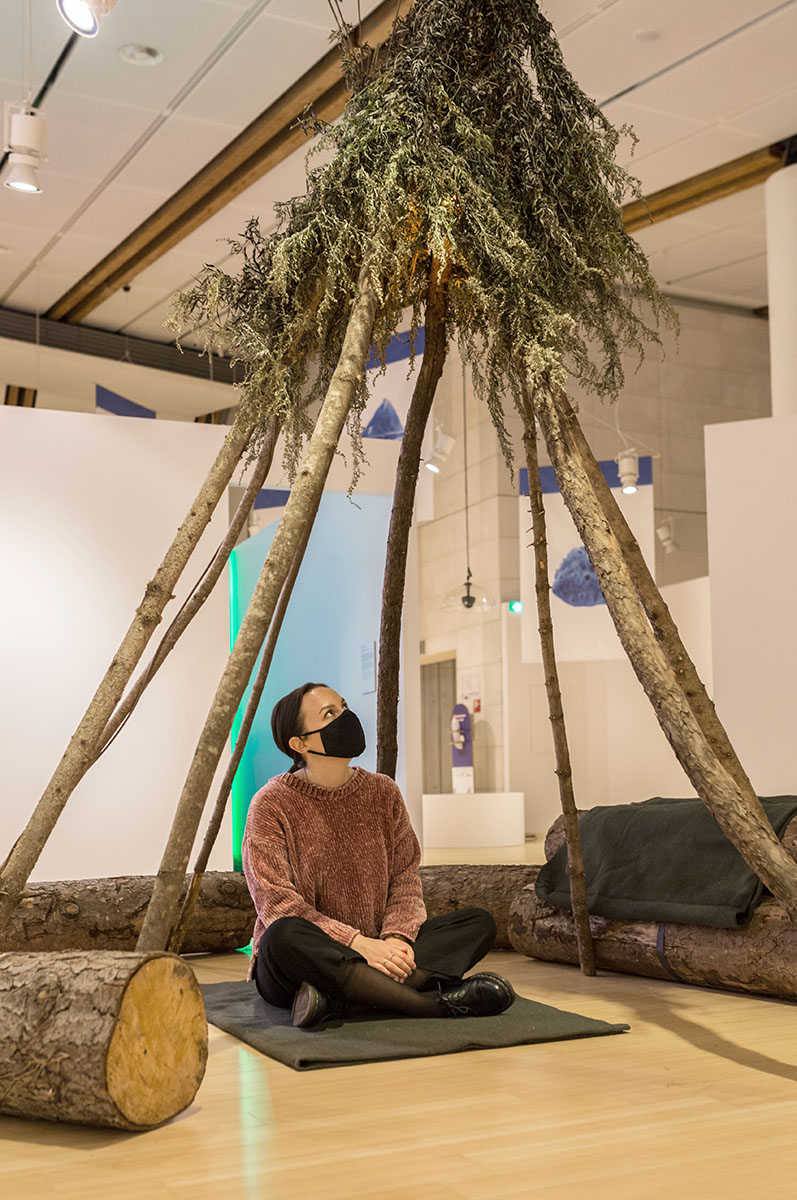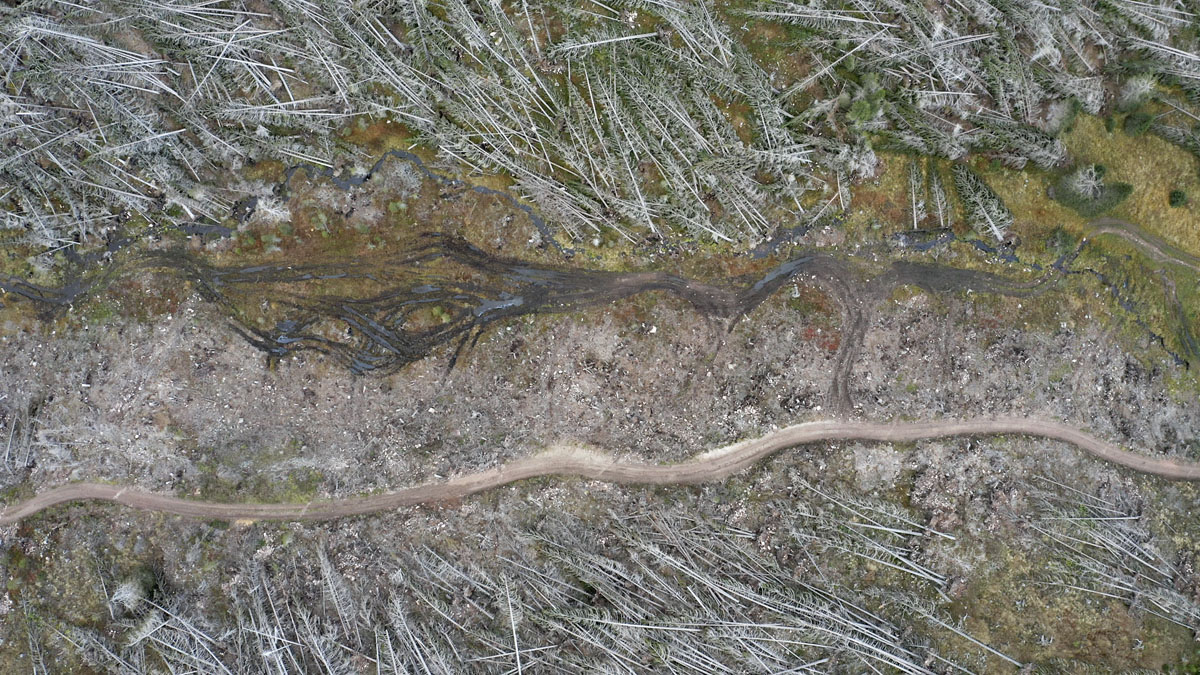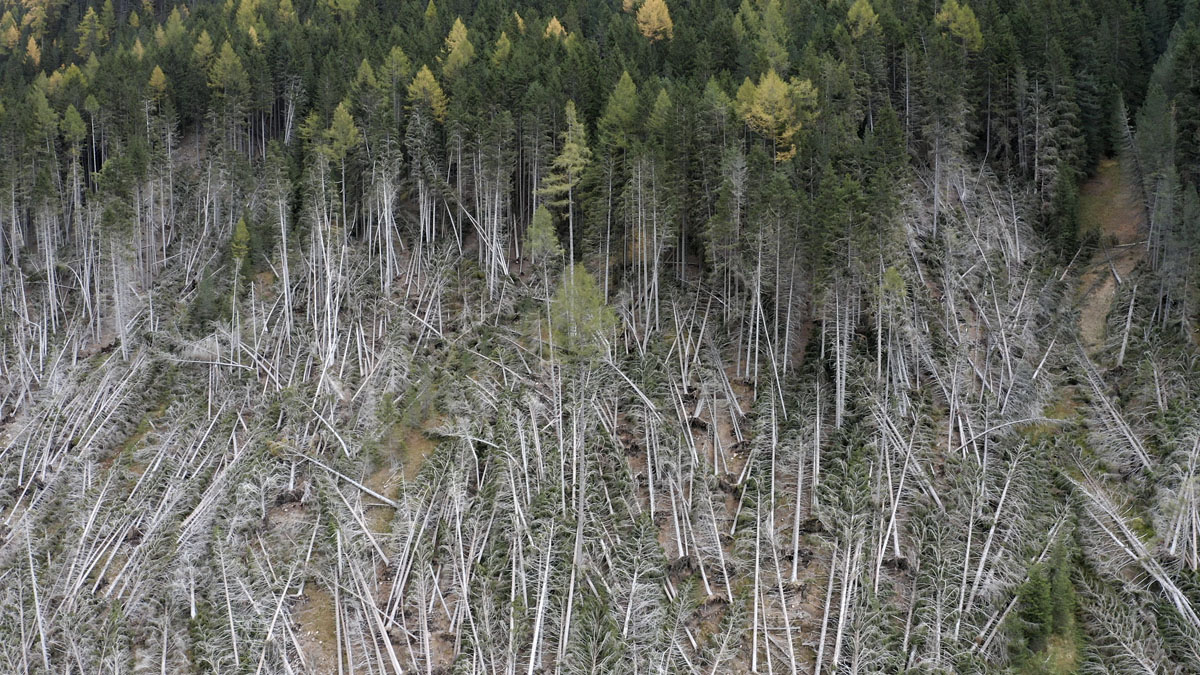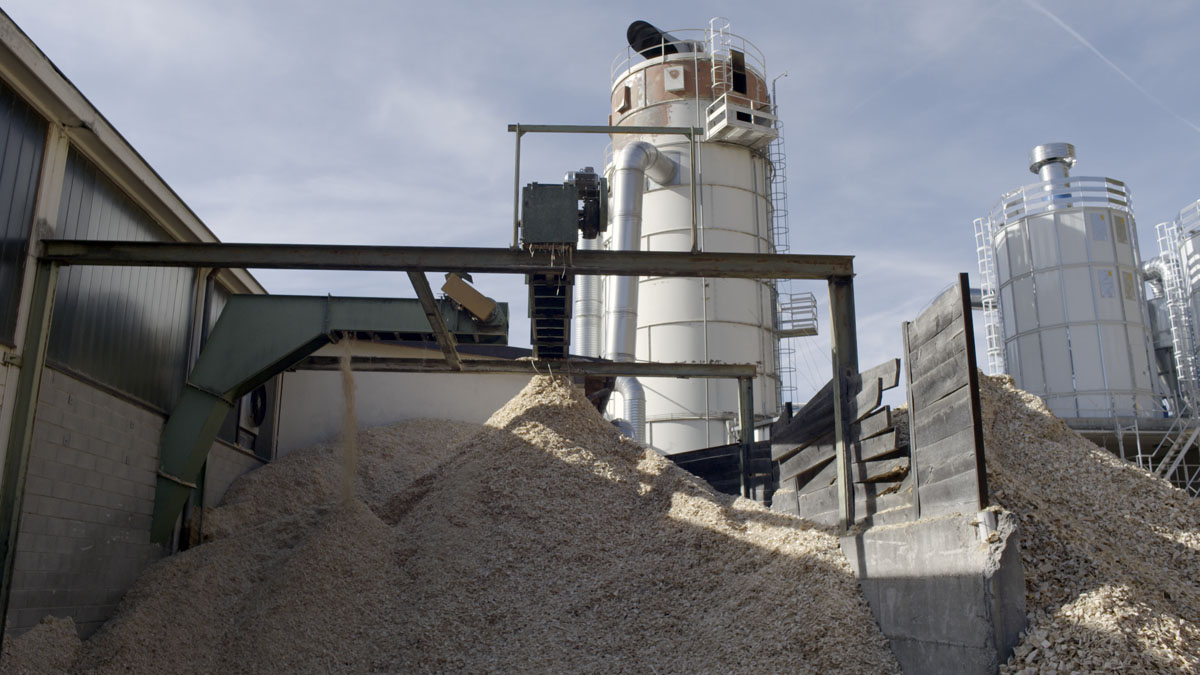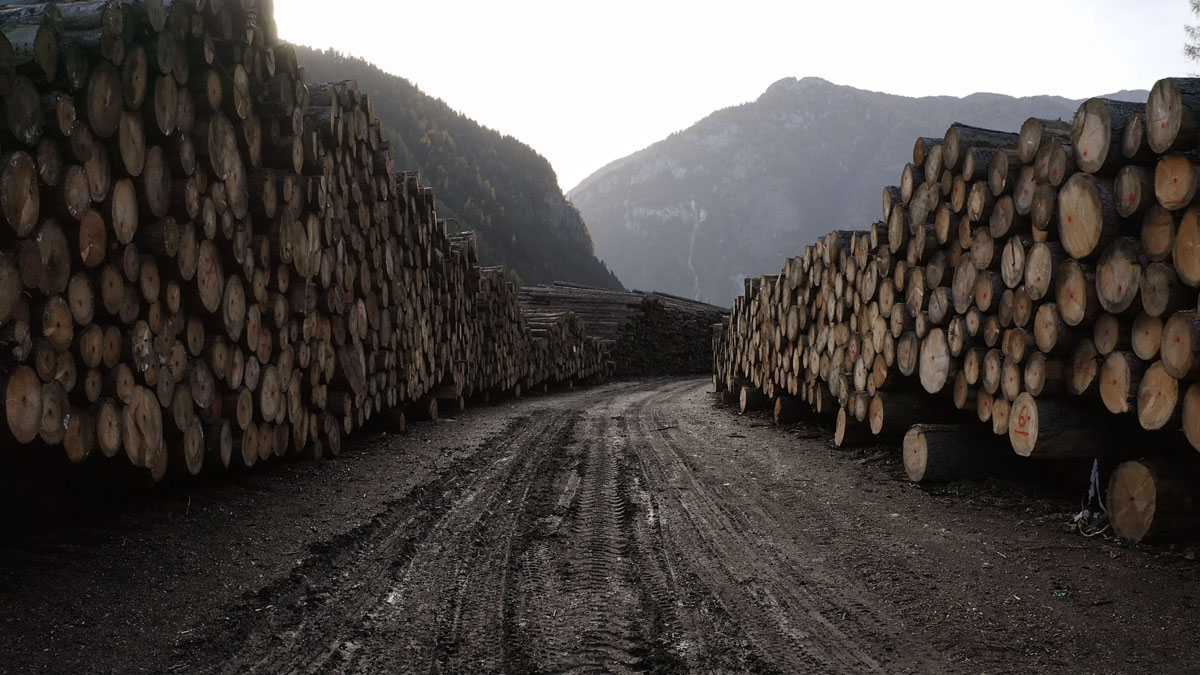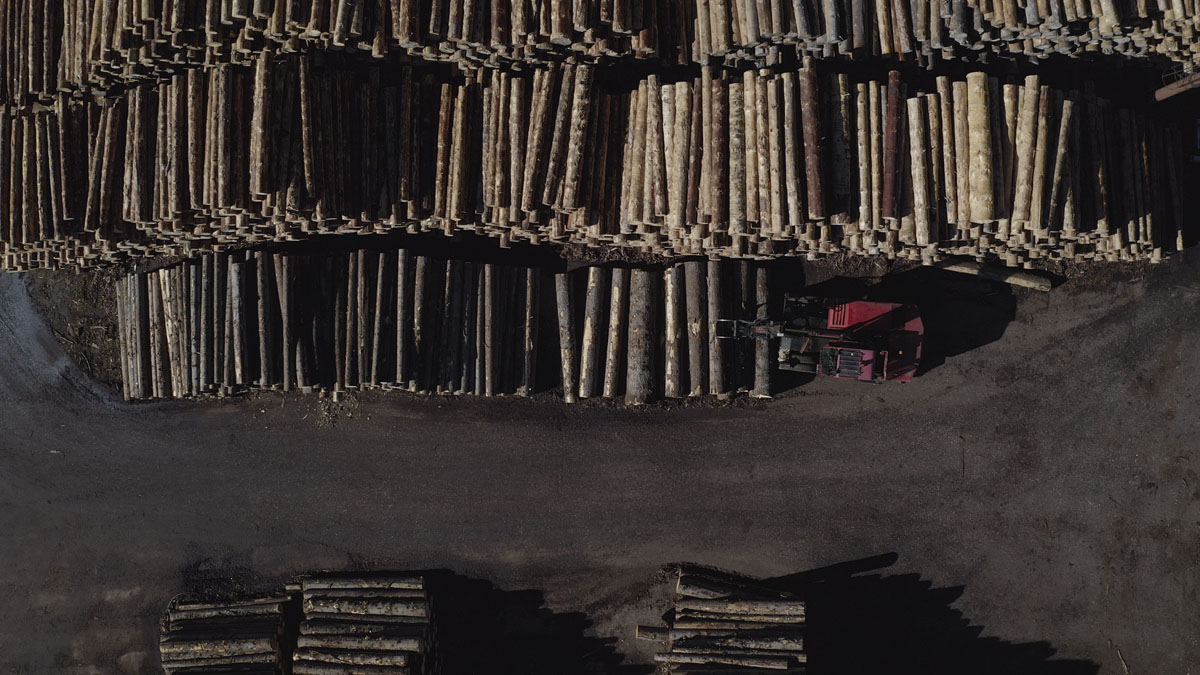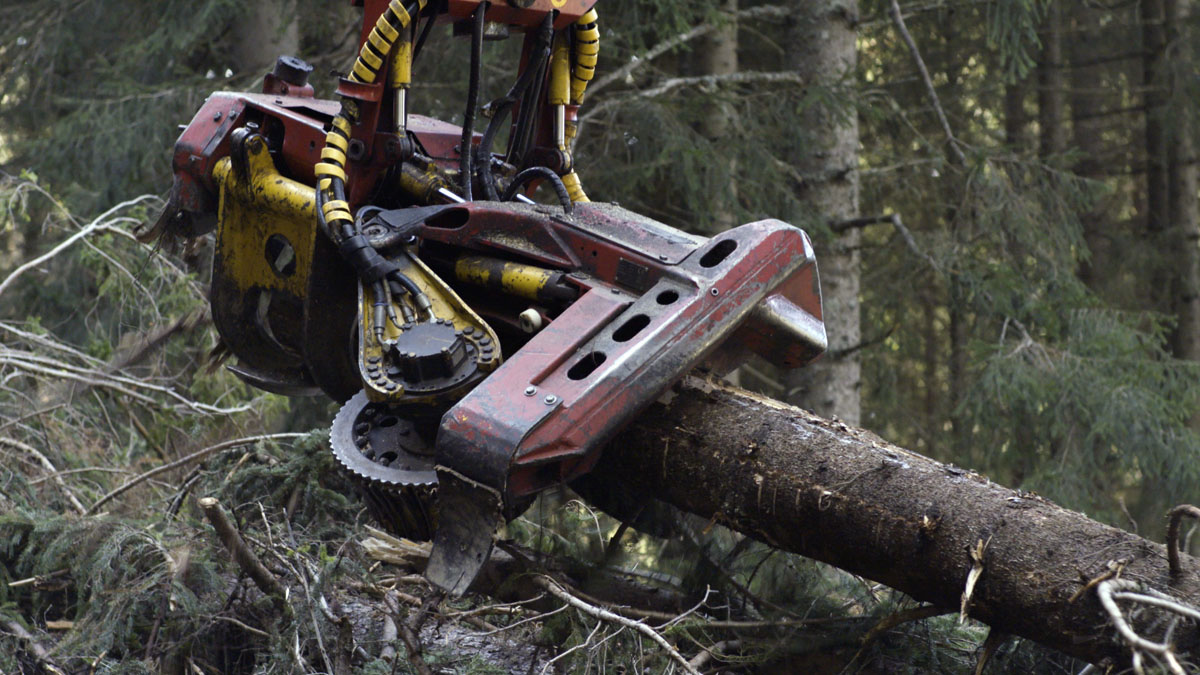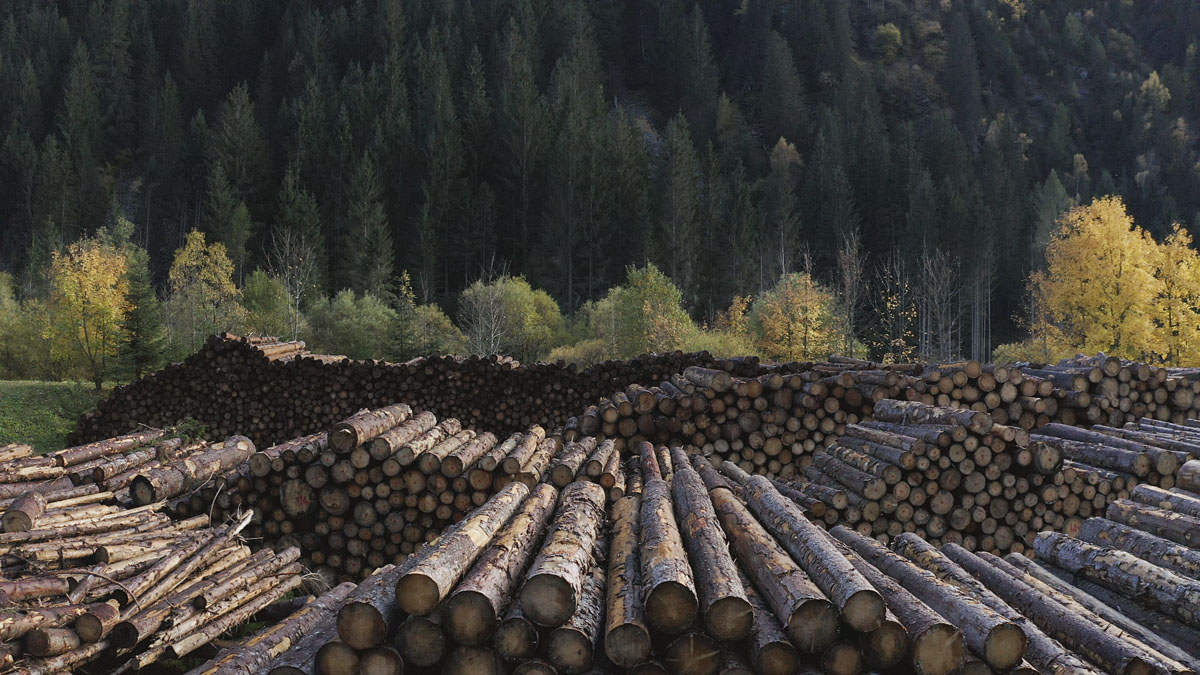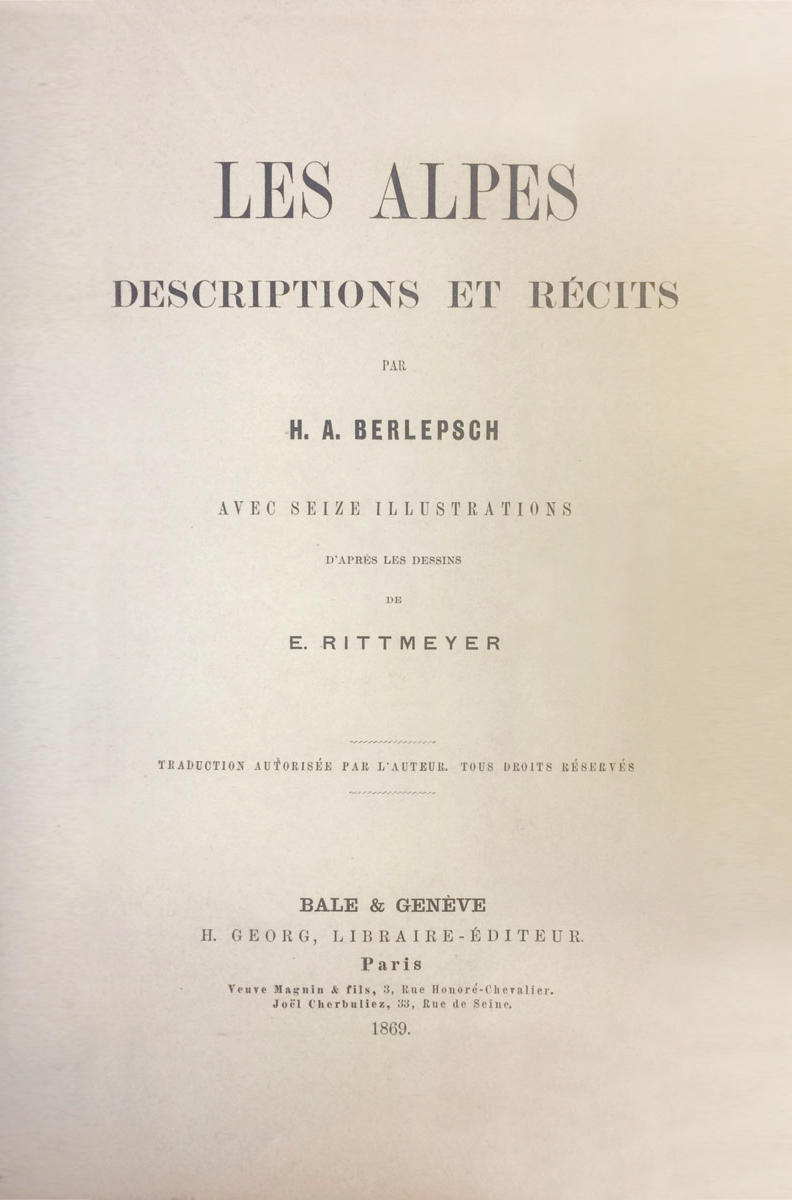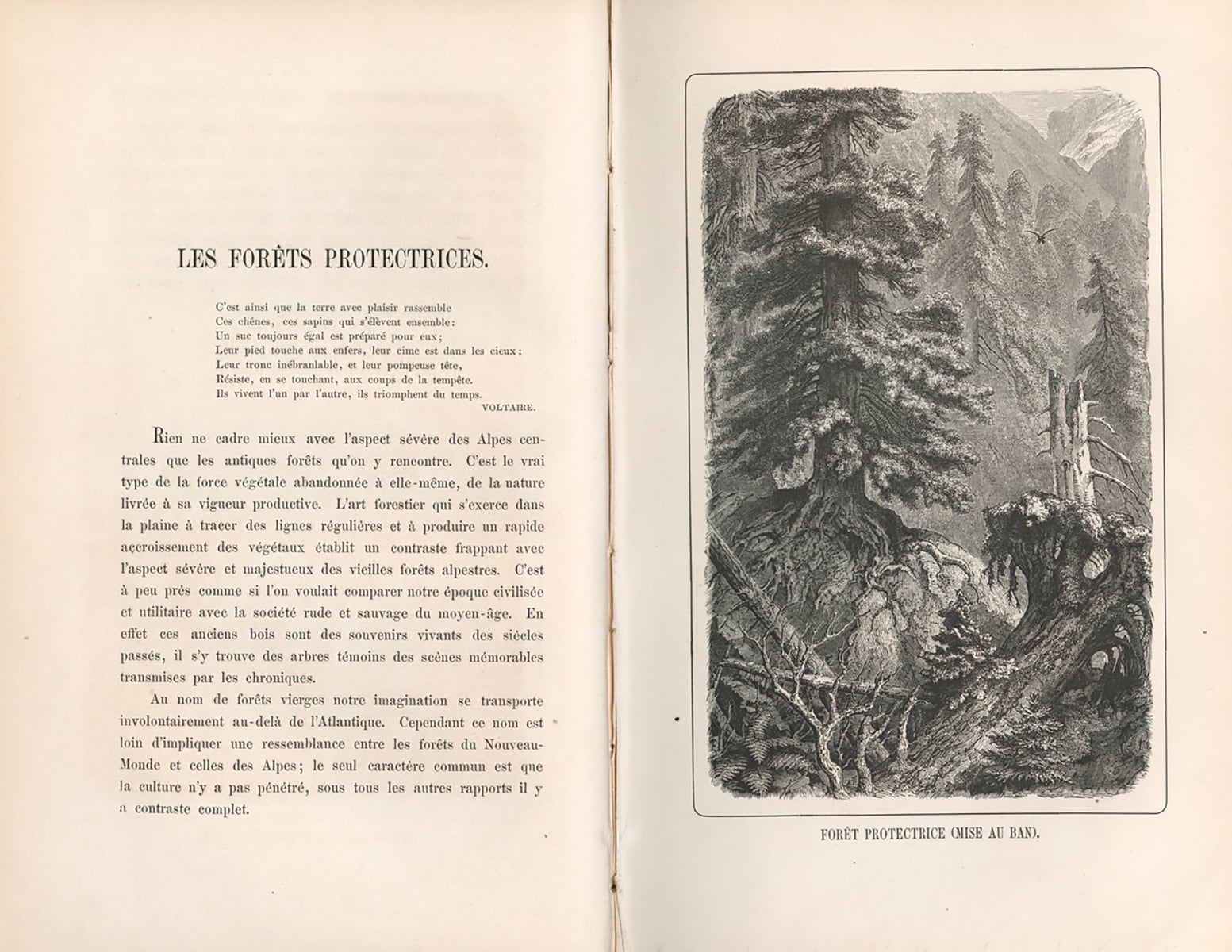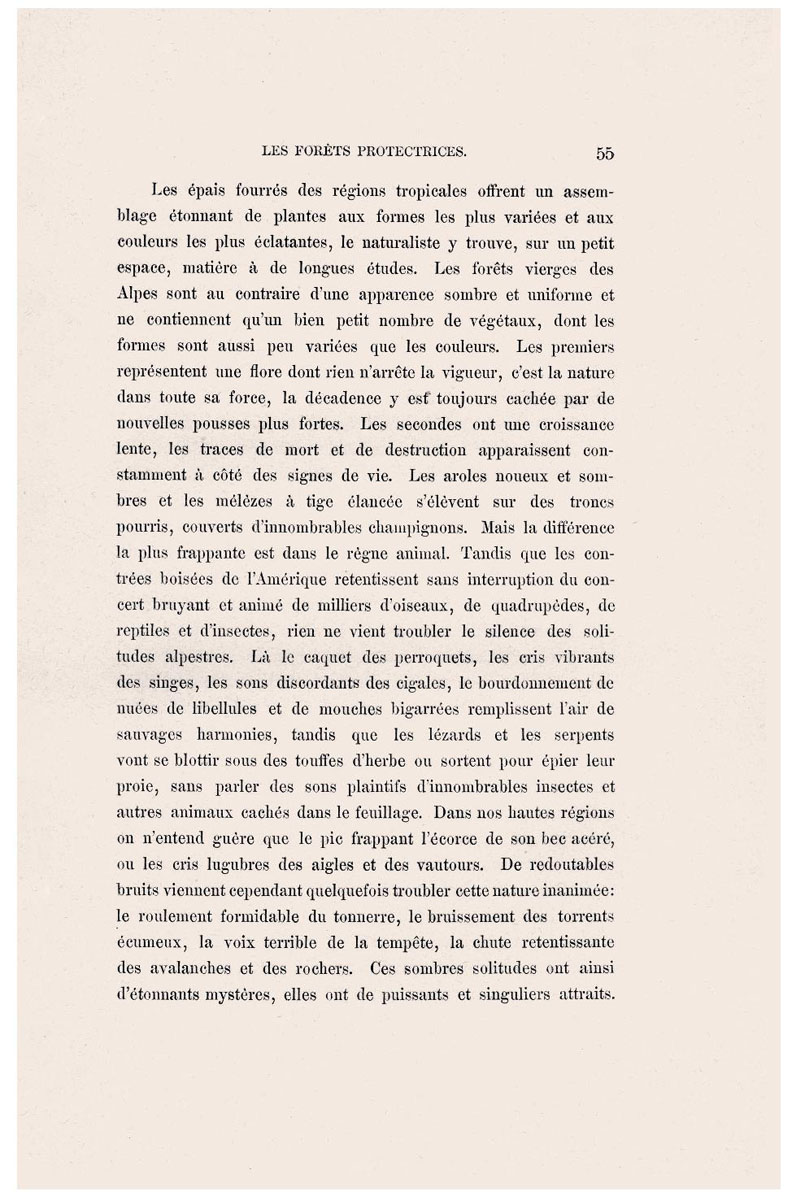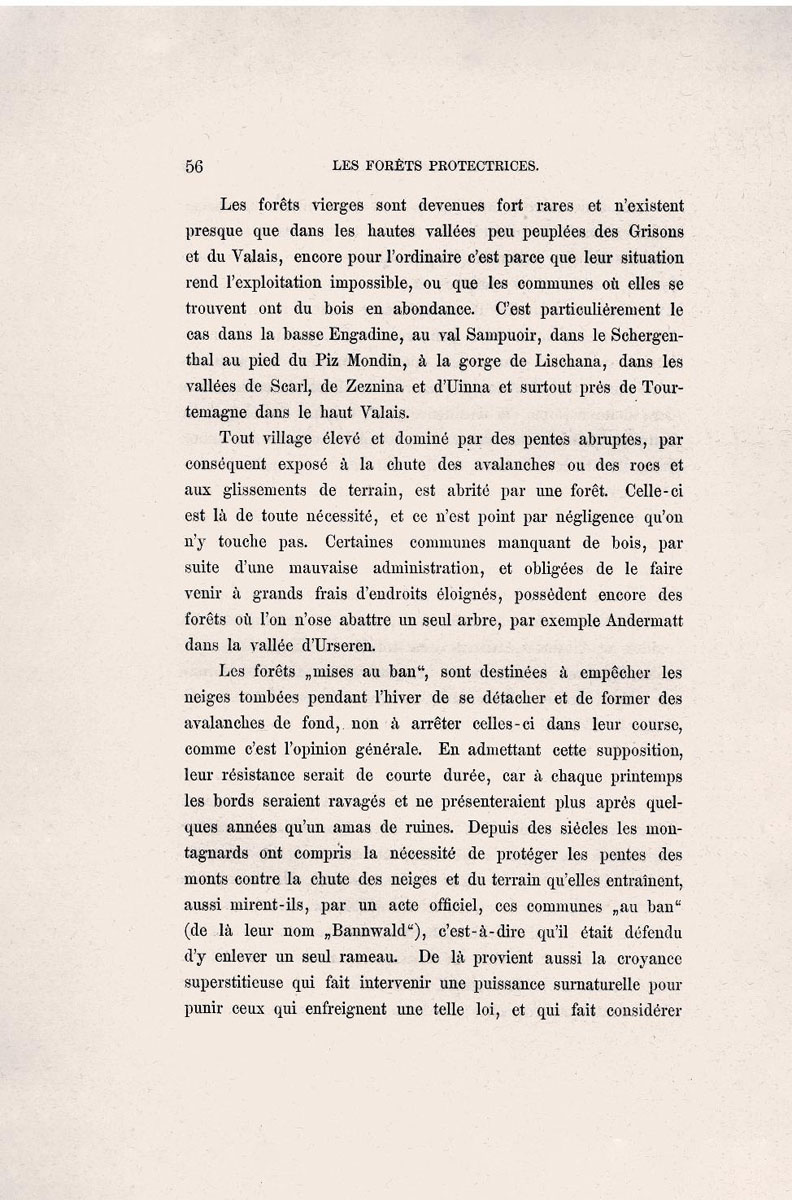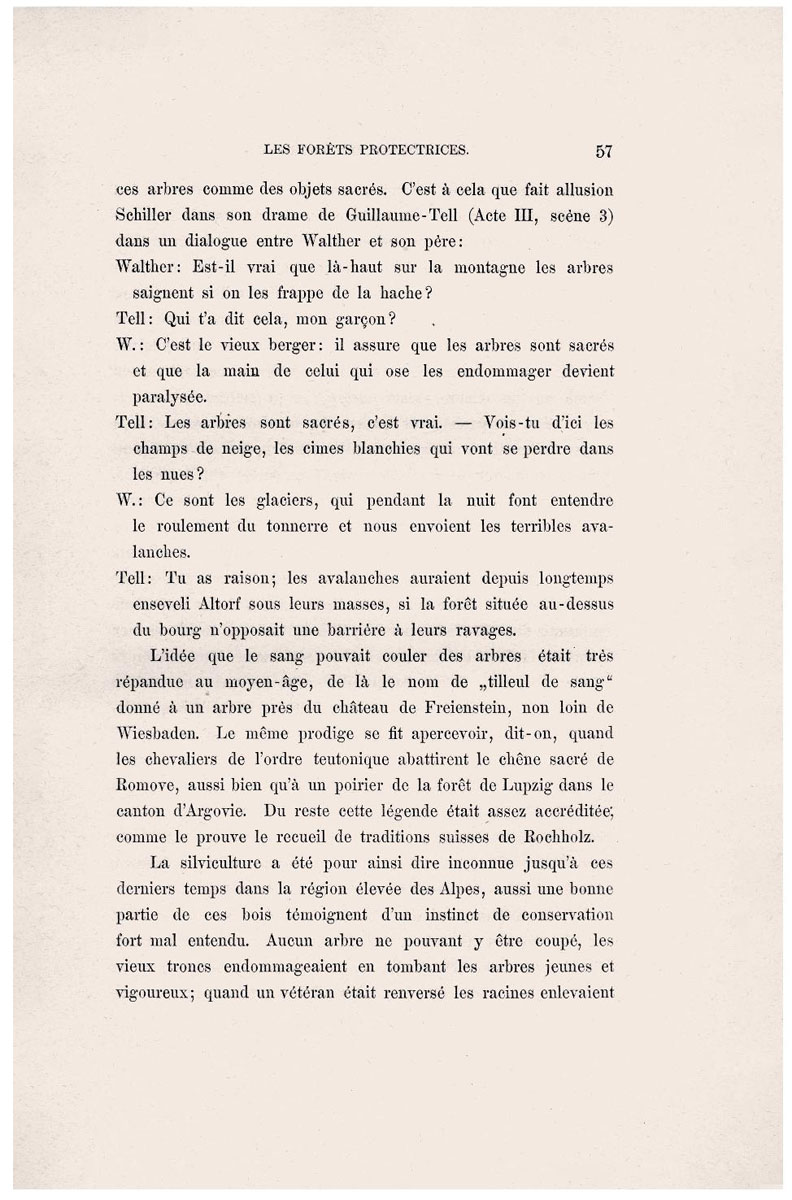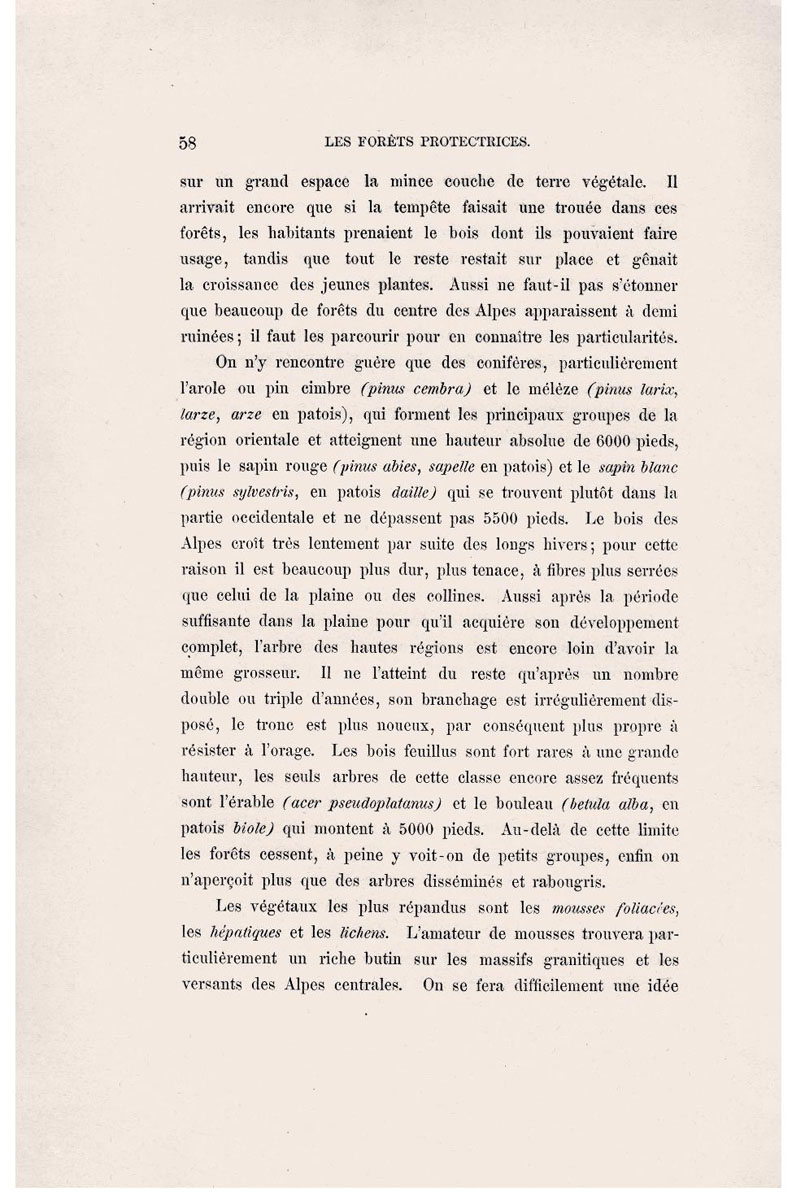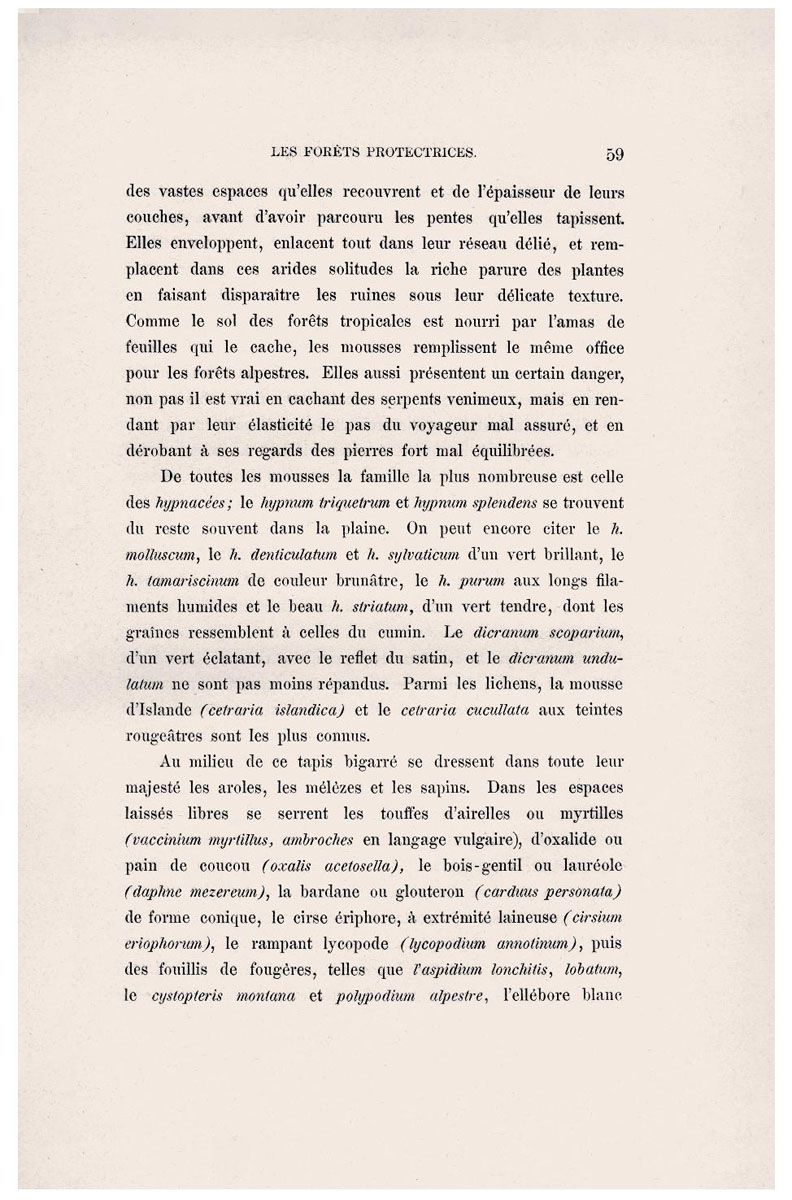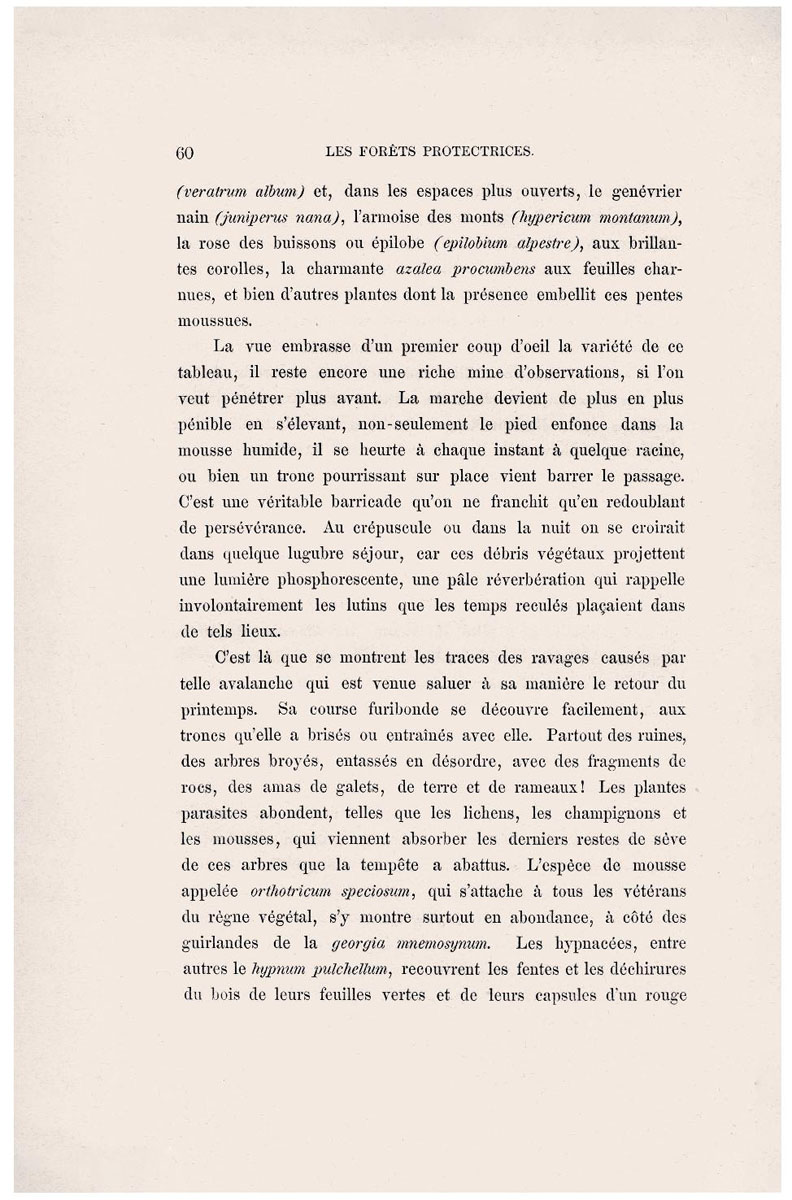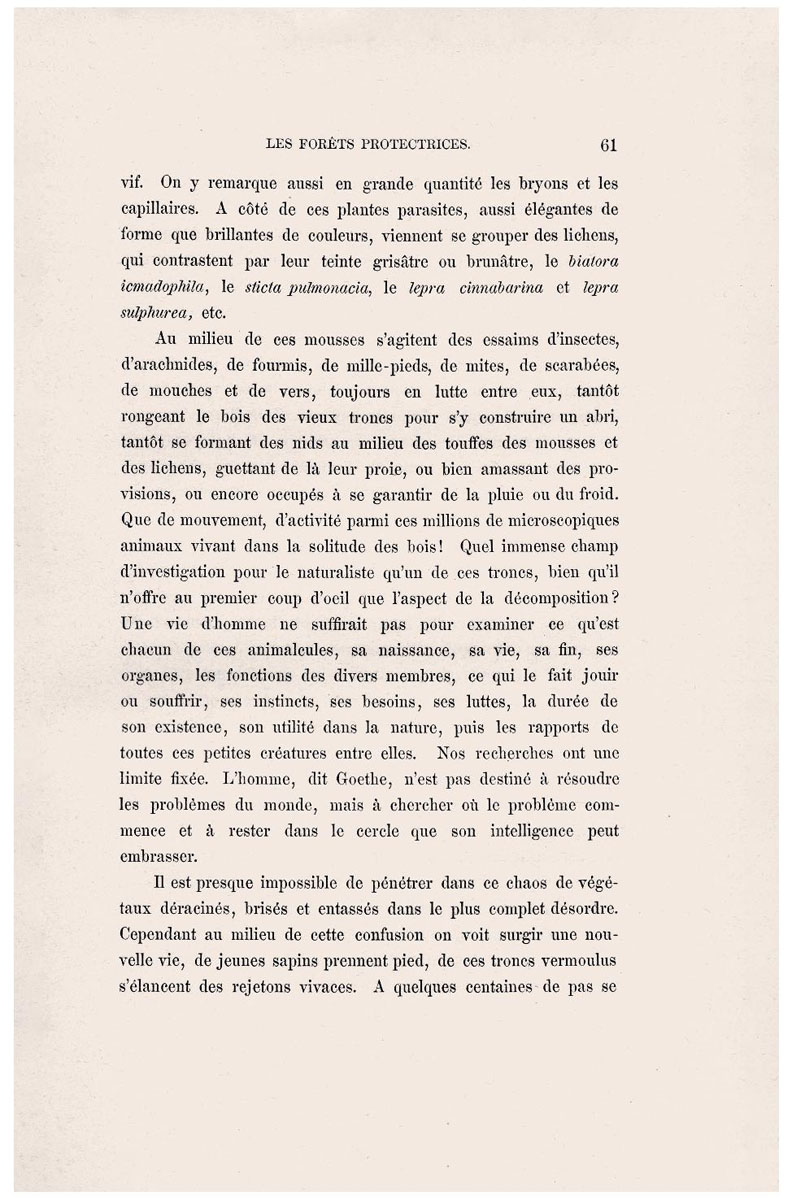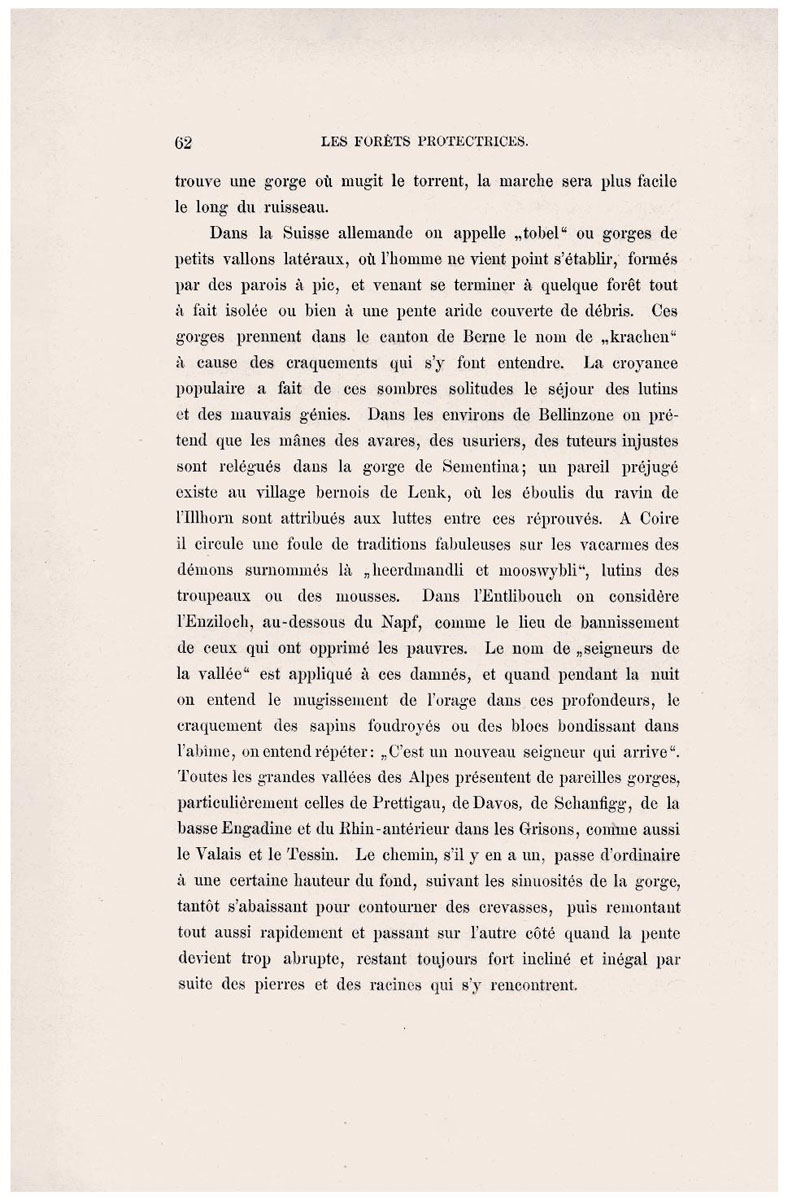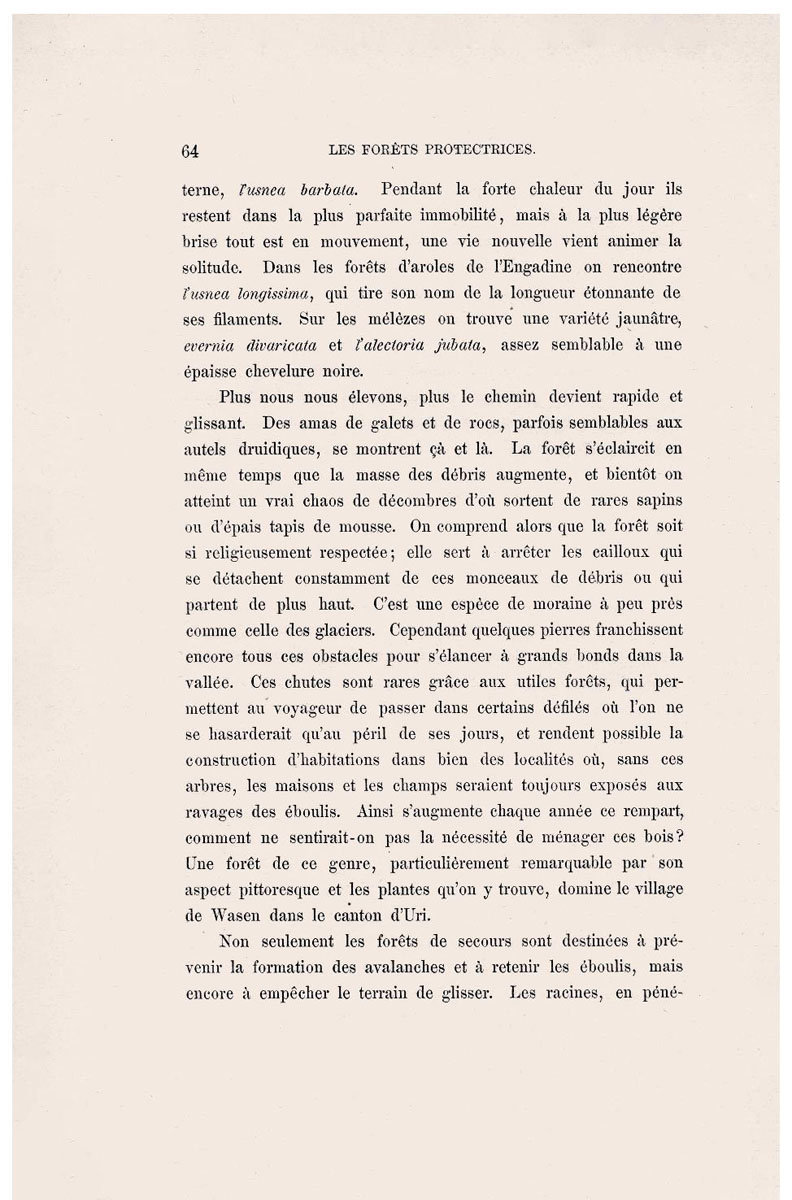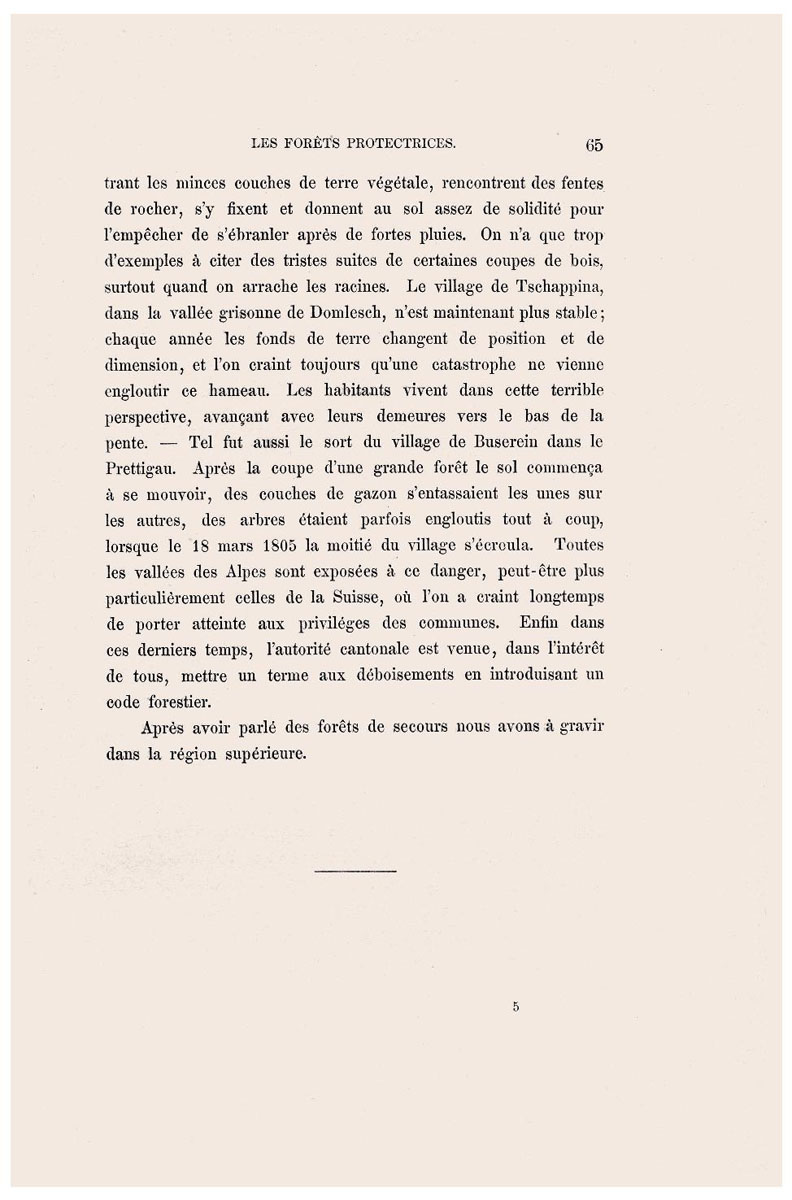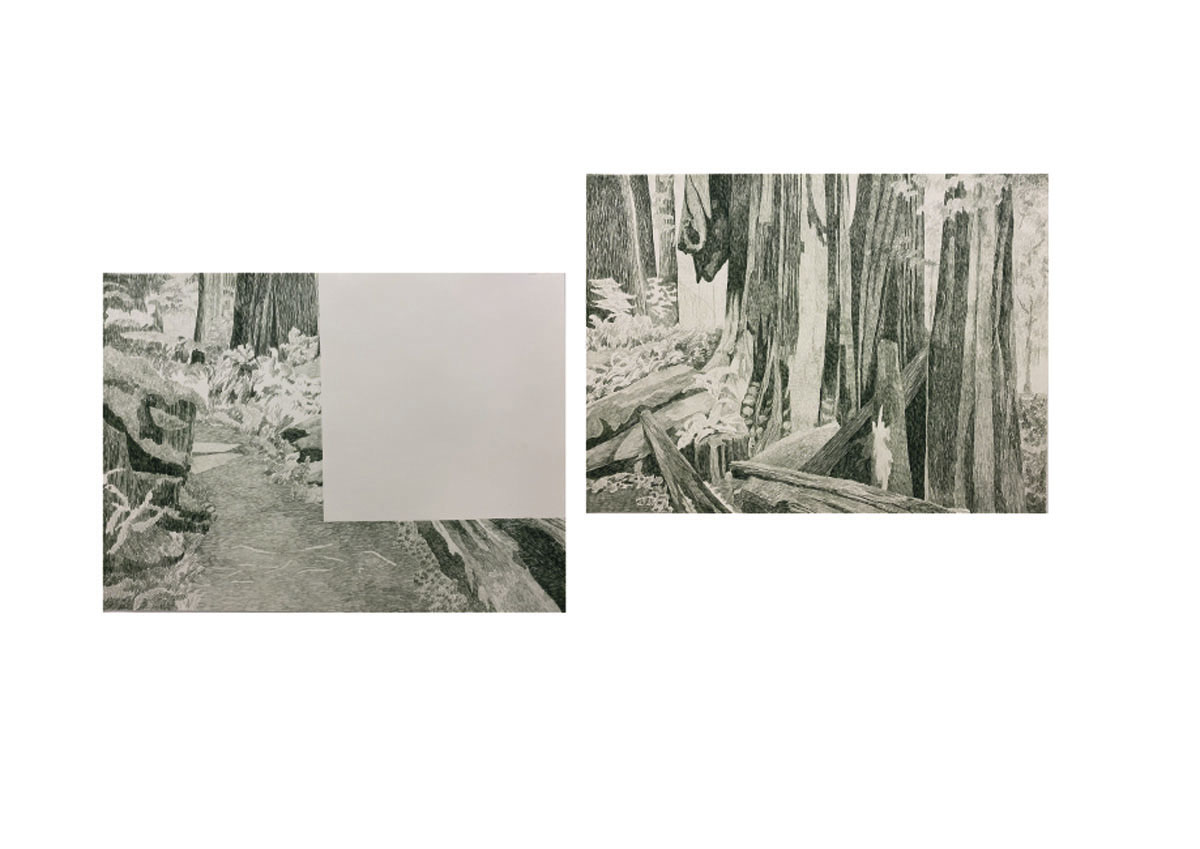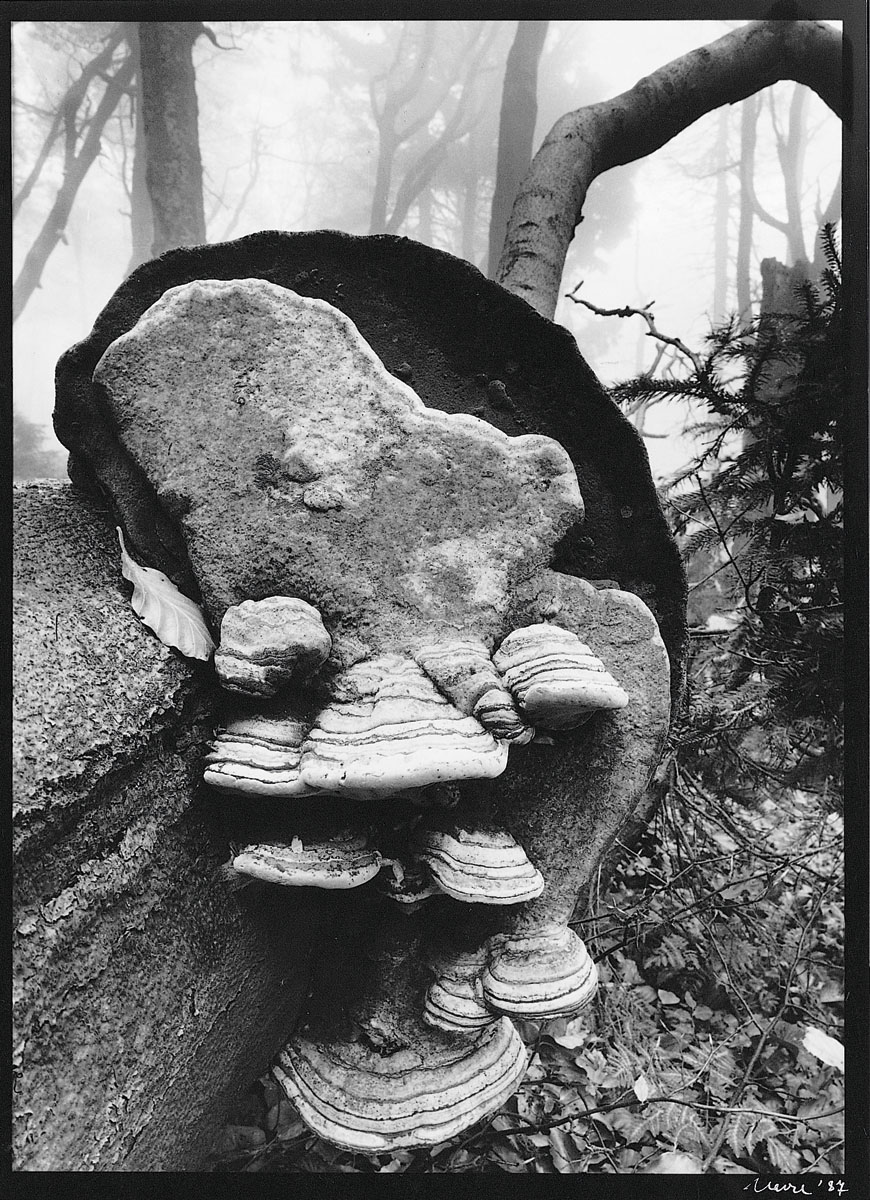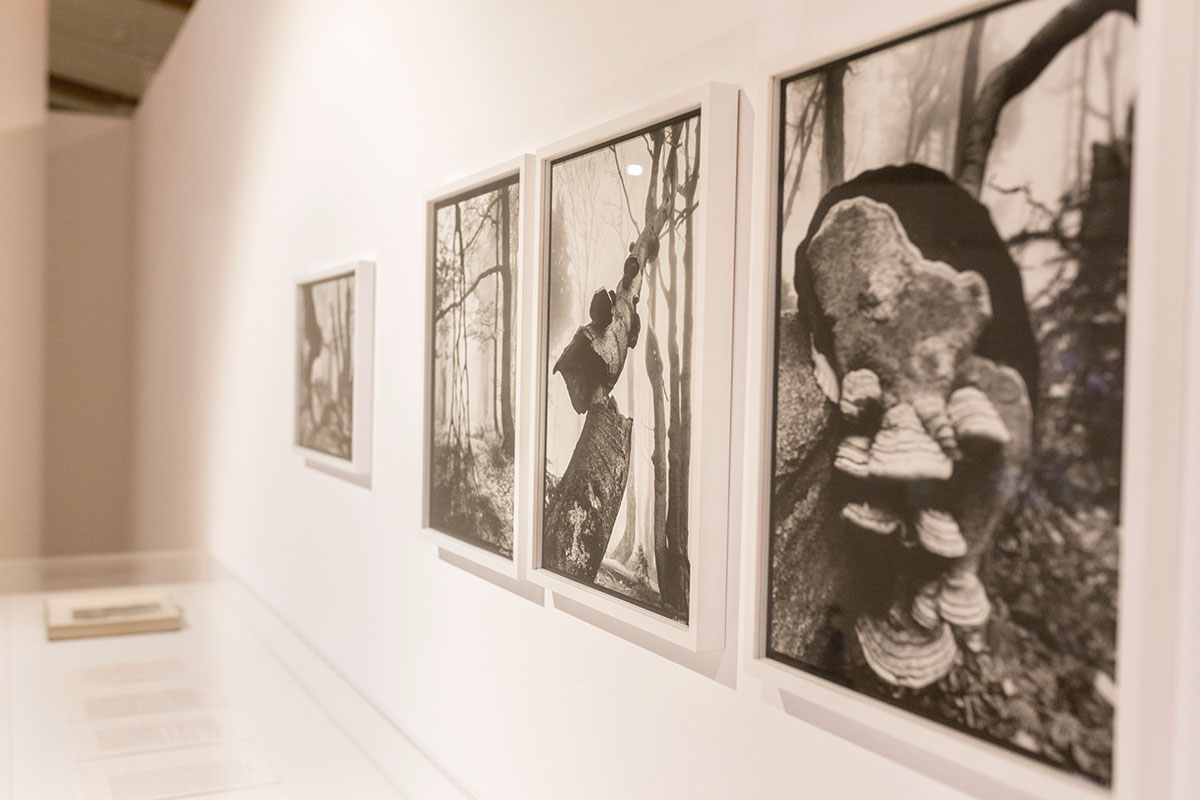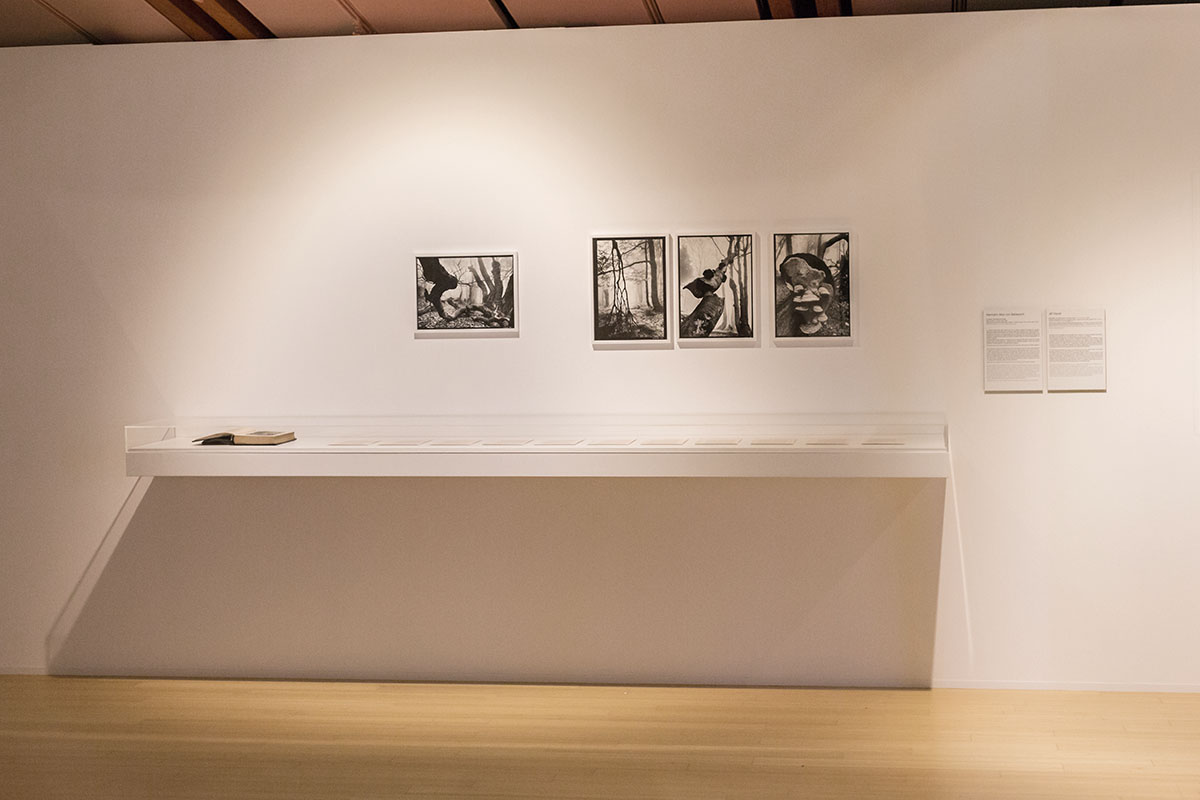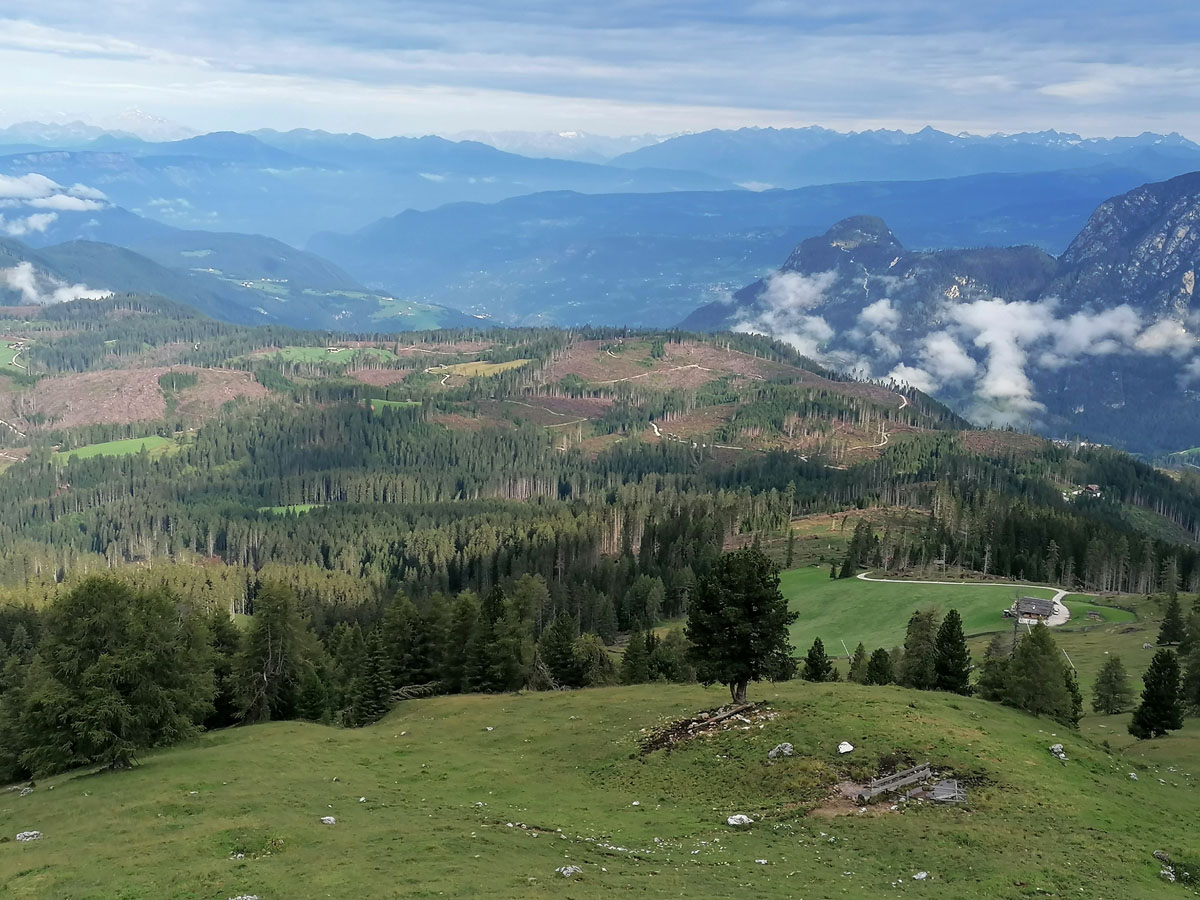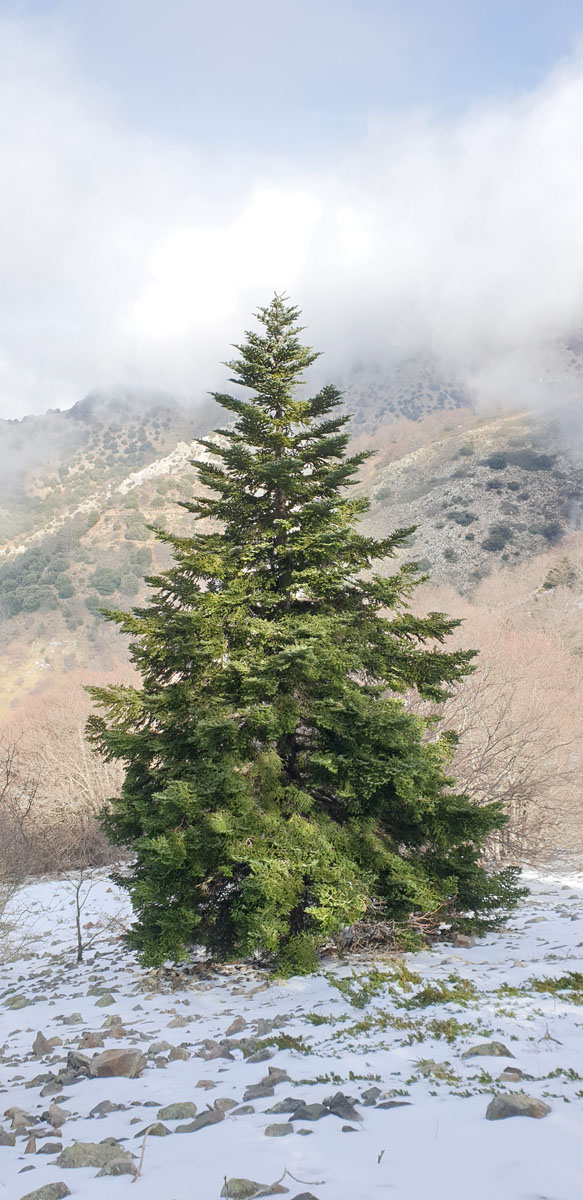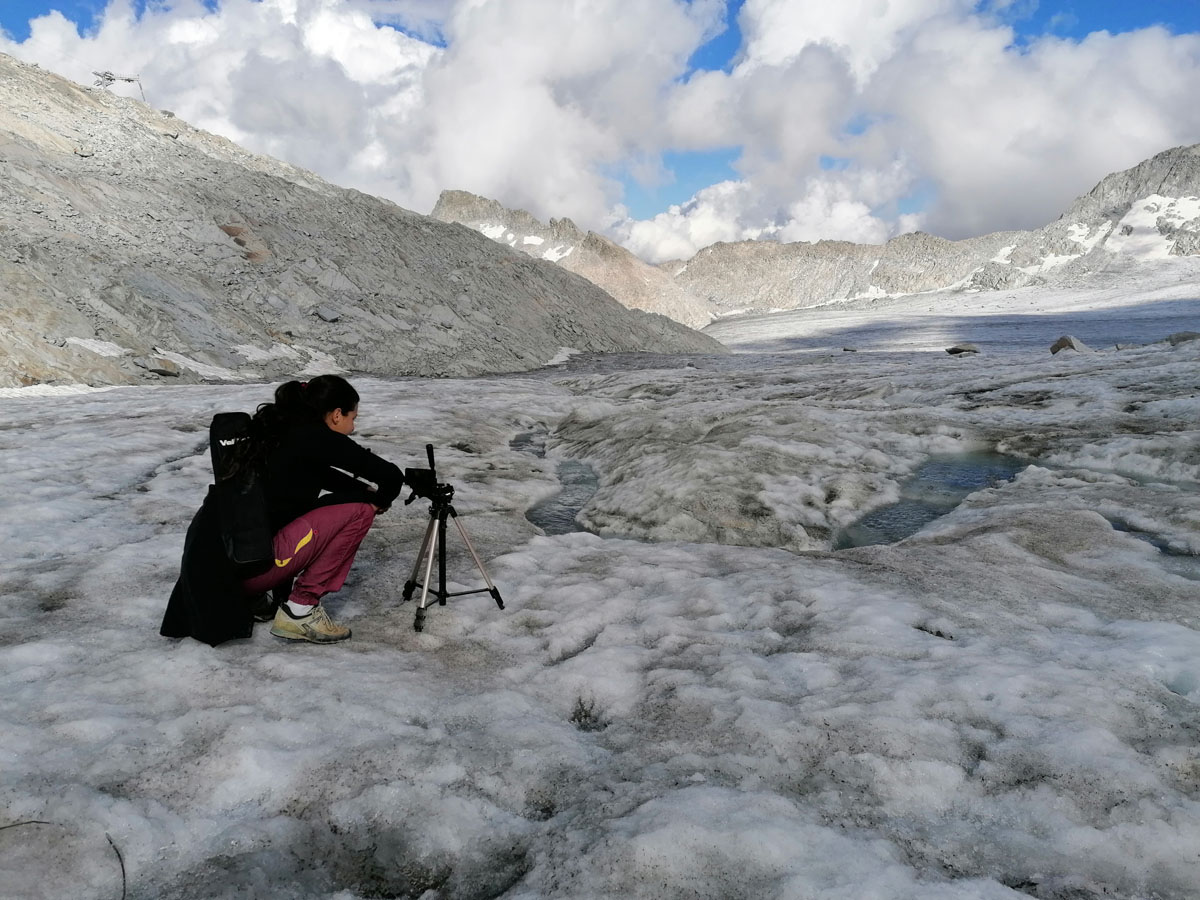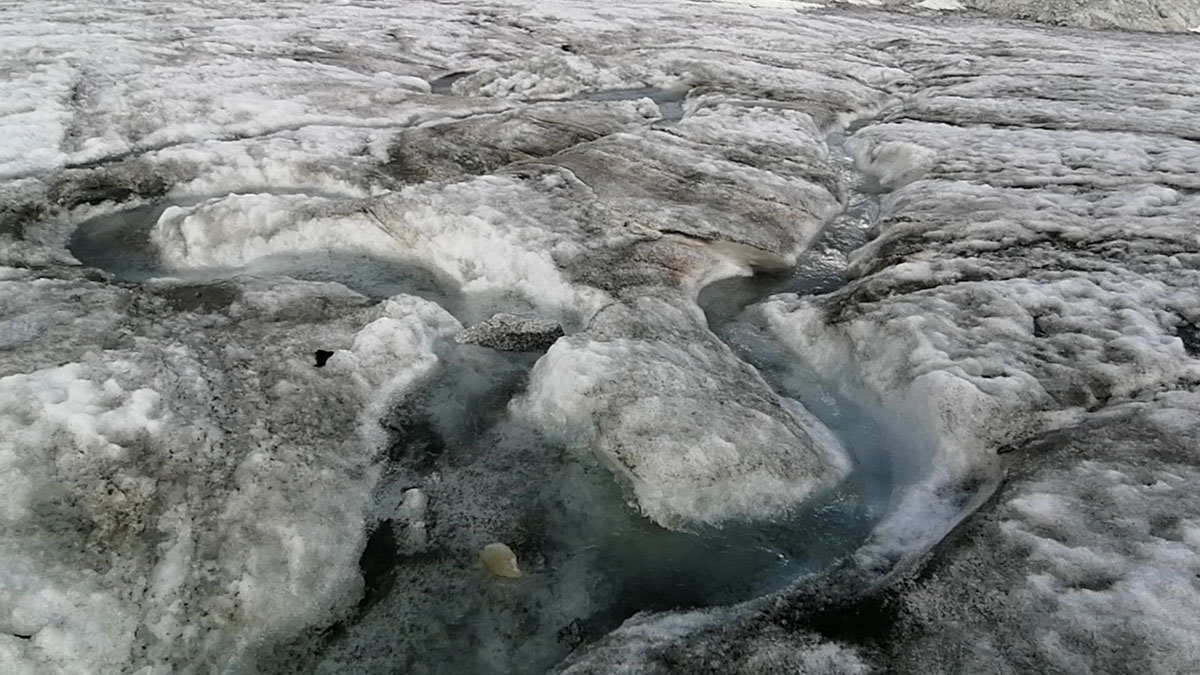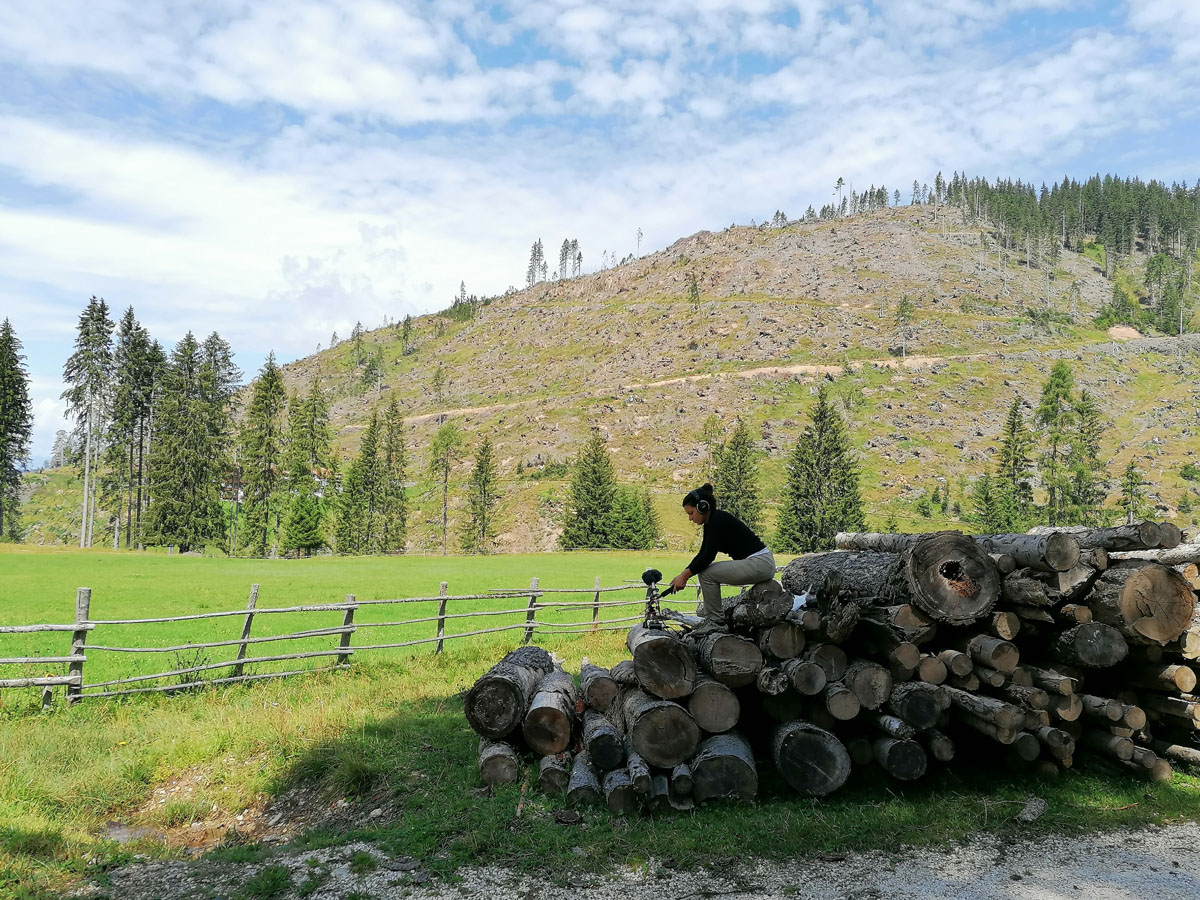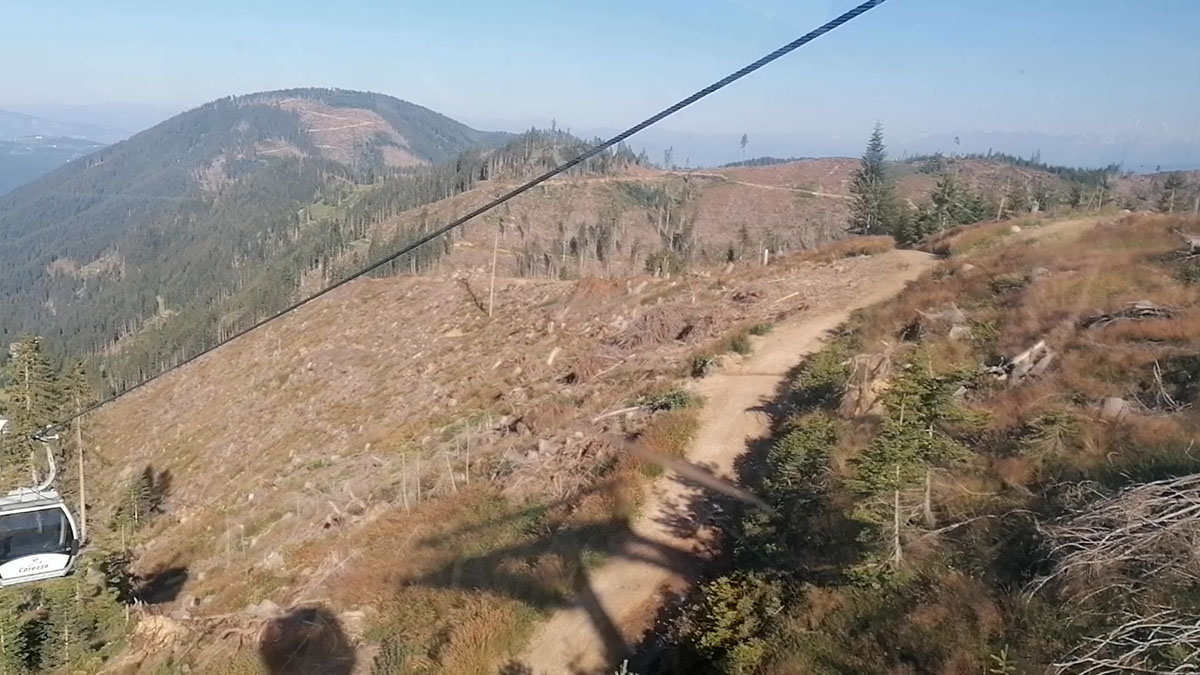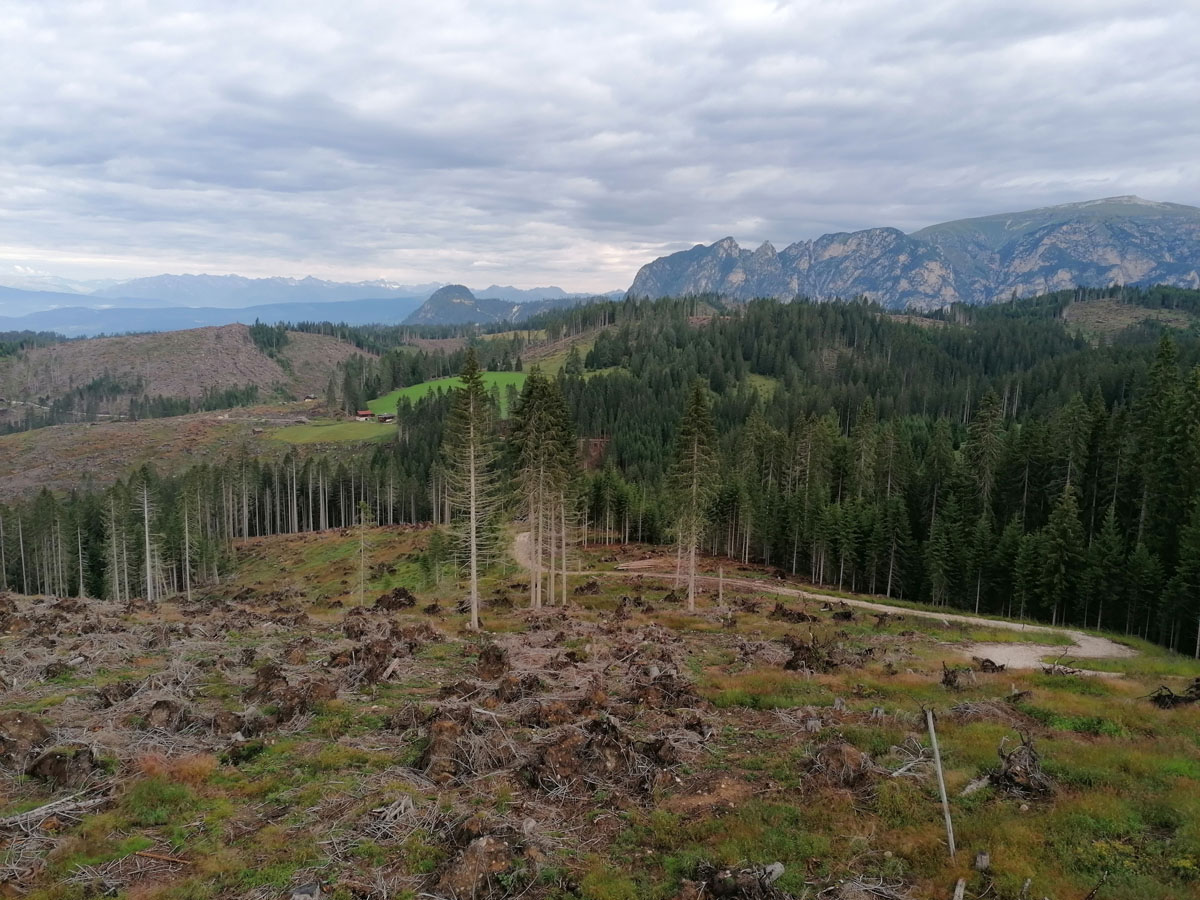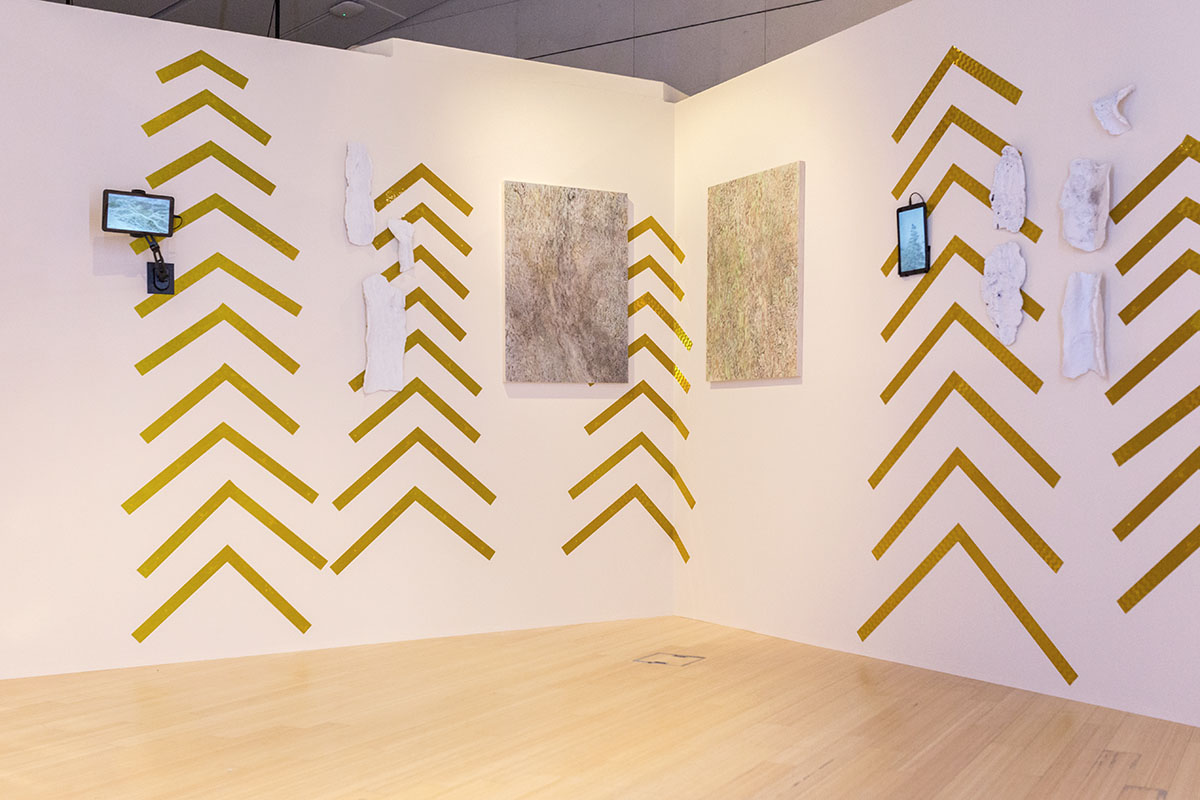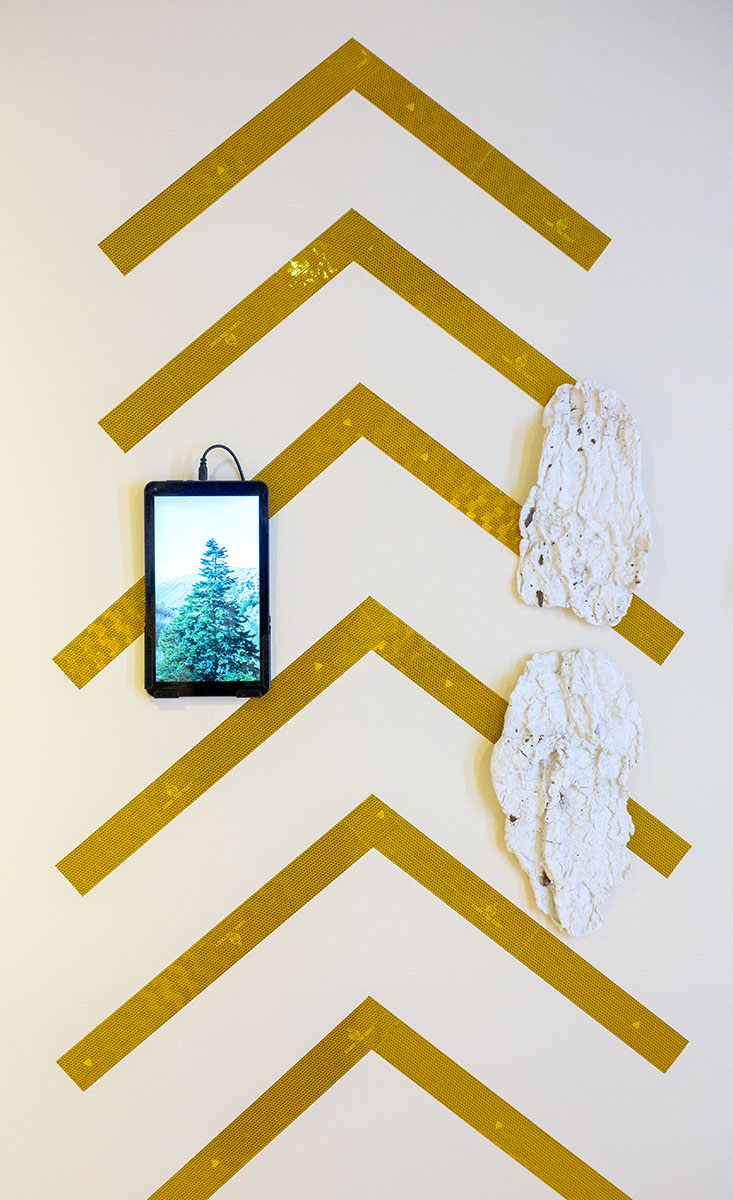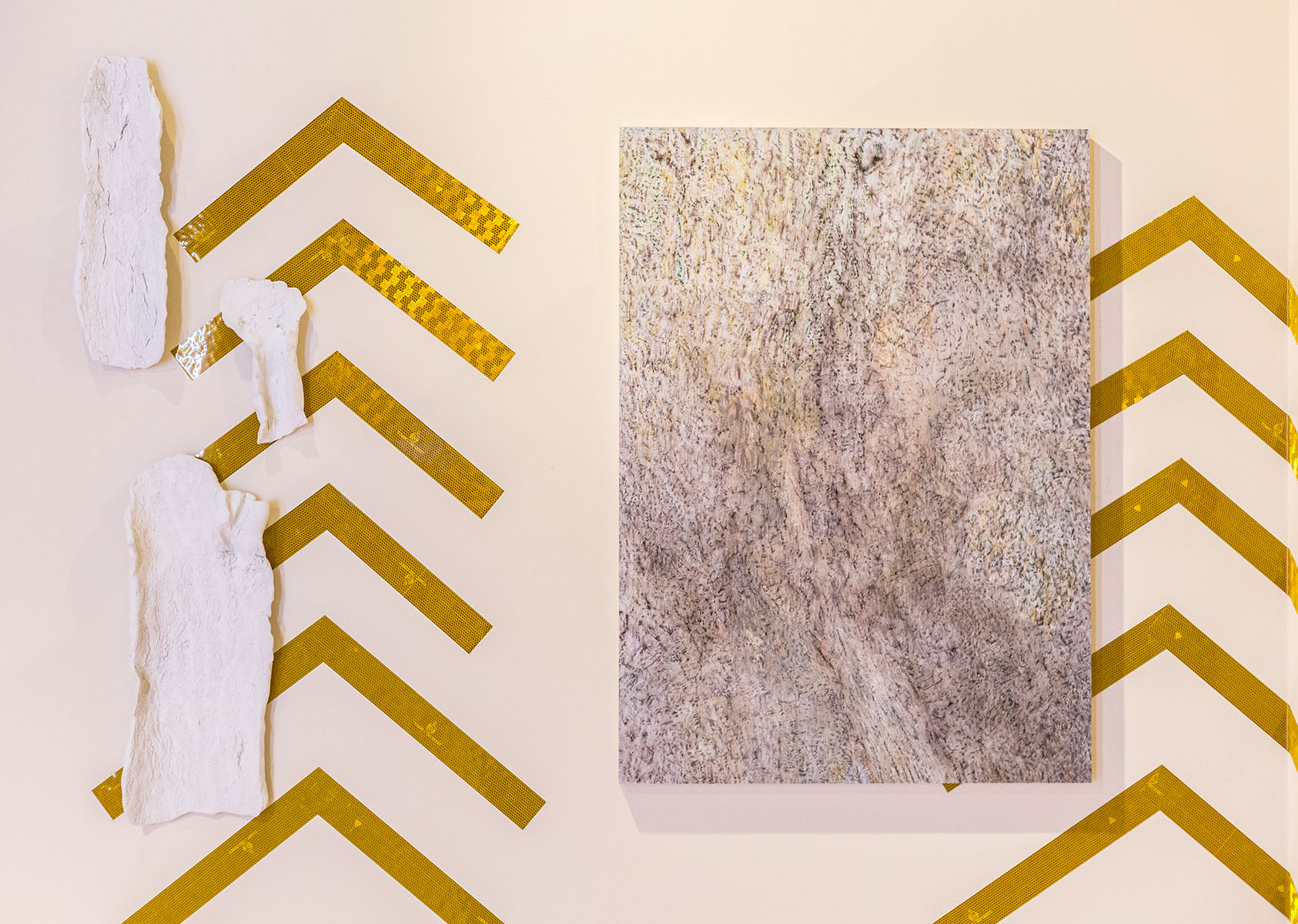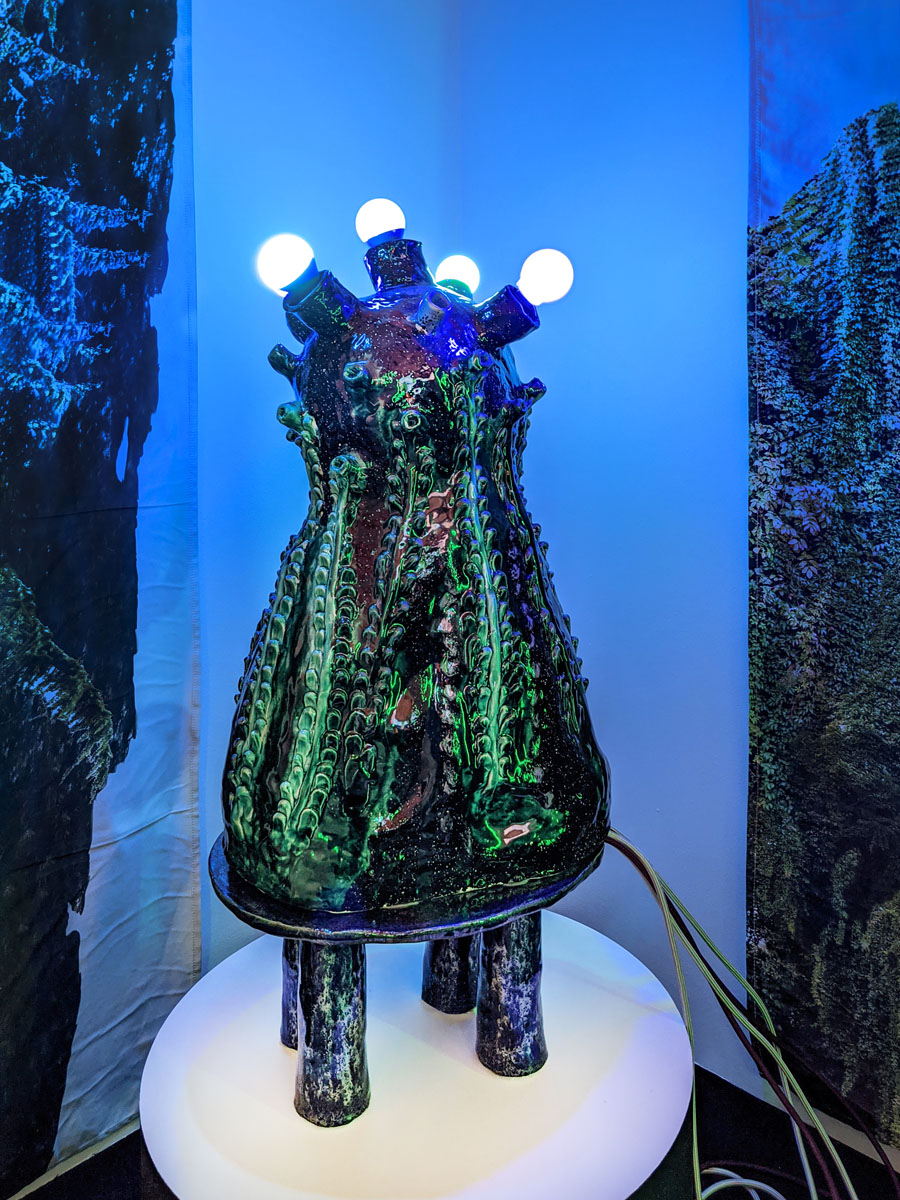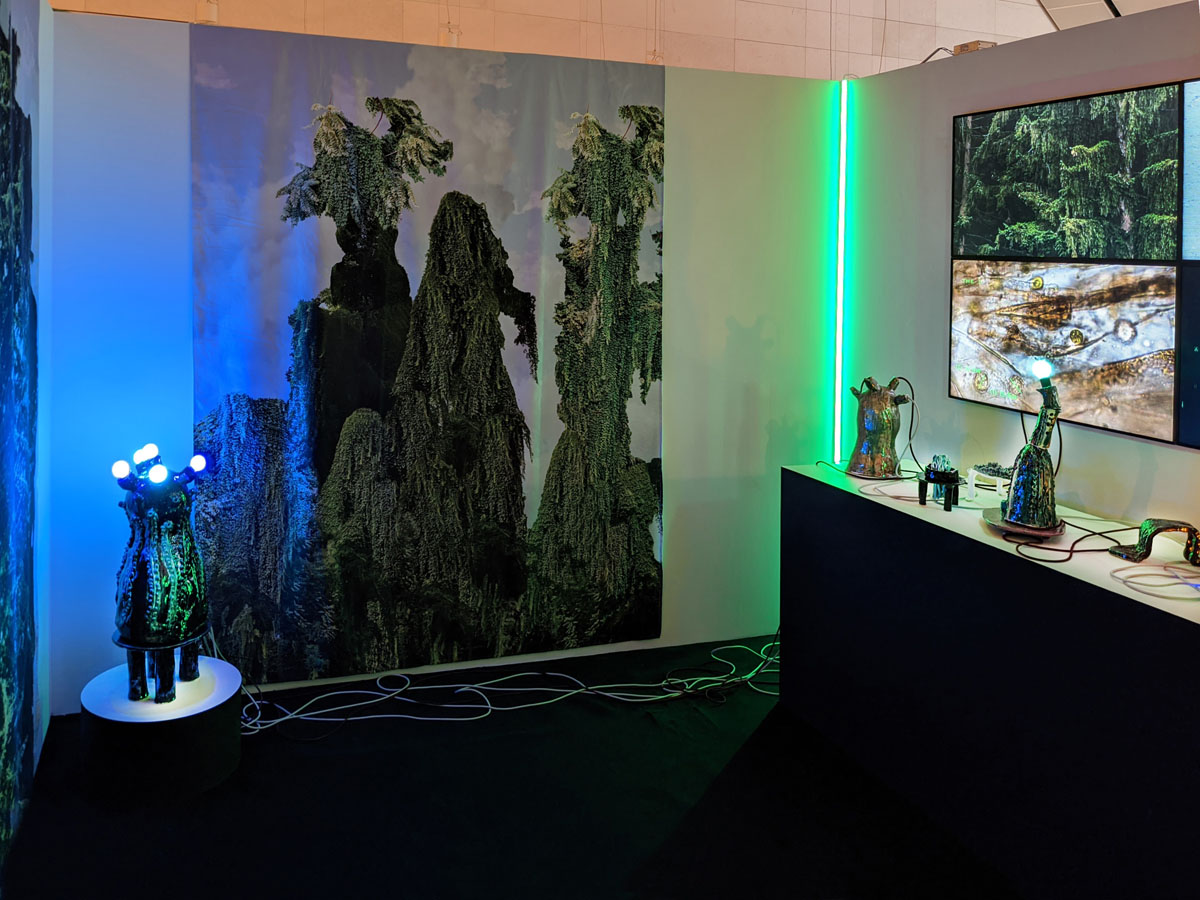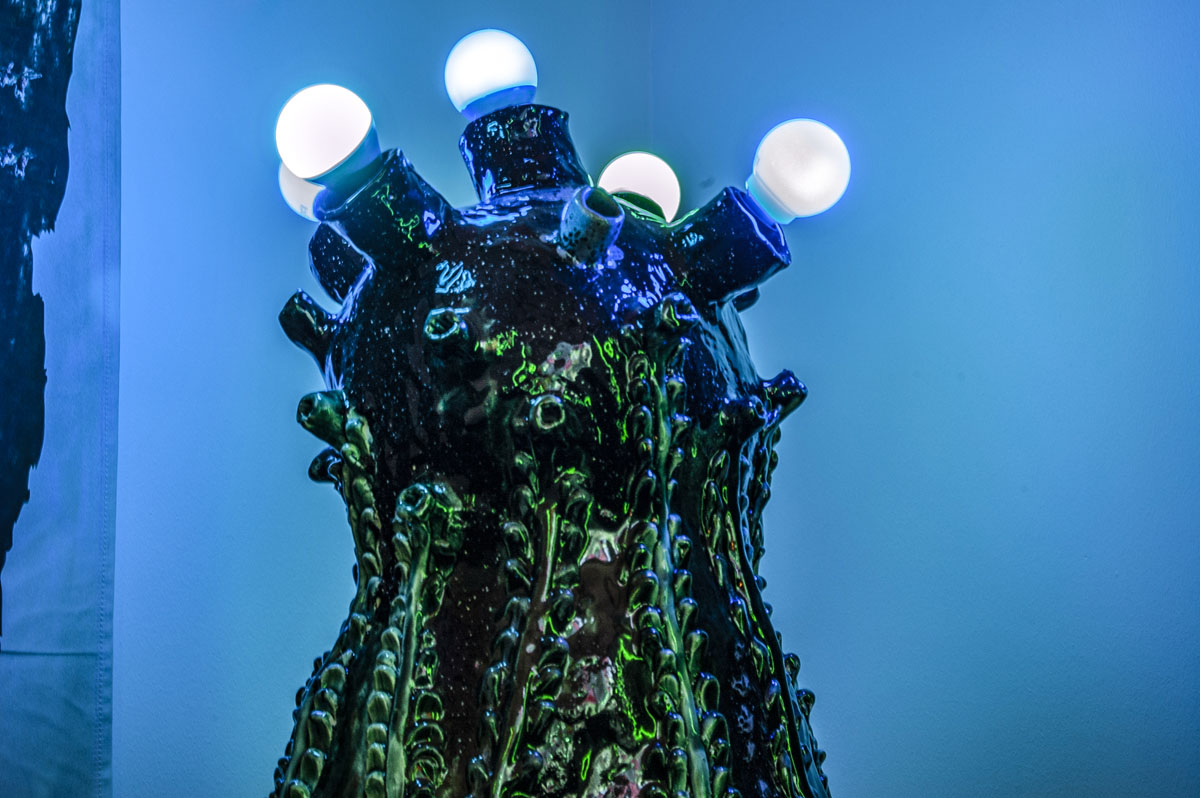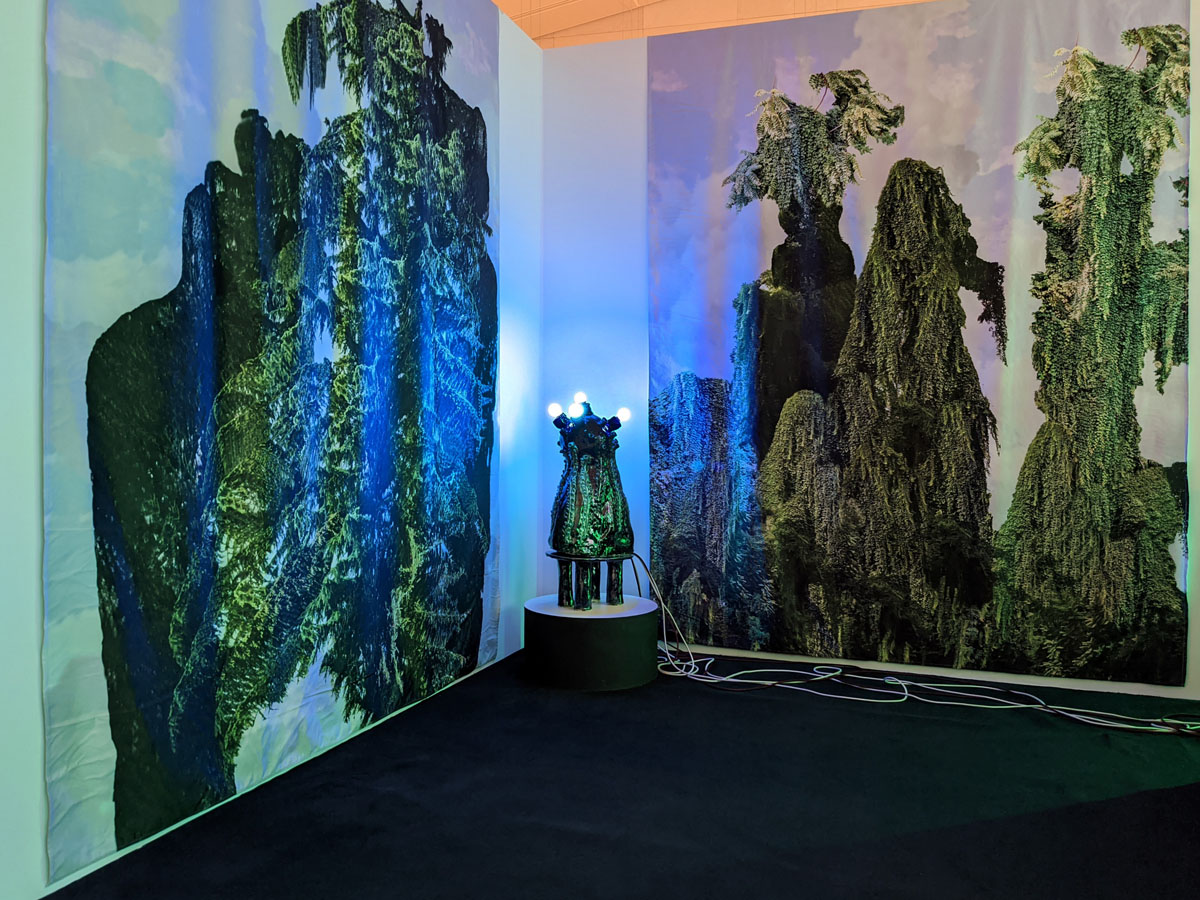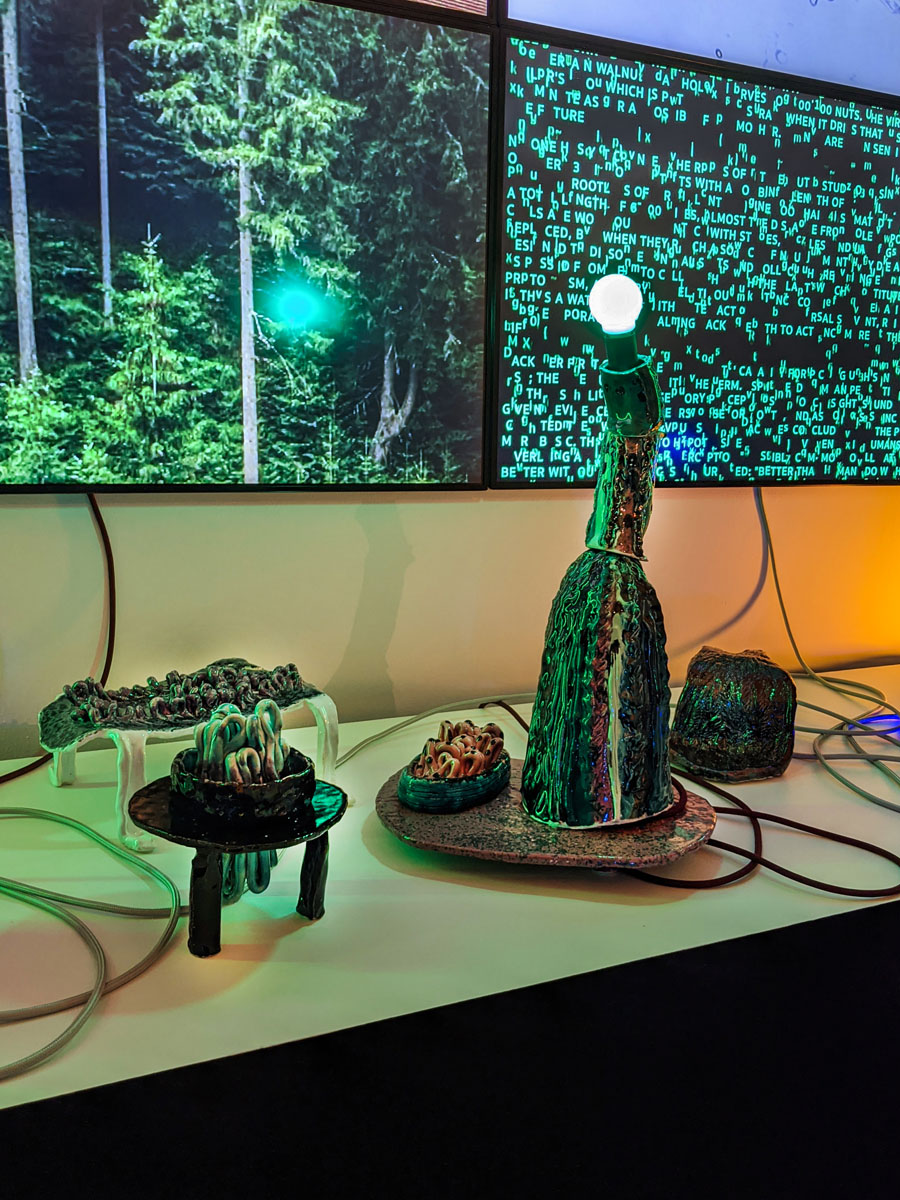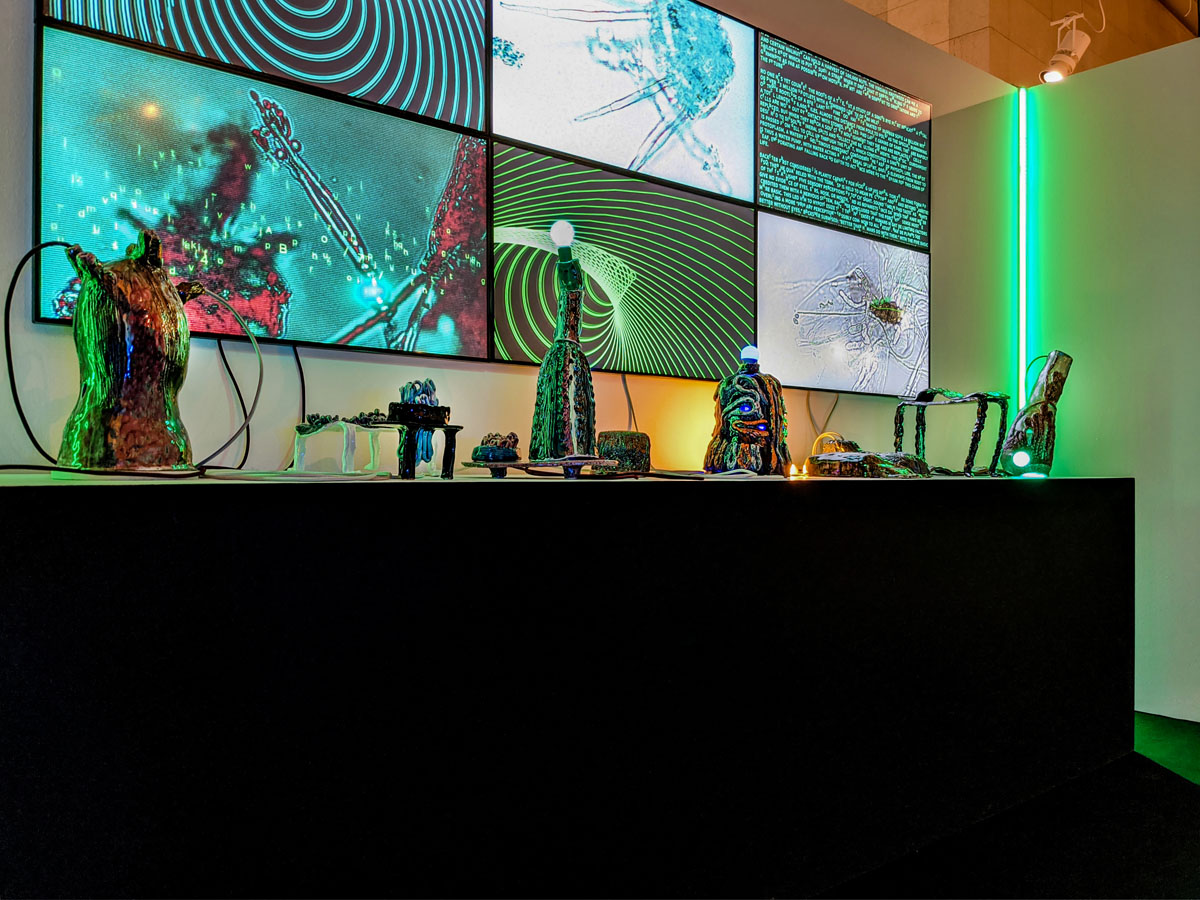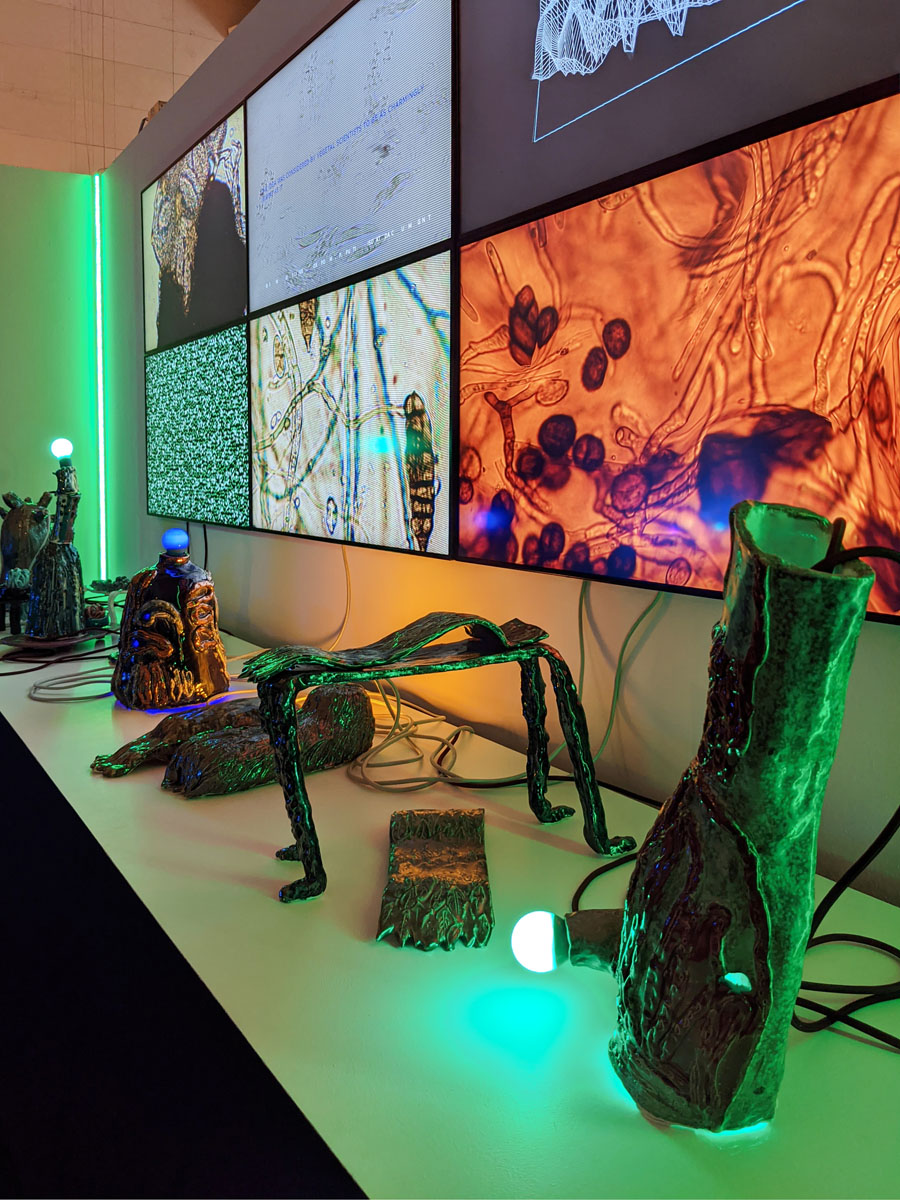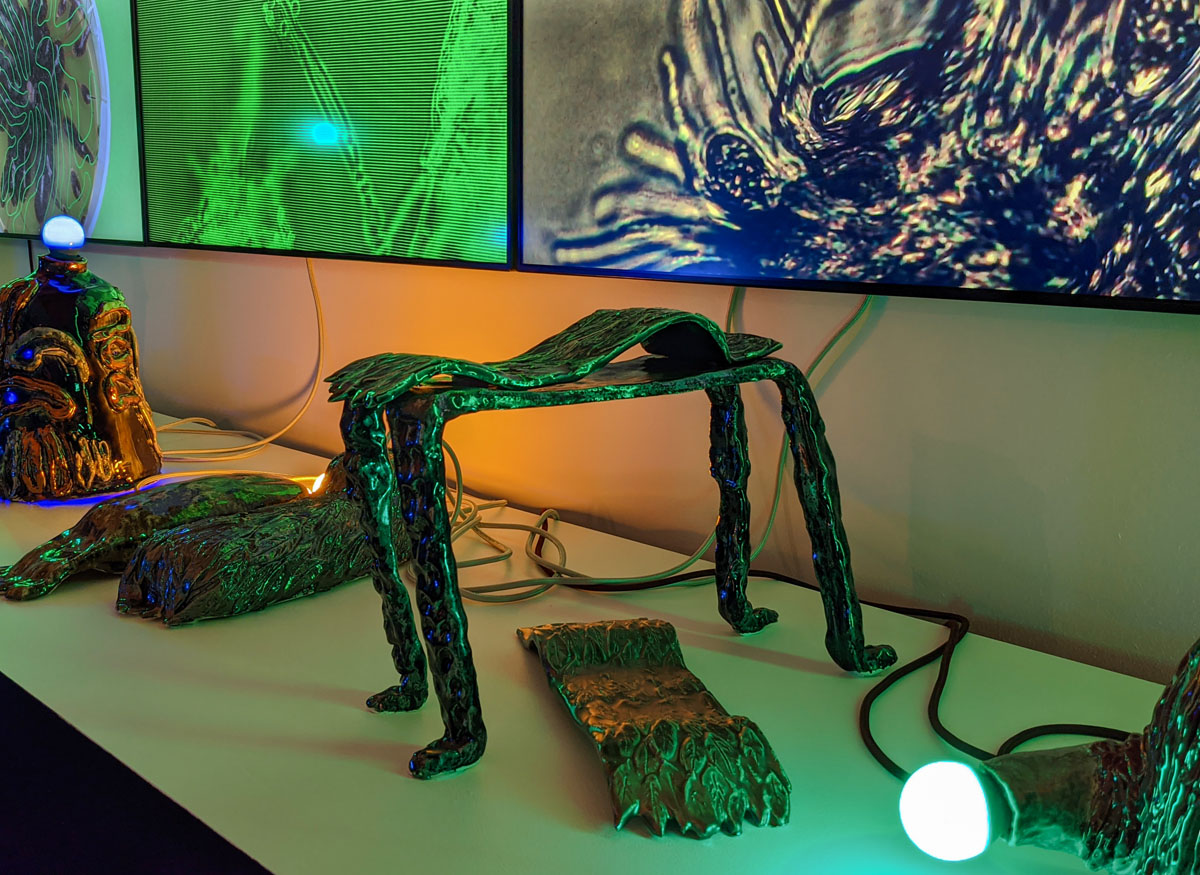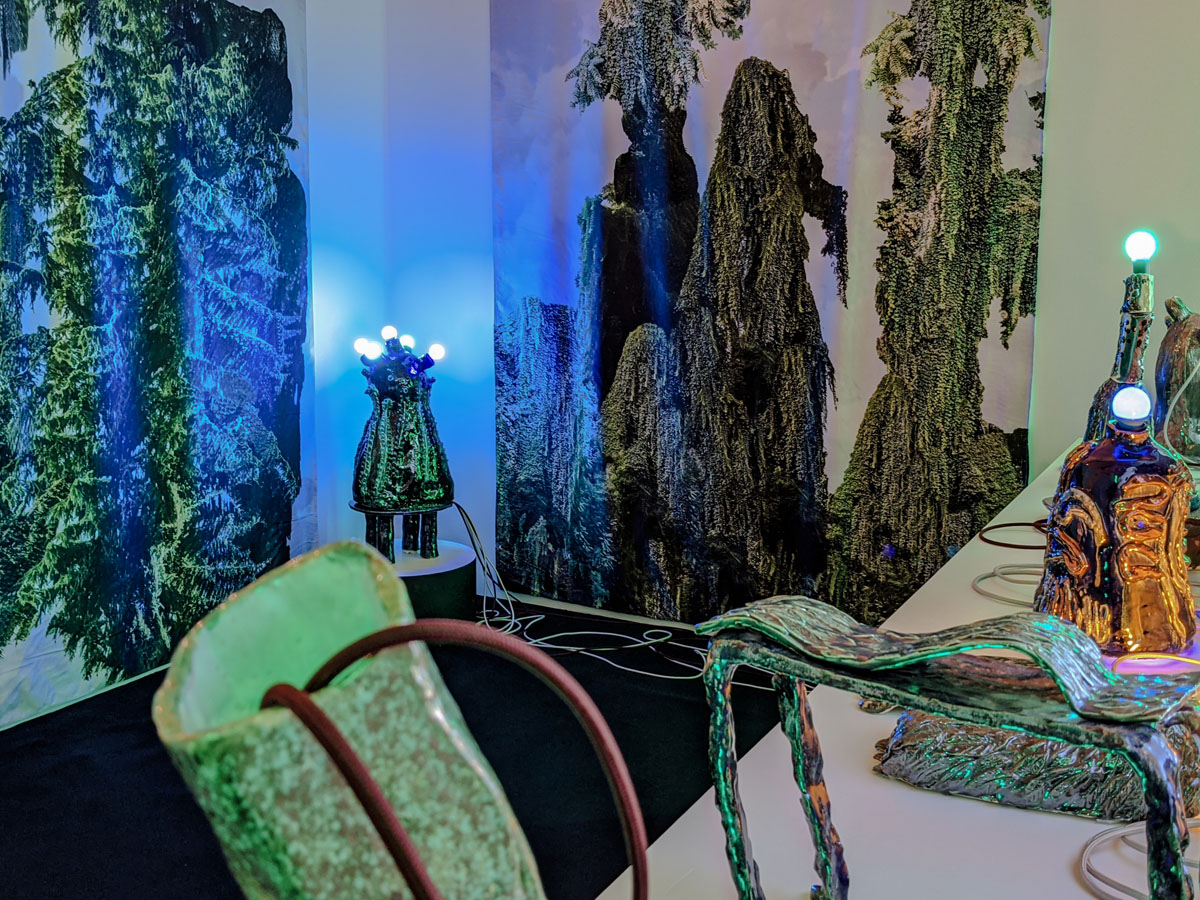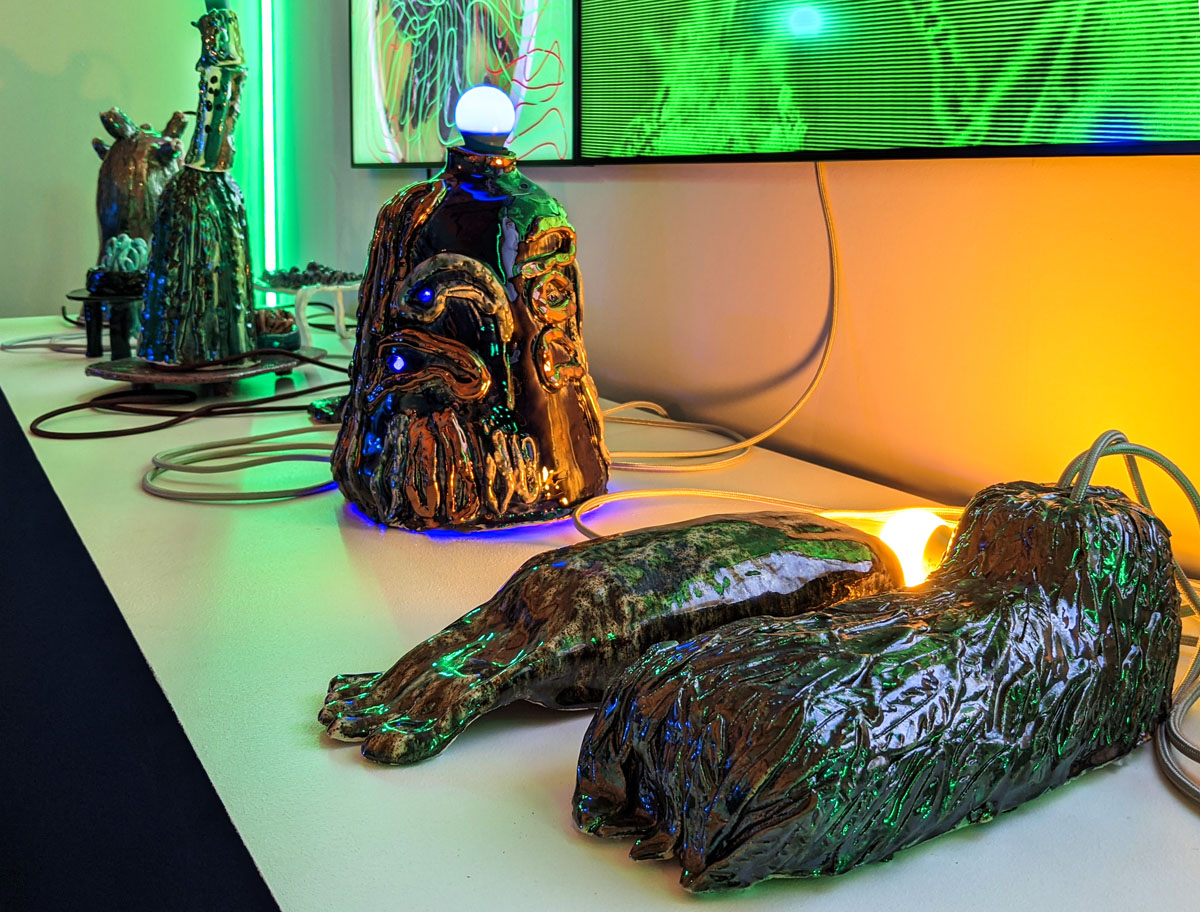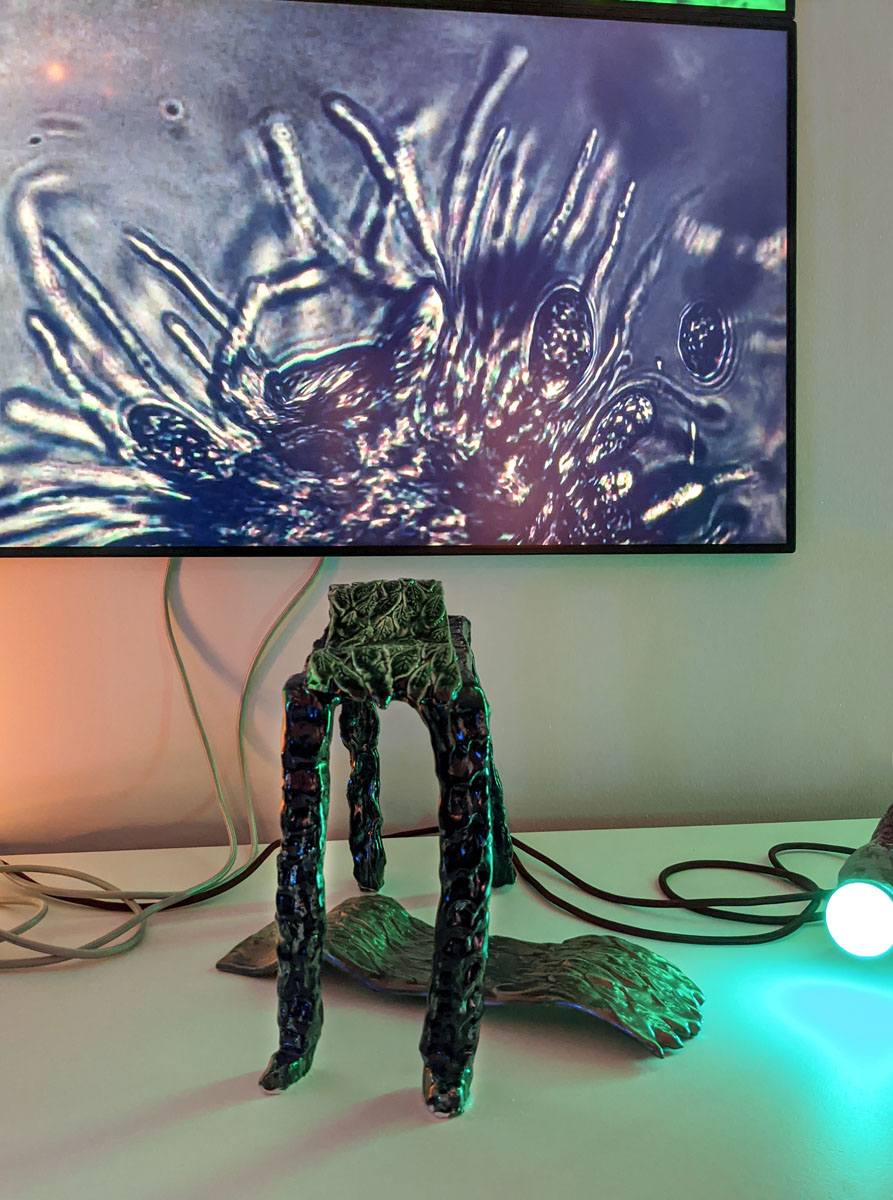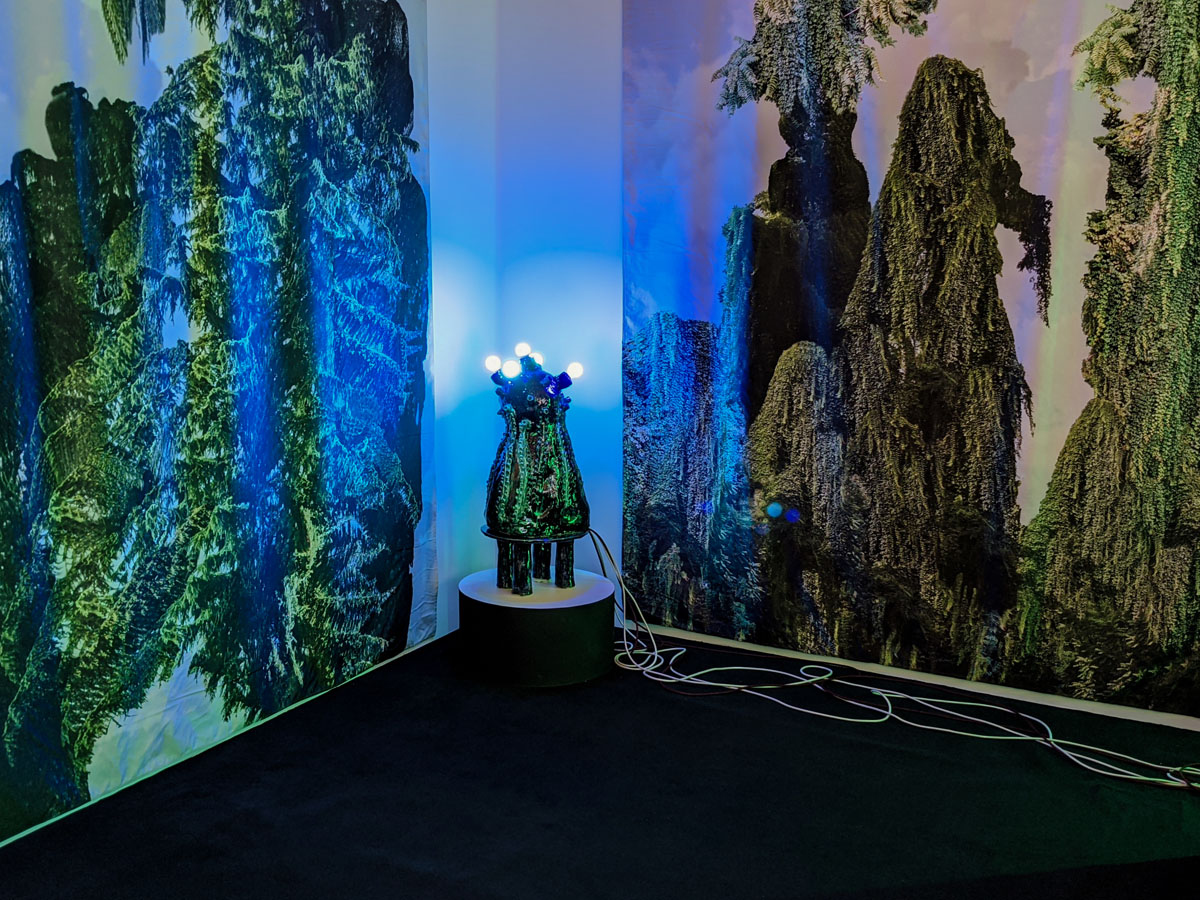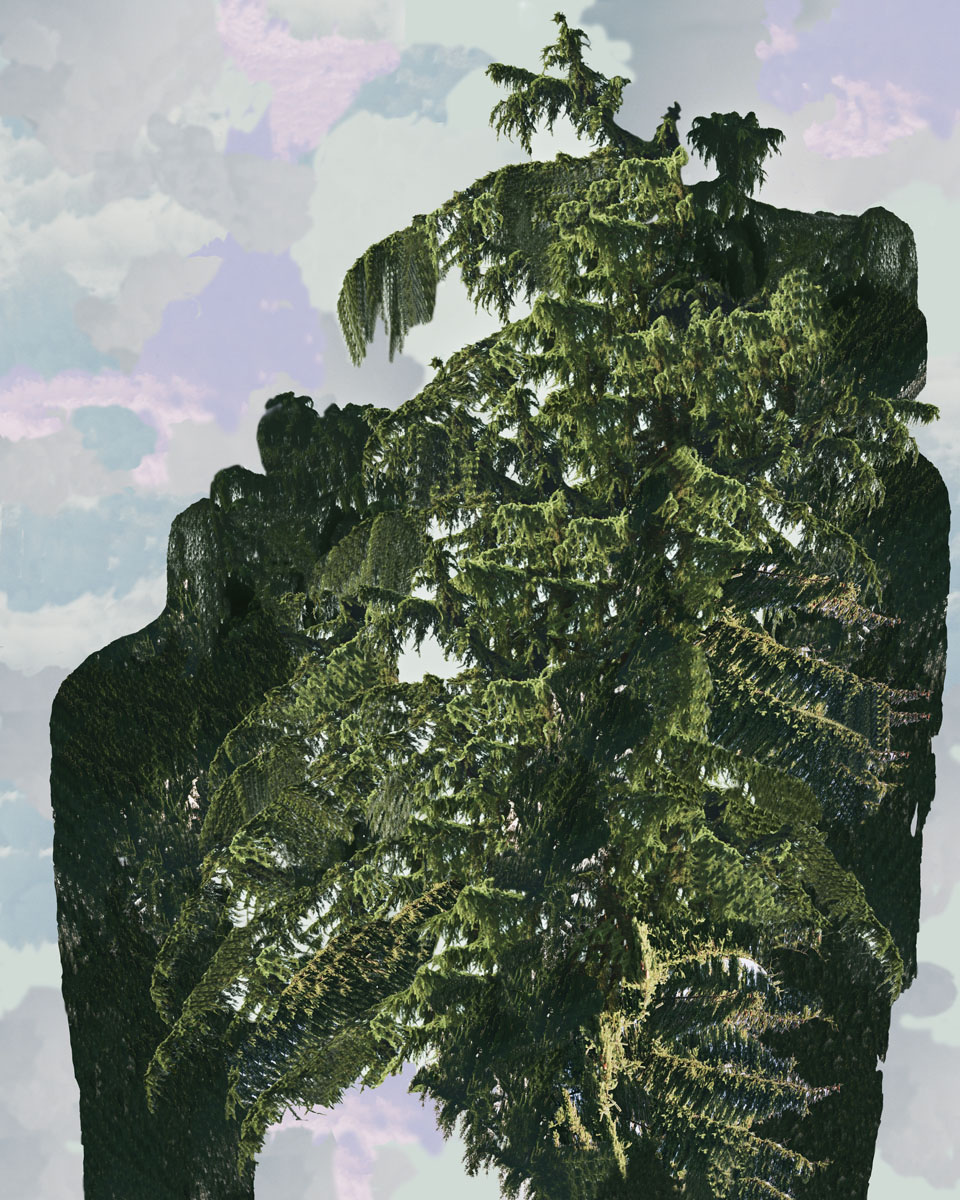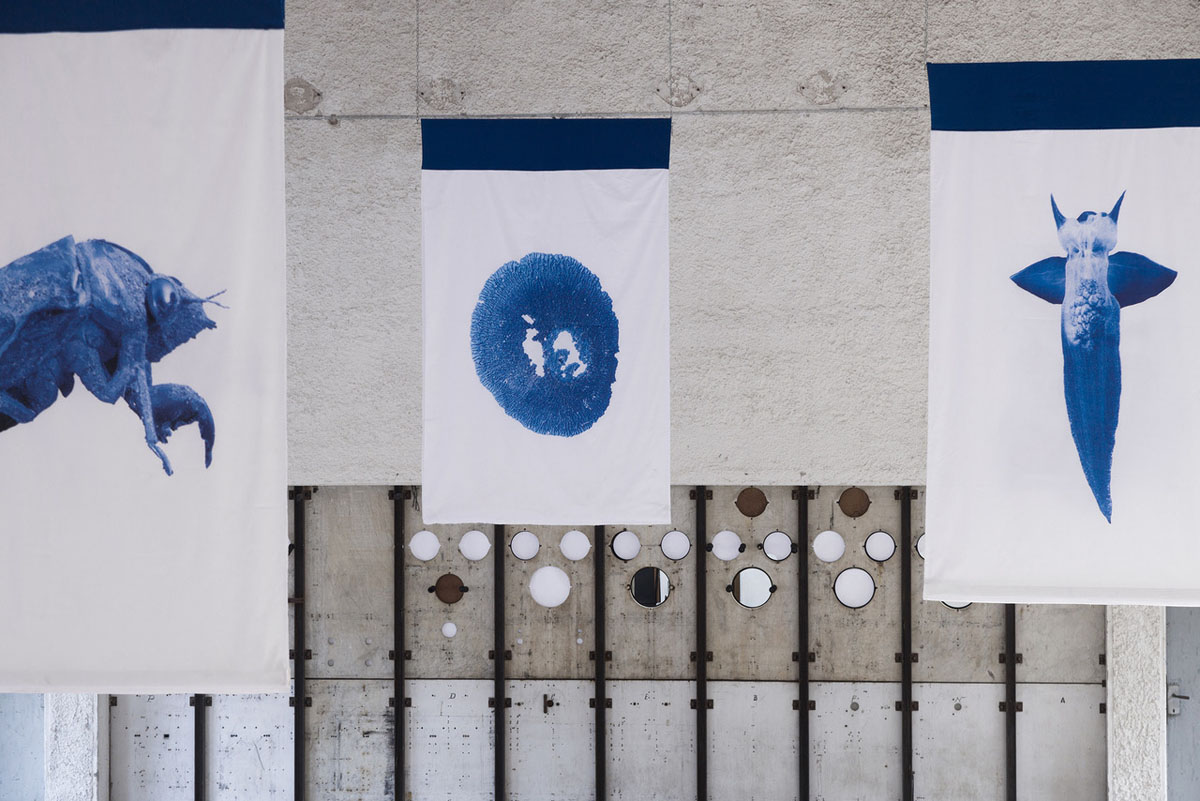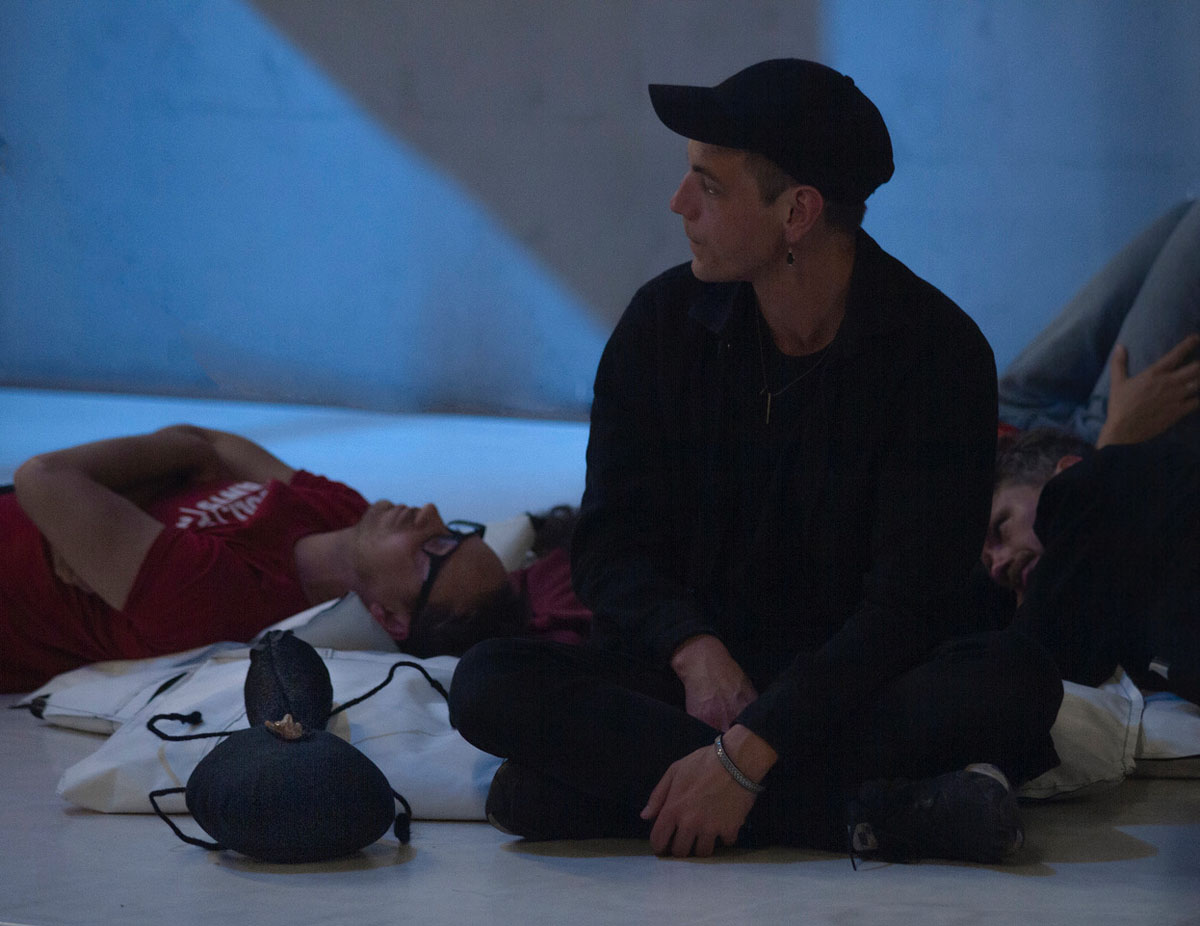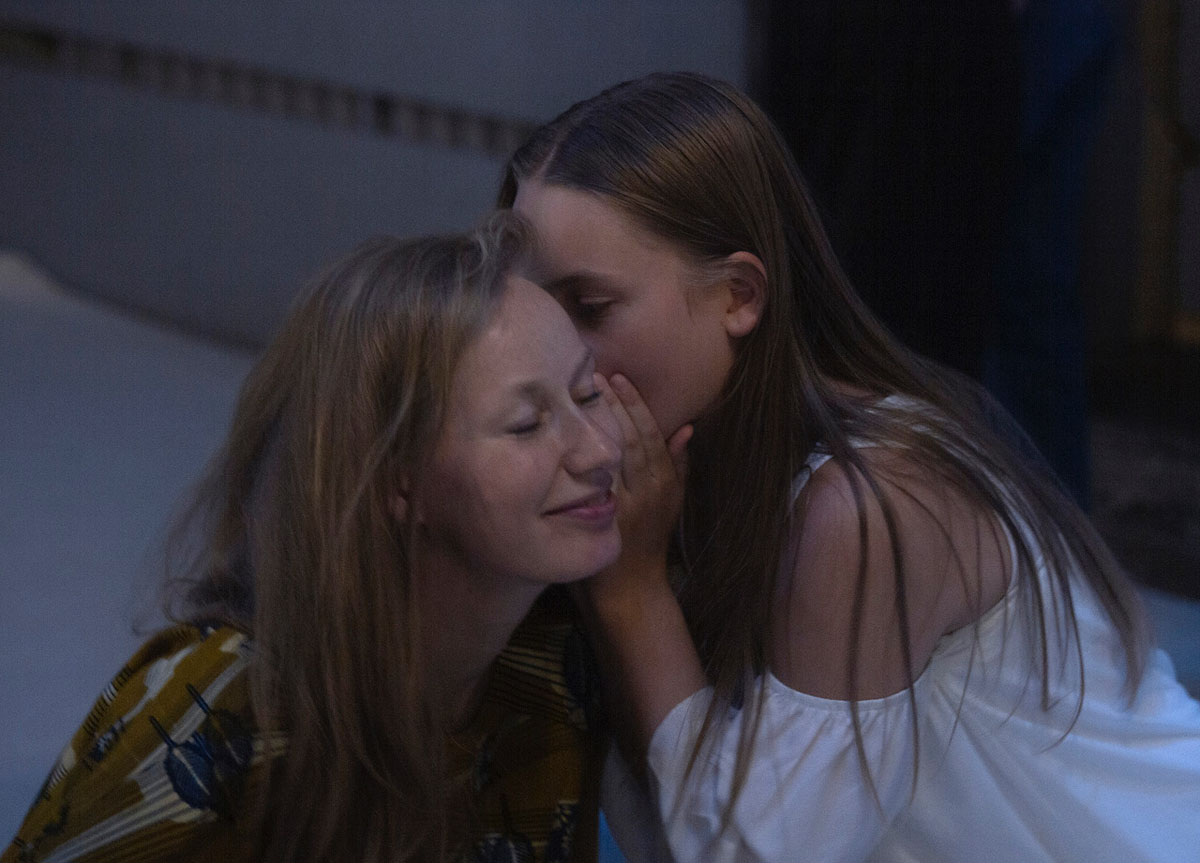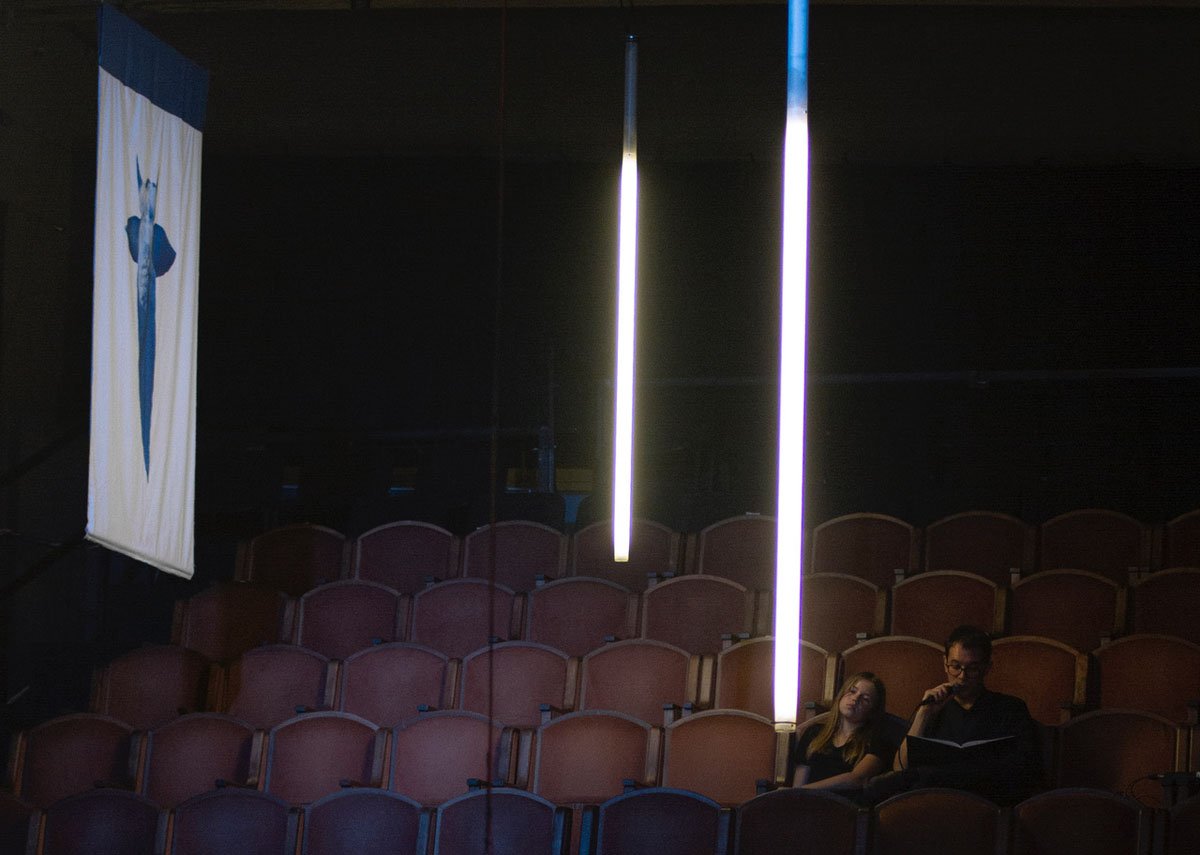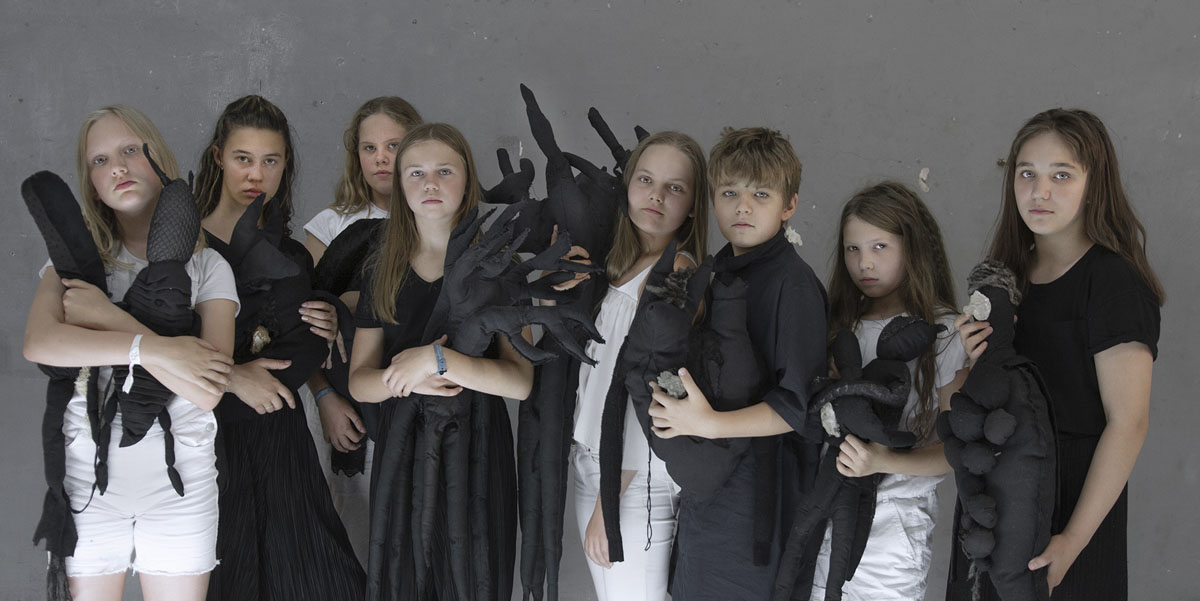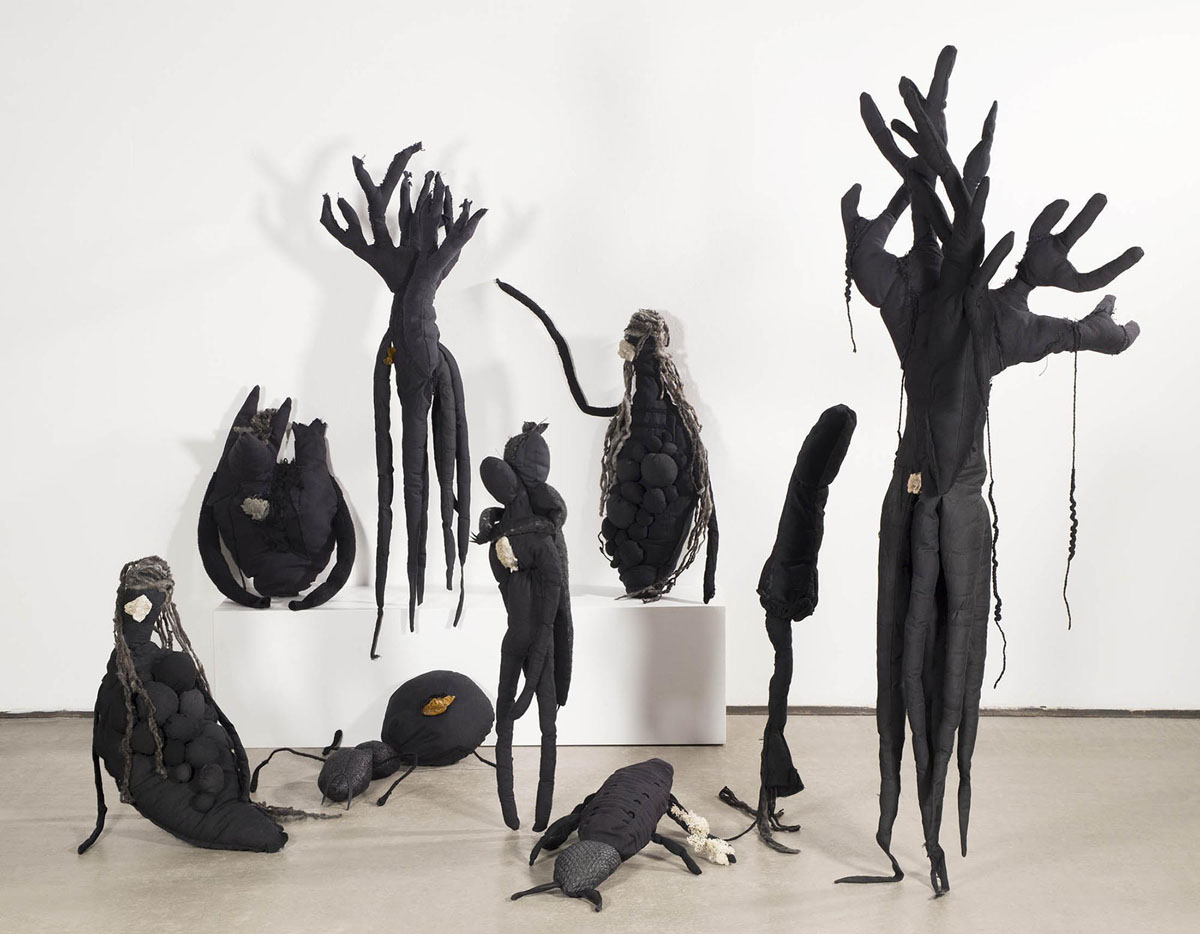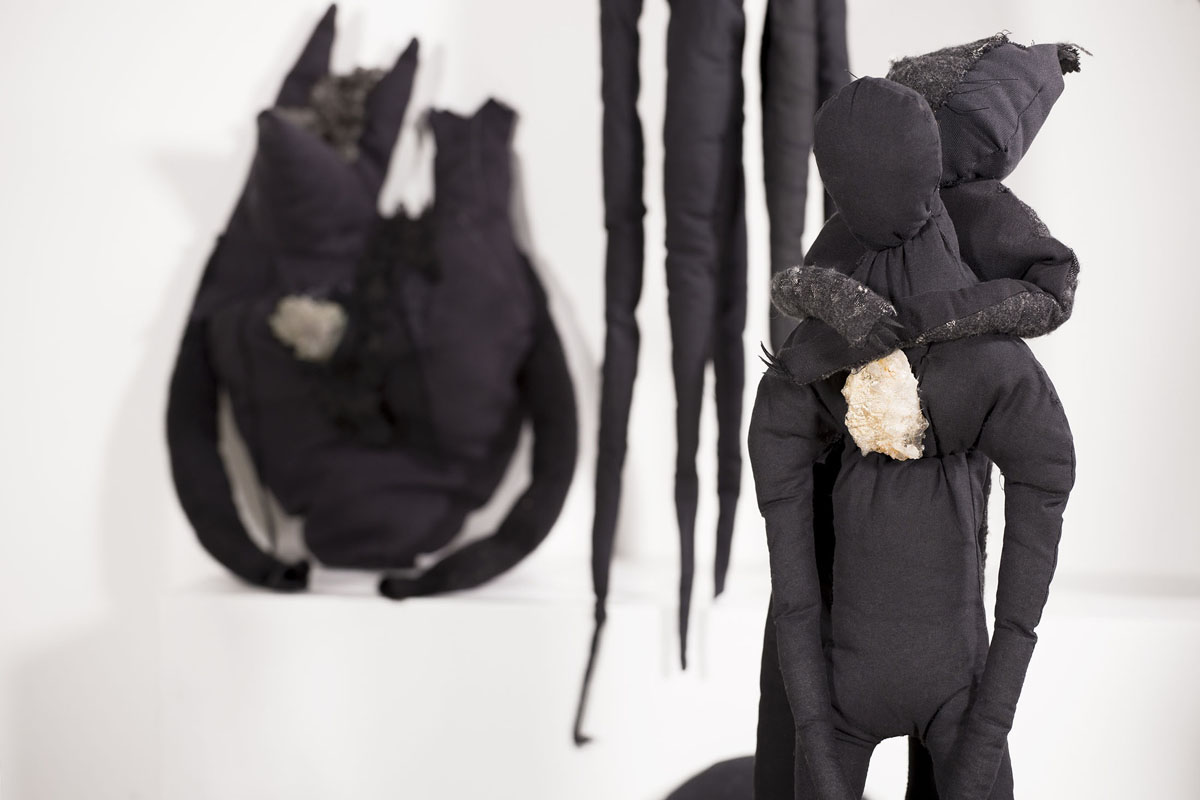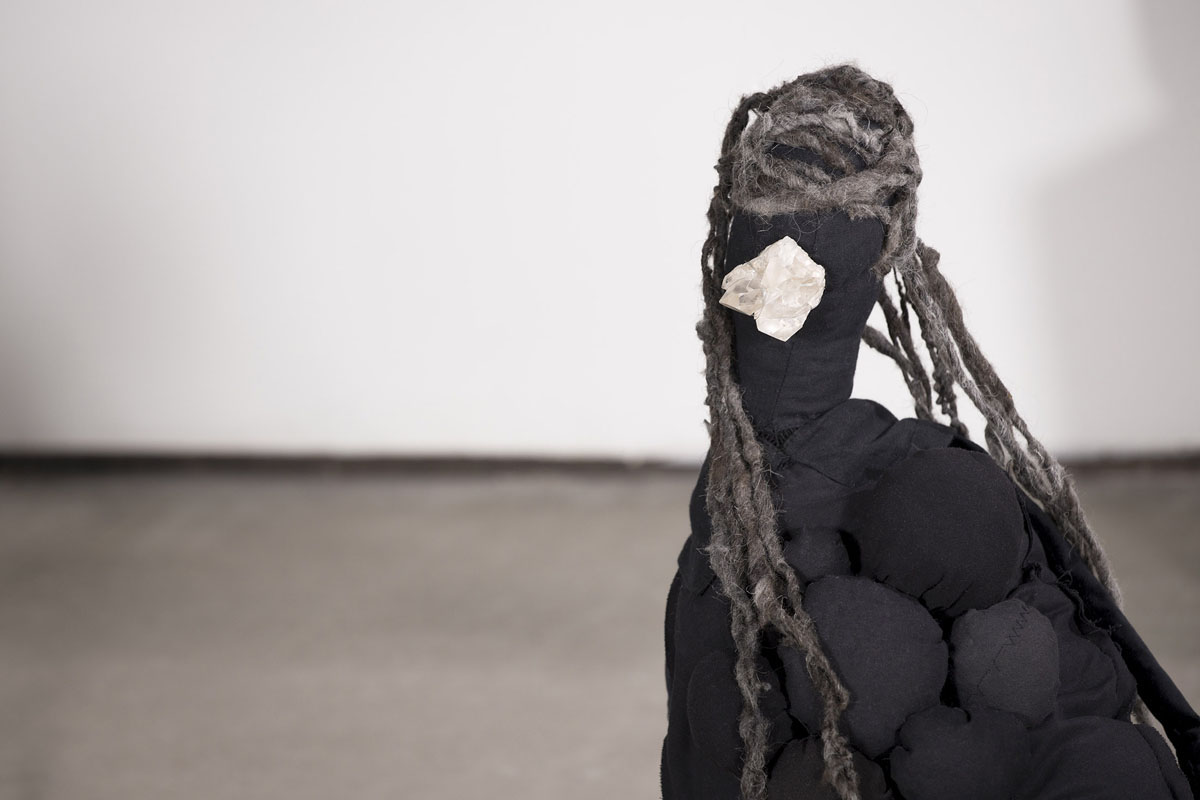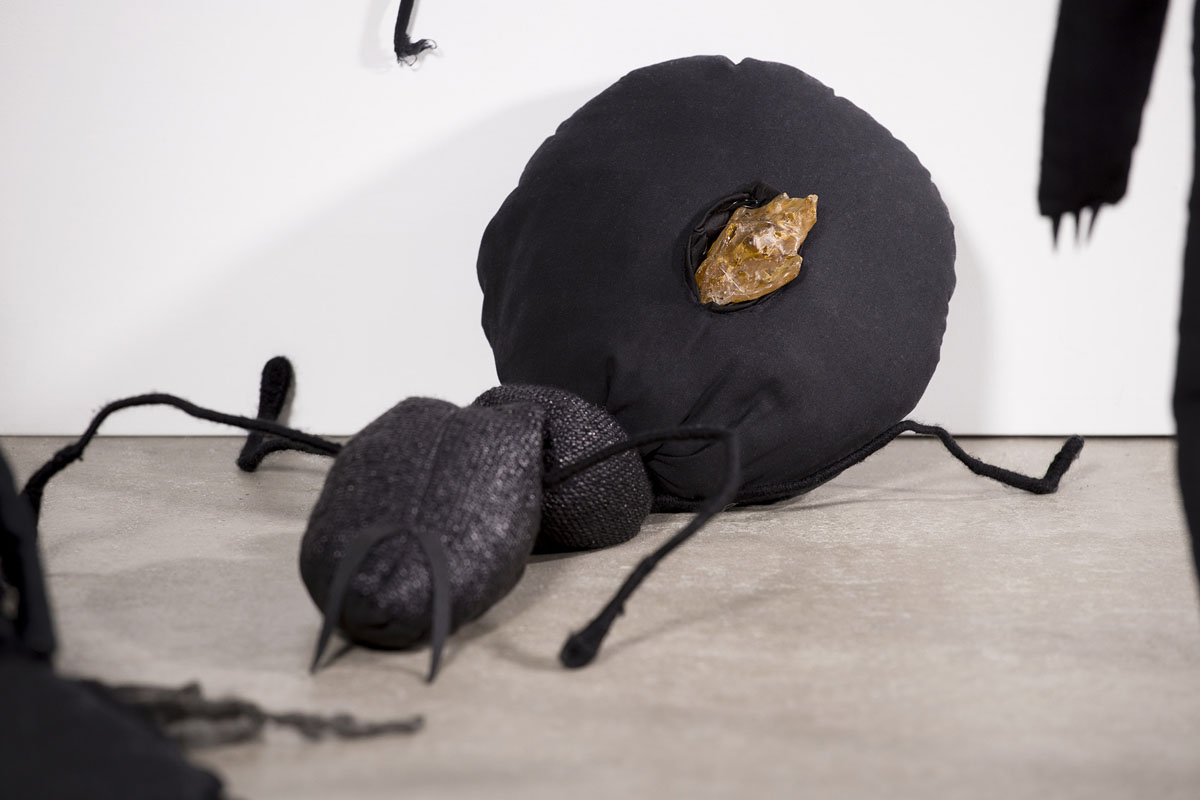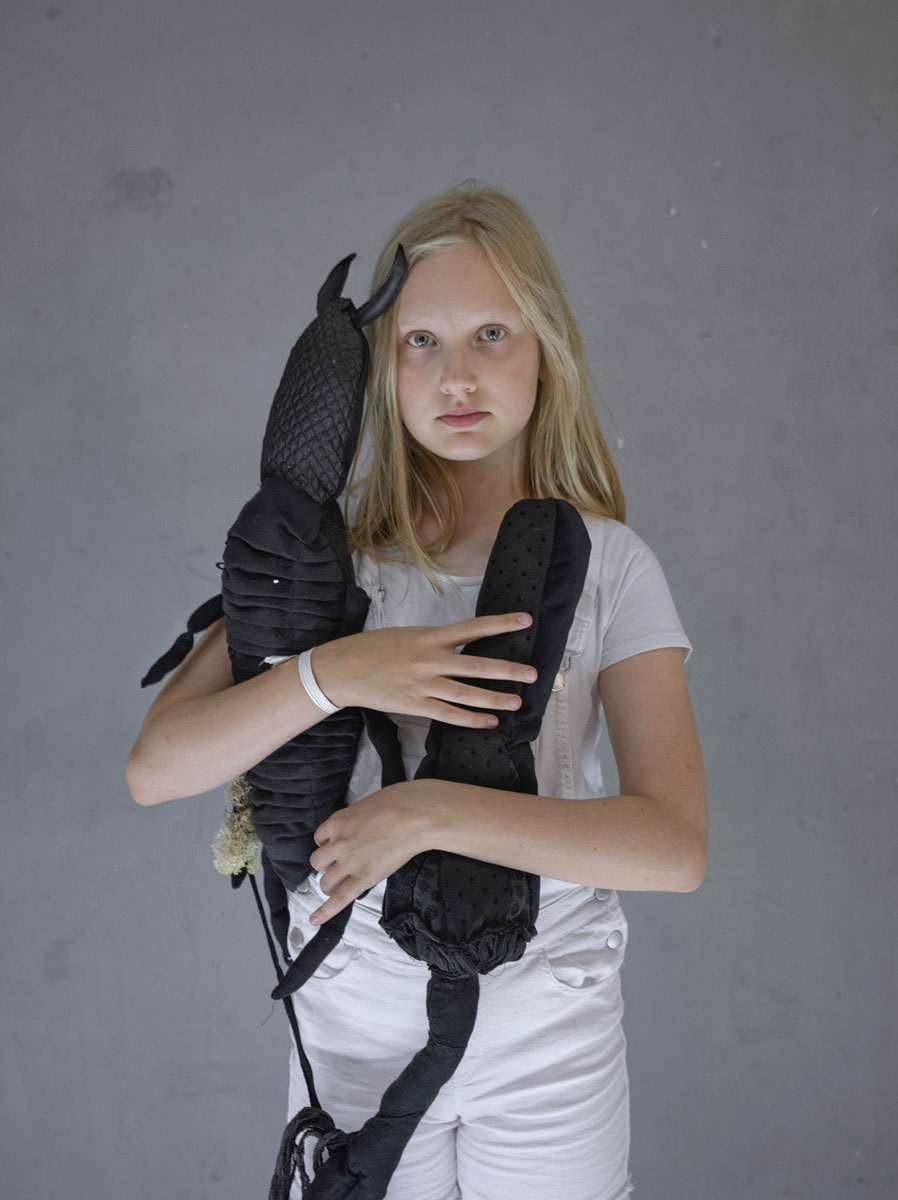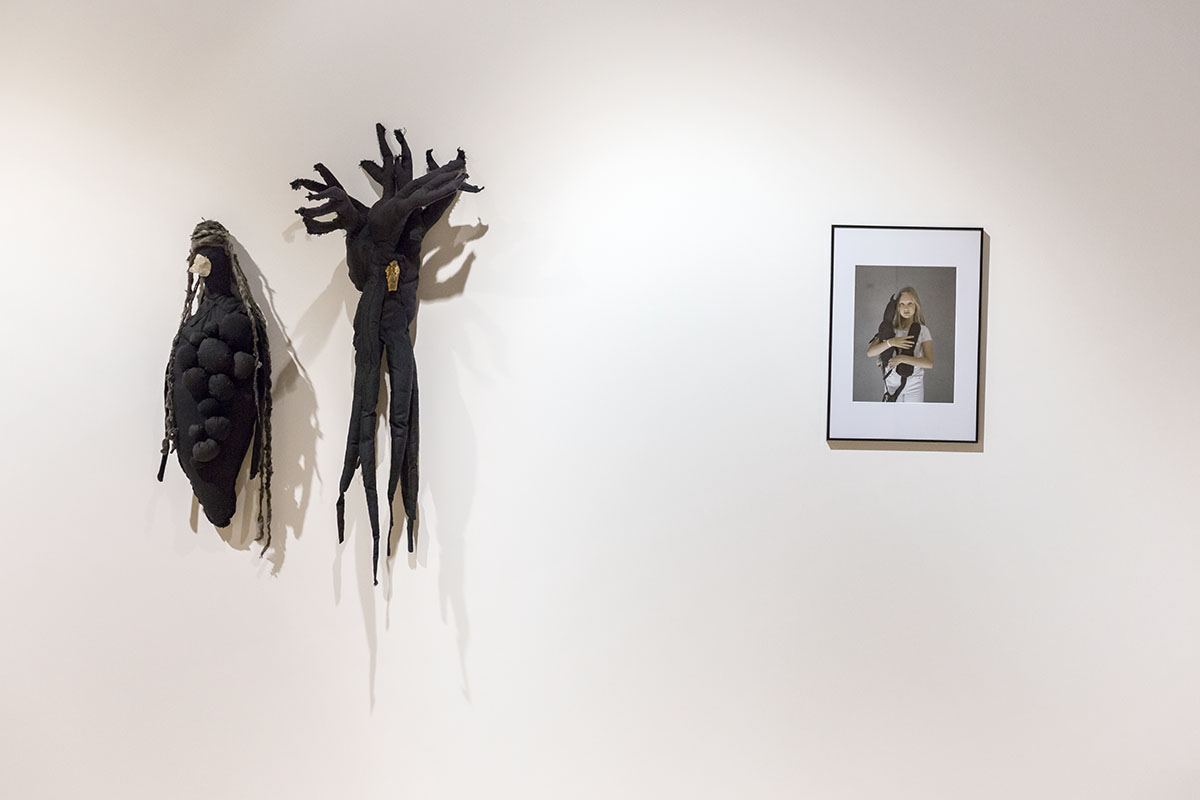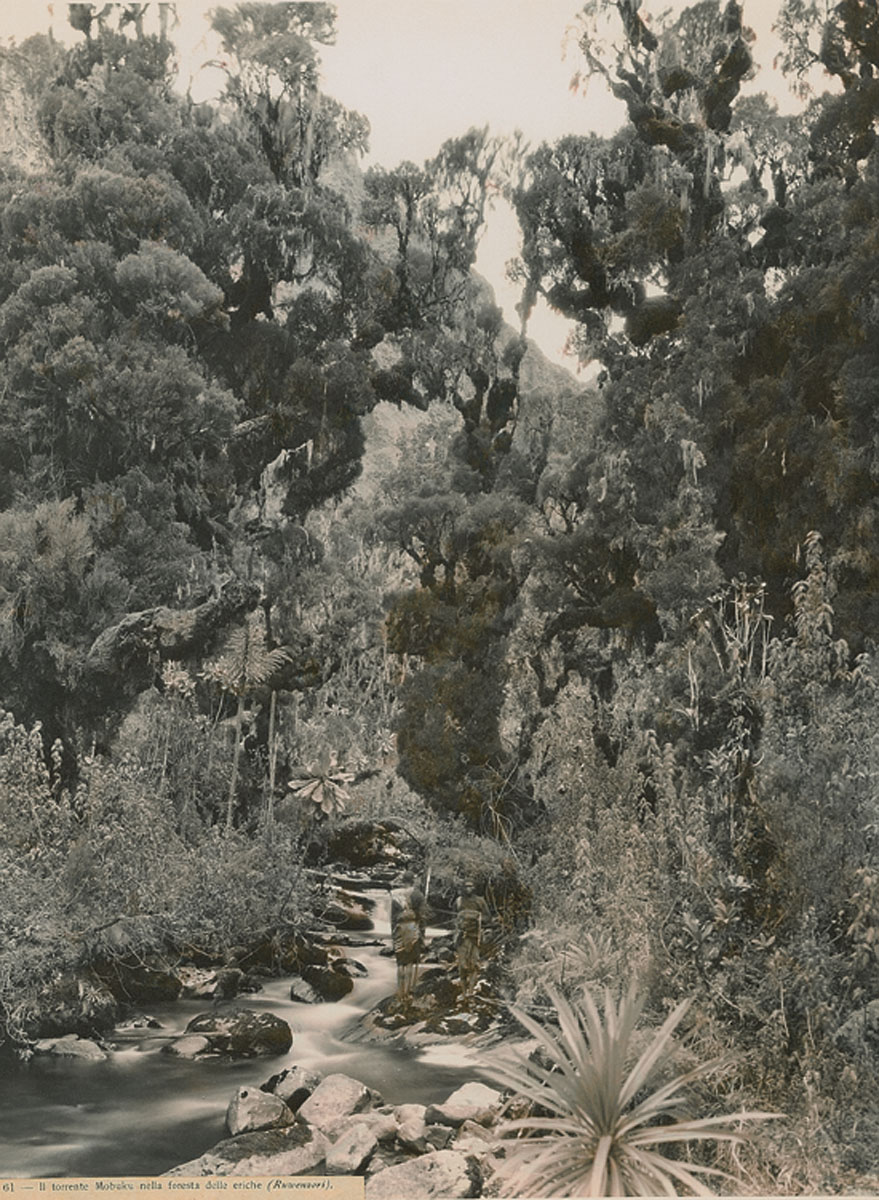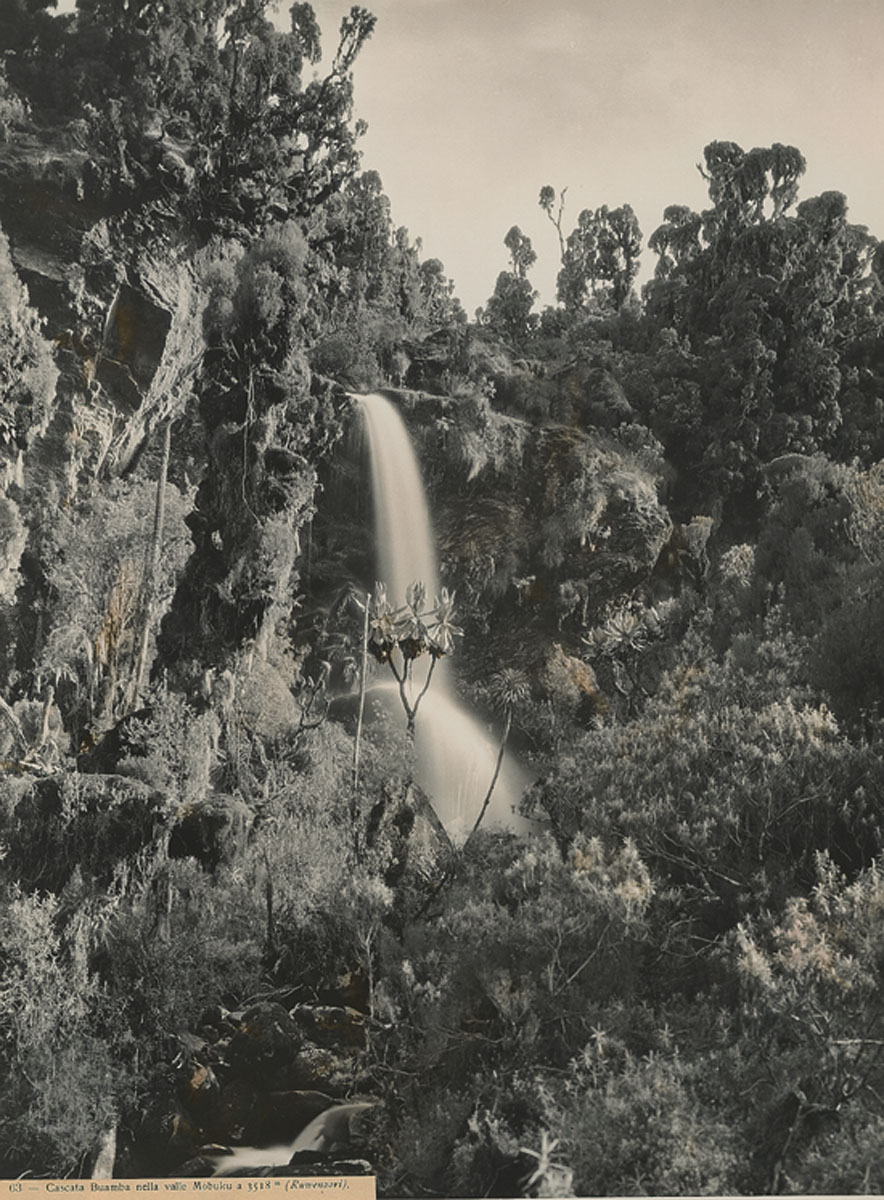A forest in Dis-equilibrium is more susceptible to extreme weather events and disease
What appears to be one forest is made of thousands of trees and millions of organisms. Fungi, microbes, pollinators and insects play essential roles in maintaining the biodiversity and ecosystem functions of forests. Animals and tree pathogens play a major role in the distribution pattern and density of trees in a forest through their direct roles in seed dispersal or predation, herbivory, and disease of seeds and seedlings. Having a good mix of different tree species and a lower density of individual trees in a forest not only increases the efficiency of resource utilization, but also makes the spread of infectious diseases less frequent, i.e. a natural social distancing process, something we should learn from! When equilibrium is reached in a forest, trees can grow to be the tallest and oldest living organisms on earth thanks to their symbiotic association with mycorrhizal fungi and some bacteria. Plants harness the energy of the sun and combine that energy with water to generate nutritious carbohydrates. However, trees growth is strongly limited by the scarce availability of life-essential micronutrients, of nitrogen and of phosphorous. Mycorrhizal fungi are given carbohydrates by trees so that they can produce a myriad of microscopic filaments that are fully interconnected with the fine roots of trees and enlarge the size of the root system of trees and increase their absorbing ability by hundreds of times. A similar symbiotic relationship occurs aboveground between tree leaves and stems and endophytic organisms that start their lives by simply lodging themselves in foliar and woody tissue, without any obvious effect. But as trees grow older, endophytic organisms produce chemicals to protect their host against infection by pathogens and herbivores. When the tree has reached maturity, these endophytes may become pathogens that will accelerate the death of older trees leaving space for a new generation of trees. Finally, the very same endophytes turn into wood decay organism with the essential role of degrading the wood of dead tree to create physical space for new trees to grow and to recycle nutrients in the soil. In this light, even organism that appear to hurt trees are actually beneficial: we need pathogens, disease and wood decay to naturally thin young forests, accentuate the diversity of species, create space for new generations and recycle nutrients to maintain soil fertility. However, different tree species, symbionts, pathogens and decay organisms must be present in the right proportions, and the right tree must be growing in the right place. Clearcutting too many trees, or, conversely, failure to thin secondary forests, facilitating climate change, introducing exotic pathogens and planting the wrong trees in the wrong place are all ways humans can negatively affect the balance of the forest. Forests that are too dense and were planted using a single tree species, often selected for its faster growth rate and economic value, such as the dense Norway spruce stands planted in the Northeast of Italy, are less resilient to disease and to catastrophic weather events such as those that characterized the Vaia hurricane. One of the less understood long term consequences of the Vaia hurricane, compounded by global warming, is the dramatic change in the proportion of the organisms that makes a healthy forest, a forest in equlibrium. Dis-equlibrium is likely to push endophytes to become pathogens too quickly, and to turn “ useful” pathogens into destroyers possibly decimating tree populations and the animals that depend on them for their survival.
“Forests are living artworks that represent deeply interconnected communities of life. They are currently threatened, but we as humans seem unable to understand how our ways are negatively impacting them. Change is needed, and soon”
Brenda and Michael Wingfield University
Pretoria, South Africa
Matteo Garbelotto
Director at the Forest Pathology and Mycology Lab in Berkeley and adjunct professor at the Environmental Science, Policy and Management Department of the University of California.

The figure below schematically shows the ratio among some of the different organisms that together make one single healthy temperate forest (Panel A), and the ratios of the same organisms in mismanaged forests or forests under climatic pressure, at risk of losing diversity and resilience (Panel B). Arrows indicate organisms whose role changes with time. Dashed line indicates role change if moved in space. Arrow thickness indicates frequency of change, numbers indicate an estimate of species number, and not a true number.
A call from...
Alessandro Wolynski
Director of the Planning, Forestry and Forestry Economy Office, Forest and Fauna Service, Autonomous Province of Trento


HANNES EGGER
Silvani II, 2019
Mixed media, environmental dimension
Courtesy the artist
HANNES EGGER
https://hannesegger.com/In-depth text by Matteo Garbelotto
This piece by Hannes Egger is designed to be a multi-sensorial experience for individuals. The audience is taken on a physical and mental journey, teetering between myth and reality. A narra- tor’s voice invites those listening to enjoy a series of experiences and to learn about how our relationship with trees, woodland and forests has evolved, from archaic times through to the present day. Magical dimensions, mythological references and historical events all play a part in these alternating images that finally lead up to the scenes of destruction following storm Vaia.
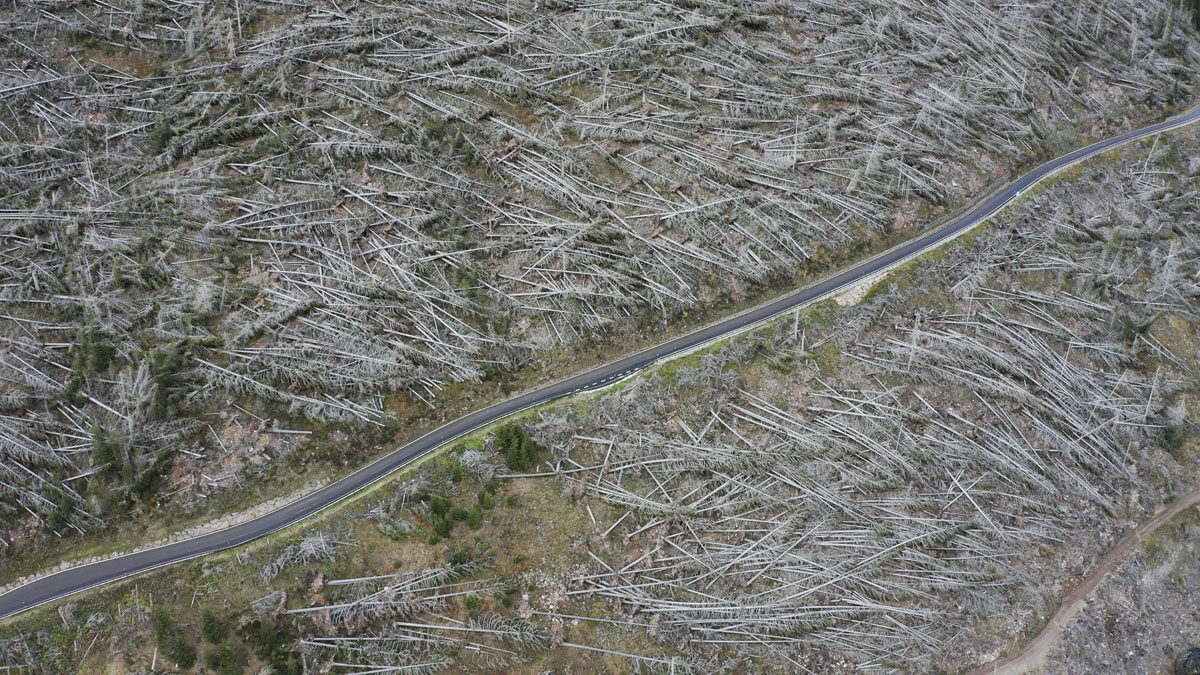
FORMAFANTASMA
1858, 2020
Video, 5’56’’
Courtesy Formafantasma and Serpentine Gallery, London
FORMAFANTASMA
https://www.formafantasma.com/1858 (complete video)
In-depth text by Matteo Garbelotto
In this double screening, the first video shows us the core drilling process. The figures along the bottom show the temperature changes in the Fiemme Valley, from the first year a tree is born, in 1858, until today. The second video shows the devastation caused by storm Vaia, which destroyed entire forests towards the end of 2018, felling over 13 million trees. This situation led to a number of questions being asked: how should the decomposition of these trees be managed, involving unexpected quantities of carbon dioxide being released into the atmosphere? How can the livelihood of the local communities be safeguarded? How can we learn from the past, reintroducing a greater variety of species into our forests?

H. A. BERLEPSCH
Les Alpes. Descriptions et Recits (‘The Alps. Descriptions and Reports’)
Bale & Geneve, Paris 1869
Biblioteca Nazionale del Club Alpino Italiano (‘National Library of the Italian Alpine Club’)
H. A. BERLEPSCH
For this German writer, the ancient forests of the central Alps provide the most truthful depiction of the power of vegetation when left to its own devices, showing the productive force of nature. In 1868, Hermann Alex von Berlepsch enthusiastically described this area, where decay and death continuously alternate with rebirth and life, where nature’s storms and avalanches clear space for bustling mushrooms and lichen and the regenerative action of insects and parasites. The work of this German writer - who had seen virgin forests already becoming rare towards the mid-19th century - highlights their protective aspect and poses a number of questions as to how to manage and ensure the quality of these ecosystems.
Reproduction of the original text on Stone Paper, thanks to the collaboration with L’Artistica Savigliano.

GABRIELA ALBERGARIA
Landscape in Repair #5, 2020
Drawing on Heritage Wood free Book white paper, 84x114,5 cm, two elements
Courtesy Vera Cortês, Lisbon
GABRIELA ALBERGARIA
https://www.gabrielaalbergaria.com/These drawings are the fruit of a journey completed by the artist in 2012, along the Californian coast. The purpose of this trip was to visit today’s existing secondary forest areas, which have mainly been transformed into park areas or national forests. Faced with almost apocalyptic scenes, made up of huge trees that had fallen and were partially rotting away, the artist observed how a natural environment free from any human exploitation could regenerate itself. The drawings, based on a series of photographs, depict a section of forest full of organic matter, ready to transform itself. This piece is like a window overlooking the area in question, where the dimensions of the subject and the concept of ‘macro’ and ‘micro’ are of fundamental importance.
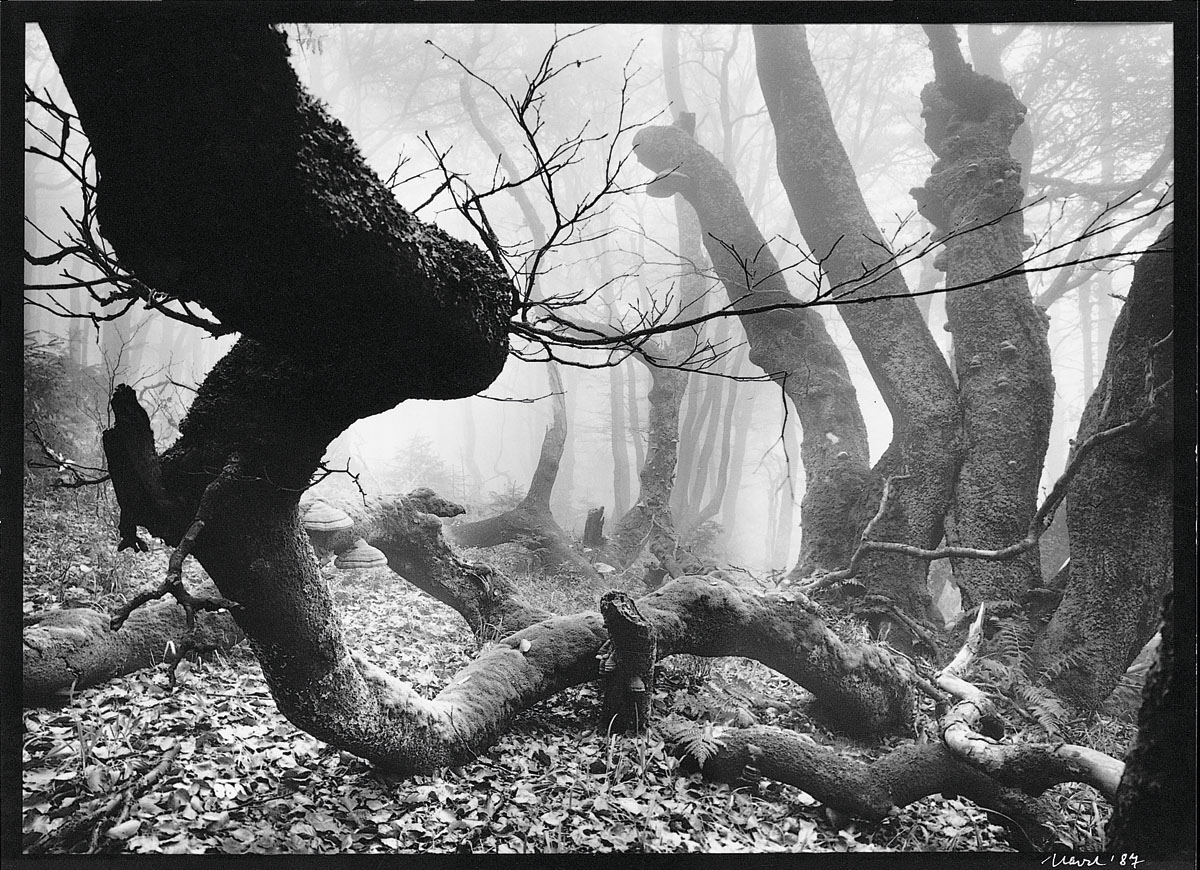
JIŘÍ HAVEL
Krkonose Cecoslovacchia Monti dei giganti, 1987
Toned silver bromide-gelatine print, 39,5x28,5 cm
Centro Documentazione Museo Nazionale della Montagna - CAI Torino (‘Resource Centre of the National Mountain Museum (Museo Nazionale della Montagna) – CAI (Italian Alpine Club) Turin’)
JIŘÍ HAVEL
https://www.jirijiru.com/Jiří Havel uses photography as a tool to analytically discover every single corner of the forests he enjoys exploring in the north of Bohemia, on the border with Silesia. His interest in the natural world led him to photograph details of trunks, trees and shrubs, moss and other natural and phytomorphic elements, whose aesthetic charm is really brought out in his black and white images. These images show a series of Fomes fomentarius fungi (rotting agents) clinging onto the horizontal trunk of a dead tree. This type of fungi is fruit-bearing and lives for a number of years, shaped like a horse’s hoof (also known as ‘ungulate’); these fungi can grow to a size of up to 40 cm and are part of the large group of wood-rotting fungi.
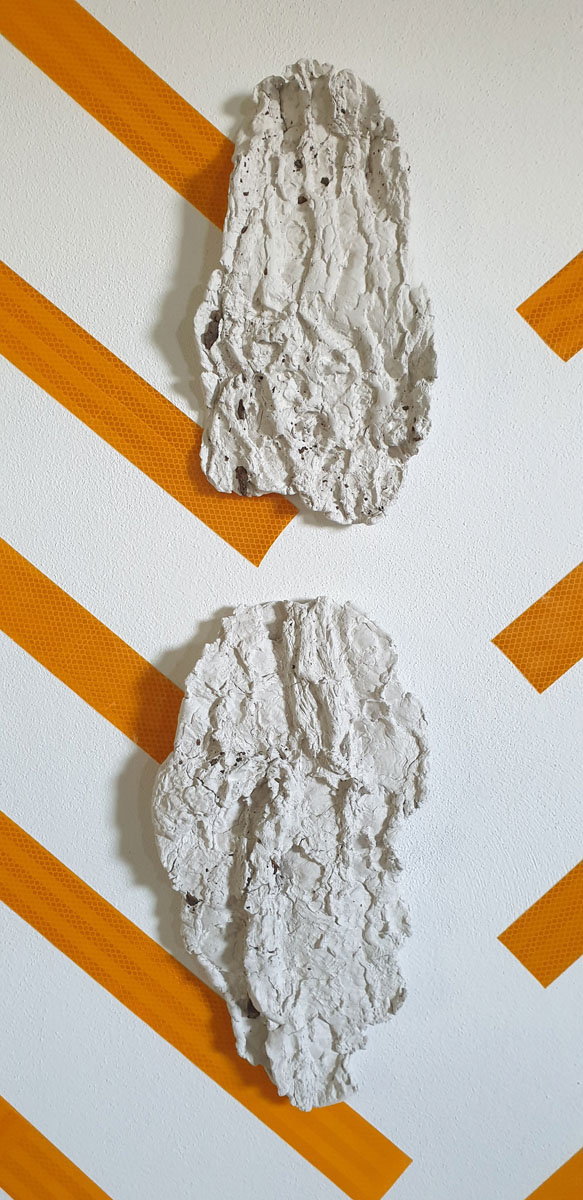
GIORGIA SEVERI
Can’t see the forest for the trees, 2020
Mixed media, environmental dimension
Courtesy the artist
GIORGIA SEVERI
http://www.giorgiaseveri.com/The reflective sticker forest created by the artist presents an alarming image of an emergency. Starting from the Italian peninsula, Giorgia Severi presents a series of sculptures and frottage work representing the bark of trees in danger of extinction, as well as non-native plant species introduced by humans. Through a global overview, underlining the need to understand that the world is one huge, single living organism, the artist highlights the relationship between anthropic impact and contami- nated landscapes, native species and non-native species, inviting us to reflect on the concepts of interference and biodiversity, with the latter representing an essential factor for well-balanced terrestrial and marine ecosystems.
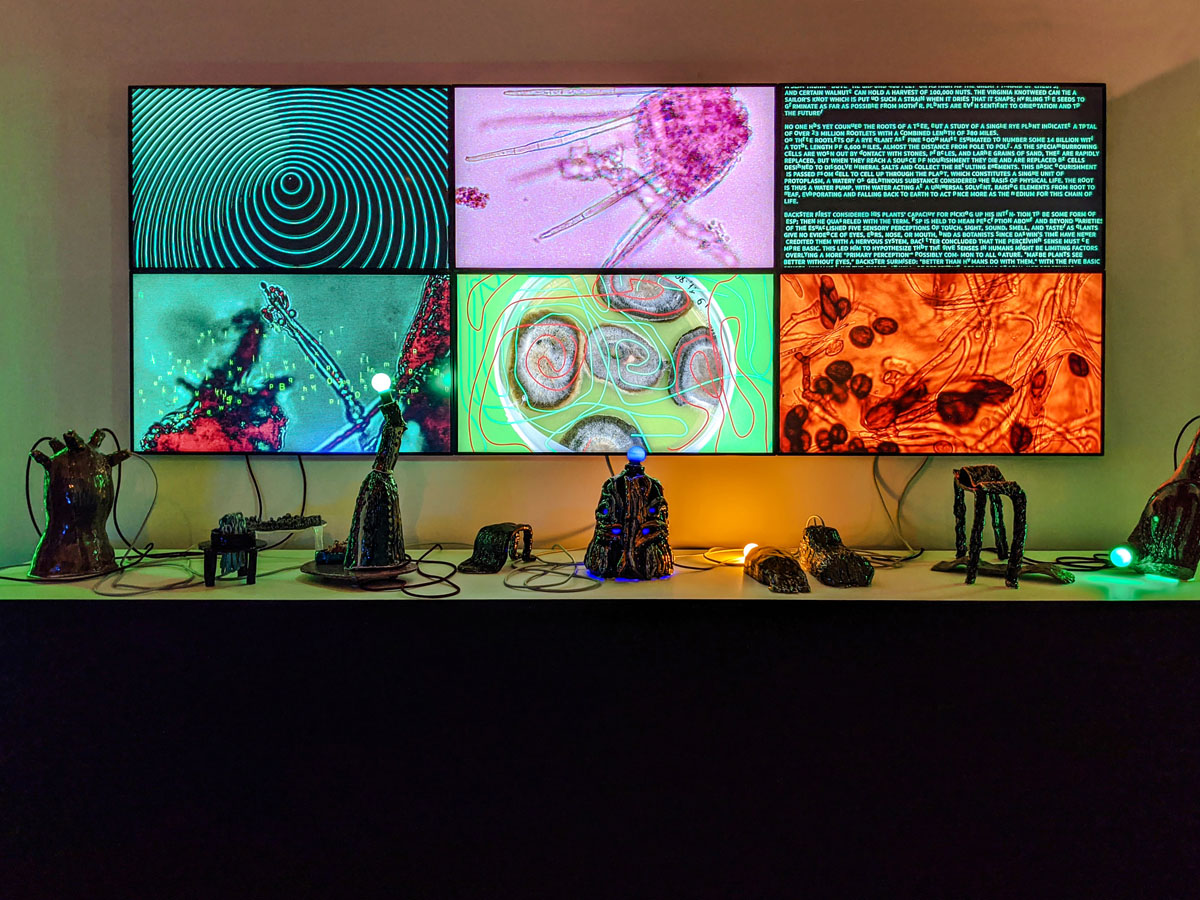
GIUSY PIRROTTA
The Secret Life of Plants, 2019-2020
Mixed media, environmental dimension
Courtesy the artist
GIUSY PIRROTTA
http://www.giusypirrotta.com/In-depth text by Maria Lodovica Gullino
In-depth text by Nicola La Porta
The aim of this piece, made up of a series of patterns, video images and ceramic sculptures, is to provide an ideal representation of how communications happen in the plant world. Giusy Pirrotta, working with the researcher Nicola La Porta from the Edmund Mach Foundation, deals with the topic of pathogens in the areas affected by storm Vaia. Fungi such as the Heteroba- sidion annosum or the Armillaria mellea spread through underground communication channels (spores), from the fallen trees to the healthy ones, causing the latter to die. Side effects linked to global warming make it easier for them to proliferate, significantly increasing the already disas- trous impact of this single weather event.
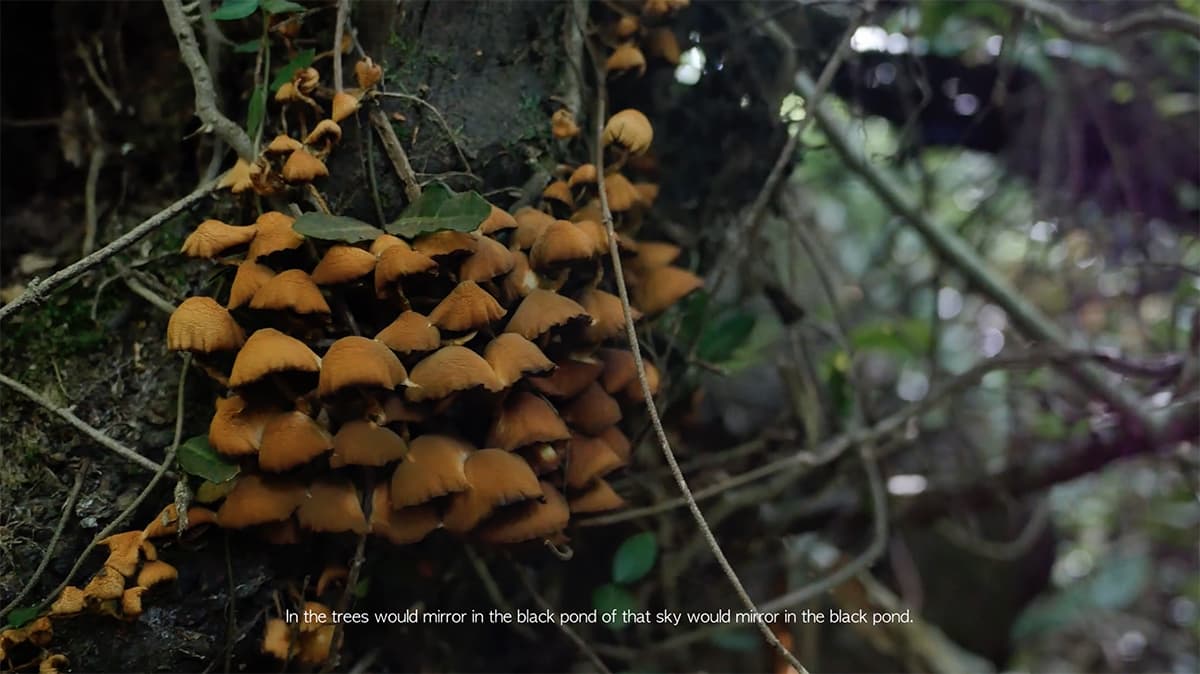
SUNMIN PARK
Architecture of Mushrooms , 2018
Single channel video, 15’18’’
Courtesy the artist
SUNMIN PARK
https://www.parksunmin.com/Text of the video Architecture of Mushrooms
This video was shot from a low vantage point and provides slow motion footage of mushrooms growing in the Gotjawal forest, Jeju, Korea, over the course of 2017. The images of the different types of fungi, some of which are pathogenic, are accompanied by 13 narrations about archi- tecture by Korean and foreign architects. Mushrooms play an essential role in the forest’s ecological cycle of creation and decay. On the other hand, they are a living being, with an architectural structure made up of a column and a roof. In today’s historical context, the presence of mushrooms - sometimes in contrast to and at other times working in harmony with the concept of architectural stability - inspires onlookers to imagine a new, constructive relationship between humans and nature.

MALI WEIL
Forests I The revery alone will do, 2020
Installation, mixed media
Banners (digital printing on fabric, wood), creatures (cotton, wool, minerals, synthetic thread), inkjet print, digital audio (11’)
Courtesy the artist
MALI WEIL
https://www.maliweil.org/This piece is designed as a space open to people’s imagination. The installation is made up of heterogeneous elements, held together by an audio narration, inviting visitors to re-imagine their relationship with ‘otherness’ and to leave behind the concept of humans being as individuals who live on earth, instead recognising them as being inhabitants-inhabited within a fragile world. This piece interprets the concepts of intermingling and coexistence, in an attempt to overturn the conventional way of understanding our being in the world. How can we reconfigure our presence in a network of complex ecosystems? What other relation- ships, languages and political scenarios are possible for the future? These are just some of the questions guiding this artist’s research.
With words and thoughts of B. Albert, E. Coccia, P. Descola, V. Despret, S.F. Gilbert, D. Haraway, D. Kopenawa, B. Morizot, A.L. Tsing.
The exhibited pieces of the Companions series are: Albero Madre (fabric, wool, cotton, nylon thread, copal) and Artemide Efesia (fabric, wool, cotton, nylon thread, quartzite).
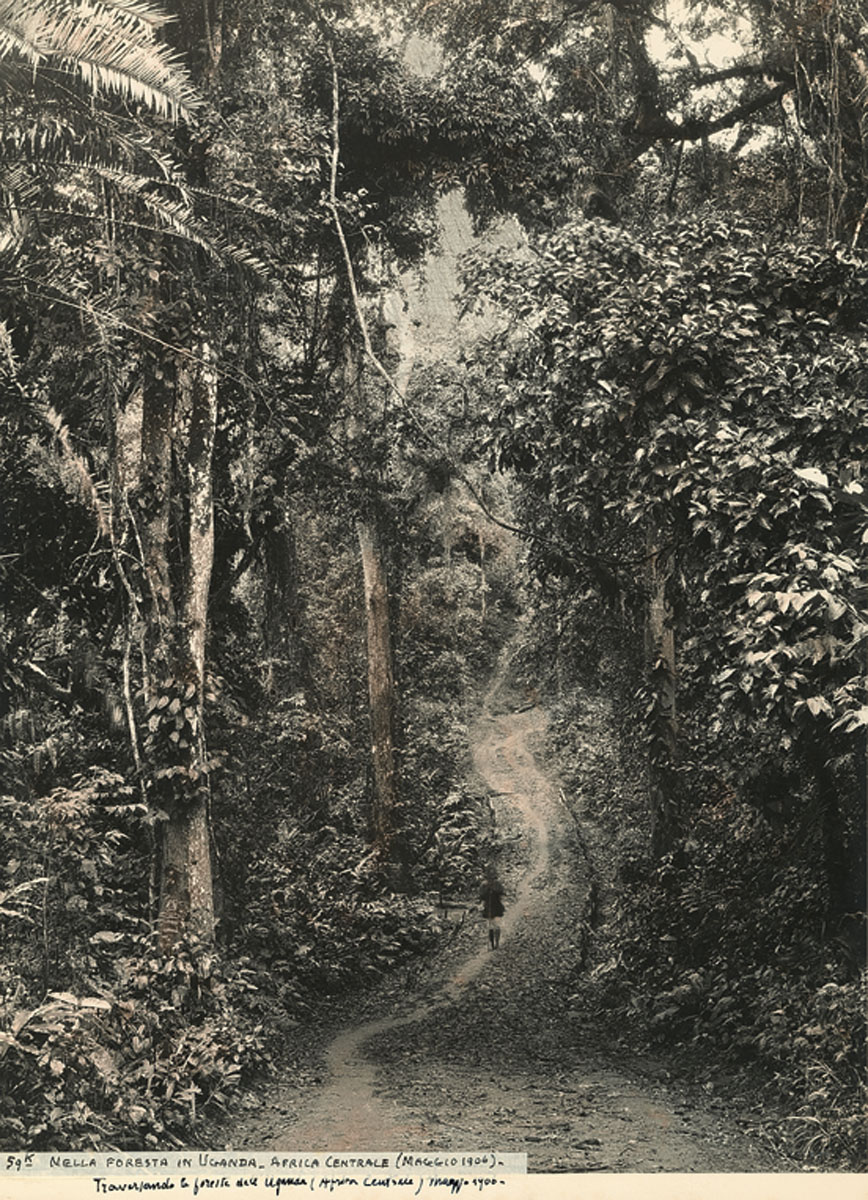
VITTORIO SELLA
Traversando le foreste dell’Uganda (Africa centrale). Maggio 1906 (‘Crossing the forests of Uganda - Central Africa. May 1906’), 1906 [shot], 1934-1940 (print)
silver bromide-gelatine prints with two-tone shading, 39,5x30 cm
Centro Documentazione Museo Nazionale della Montagna - CAI Torino (‘Resource Centre of the National Mountain Museum (Museo Nazionale della Montagna) – CAI (Italian Alpine Club) Turin’)
VITTORIO SELLA
In 1906, Luigi Amedeo di Savoia, Duke of the Abruzzi, conquered the highest peaks of the Lunaes Montes, the vast Ruwenzori massif in the region of the Great African Lakes, on the border between Uganda and today’s Democratic Republic of the Congo. As a member of the expedition, Vittorio Sella was particularly focused on photographing the indigenous people, without neglecting to point his lens toward the dense, plant-based ecosystem that flourished there, bursting with primordial charm Impressive trees, resembling gigantic candelabra, emerge from forests of dense and contorted heather, blending in with an undergrowth full of spongy moss and pendulous lichen.
